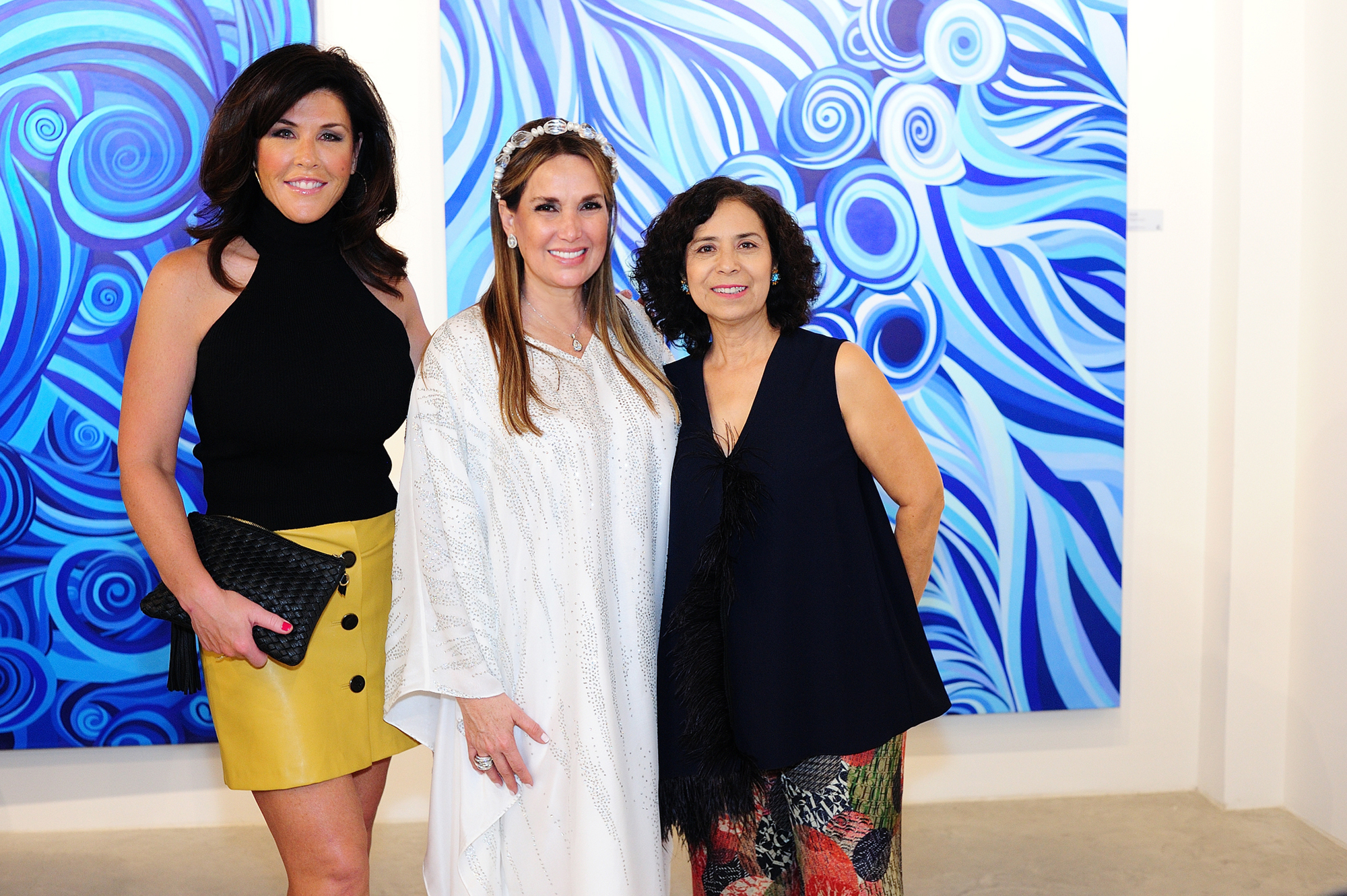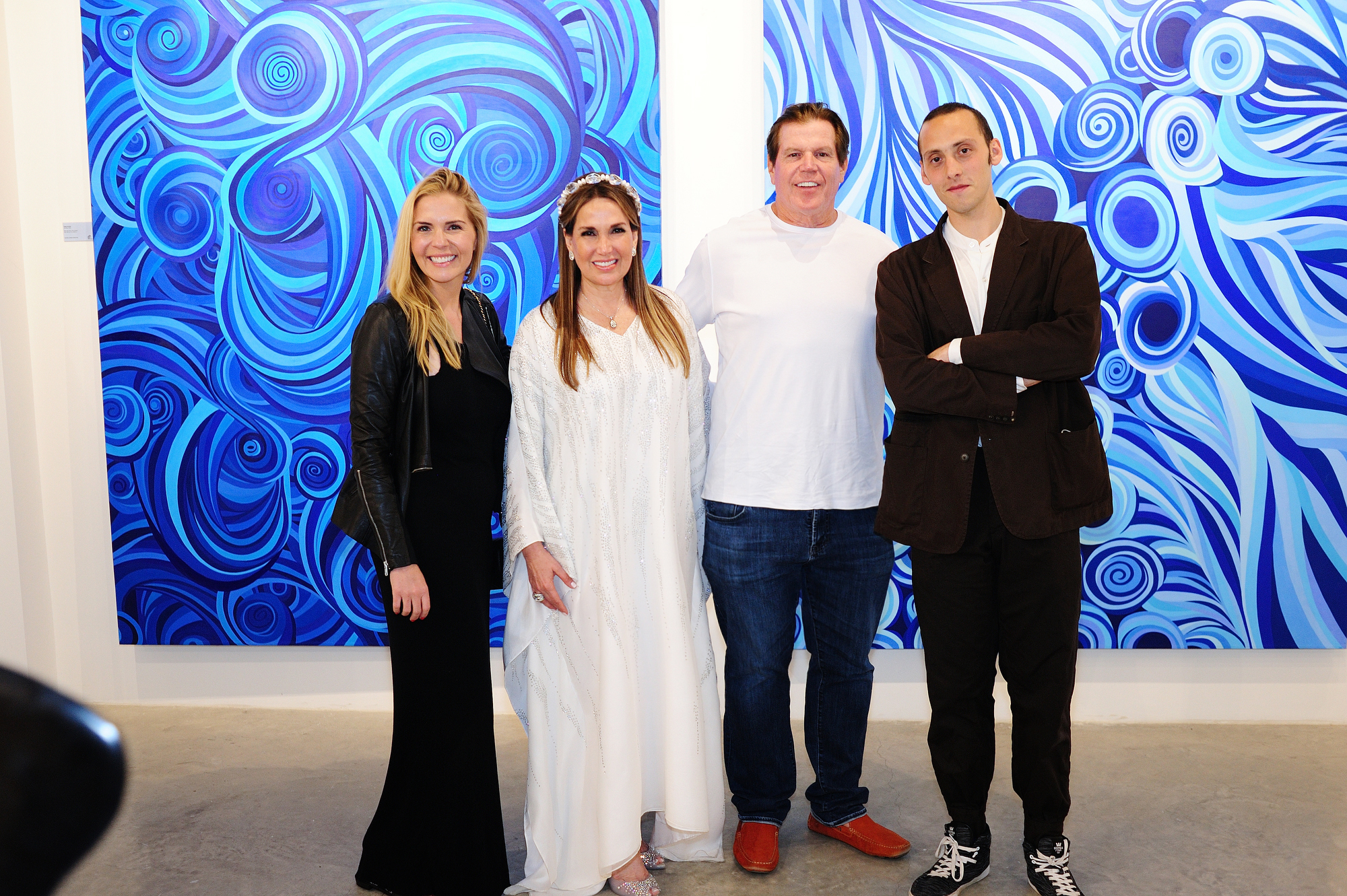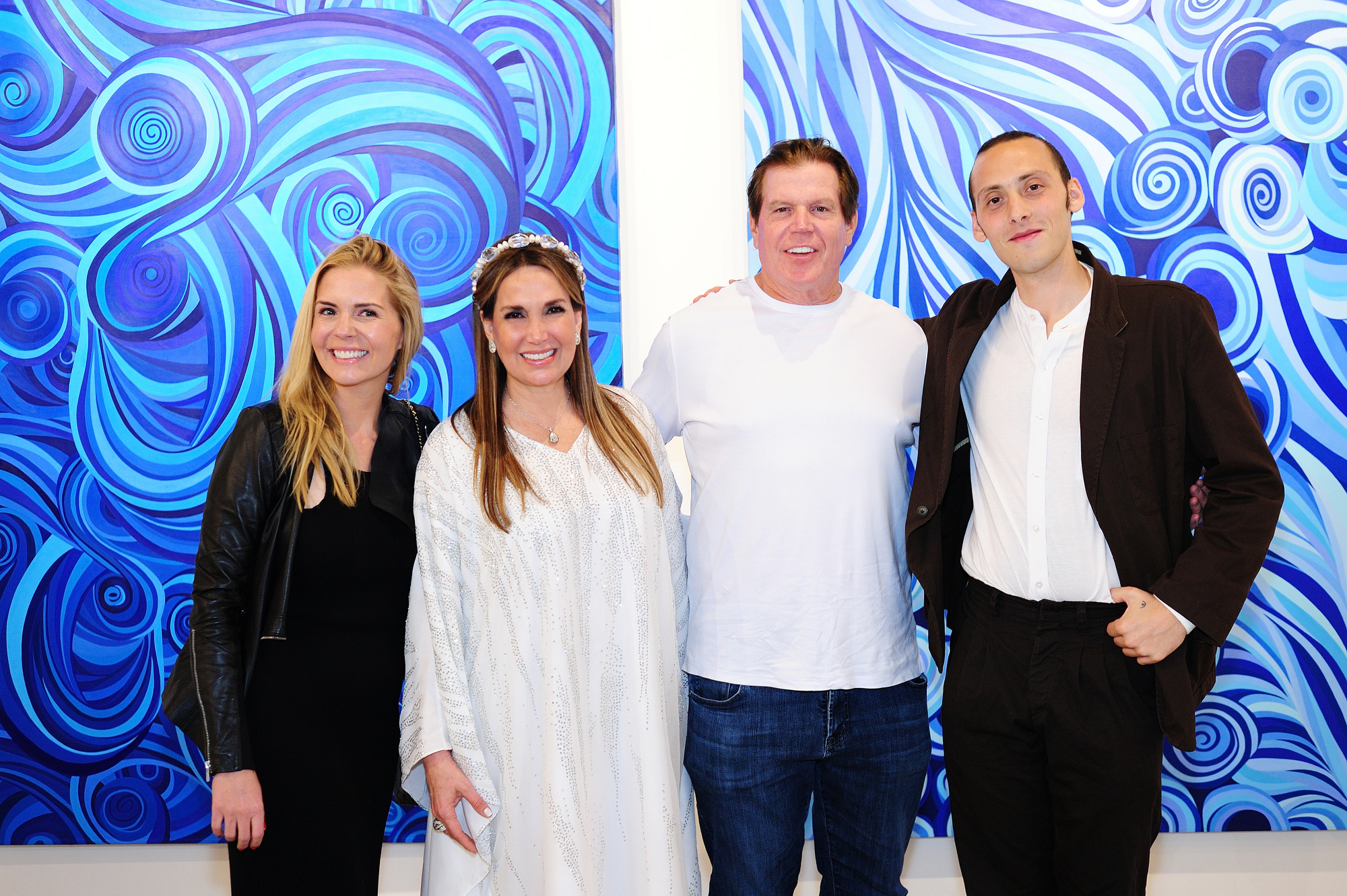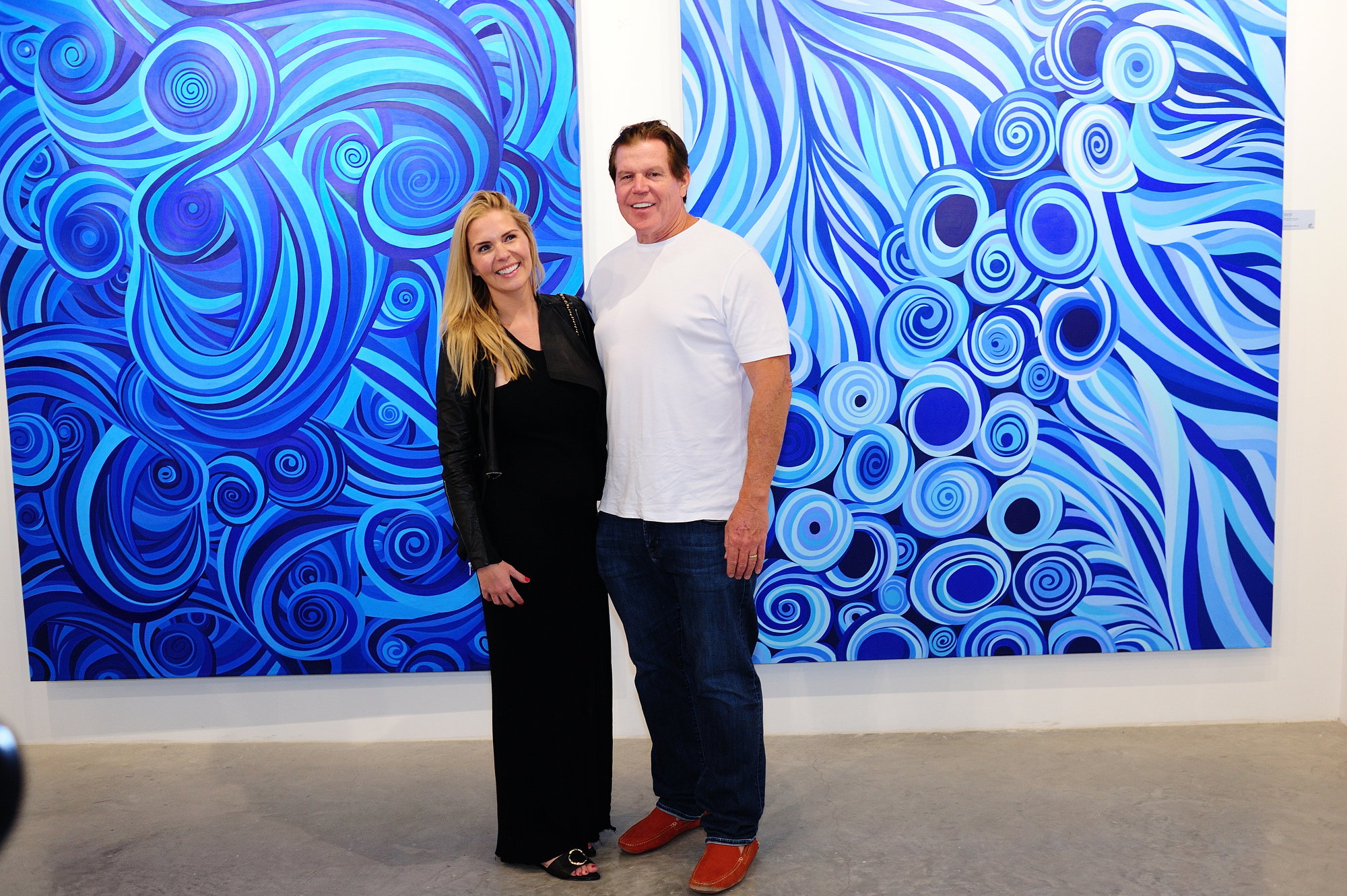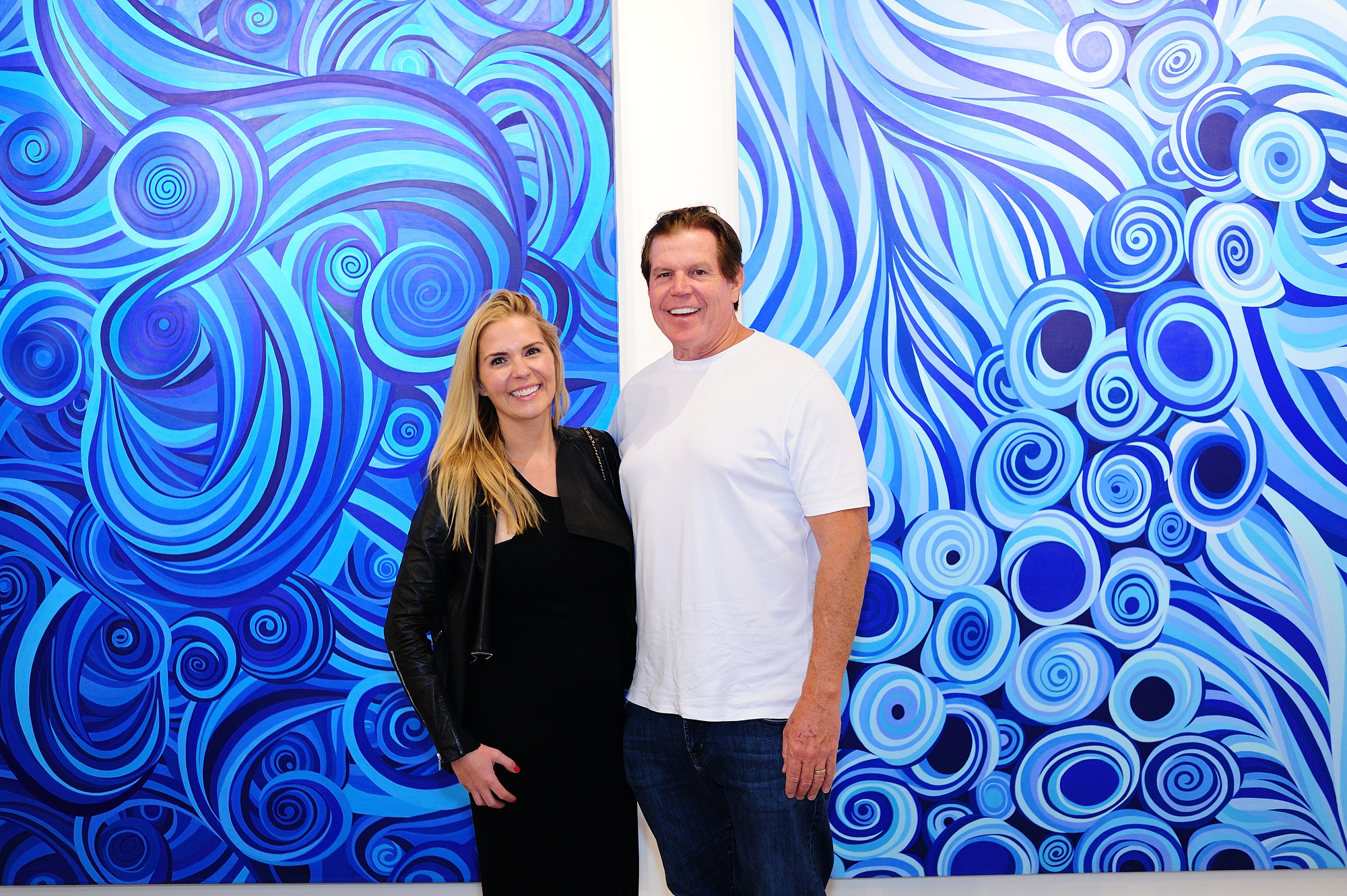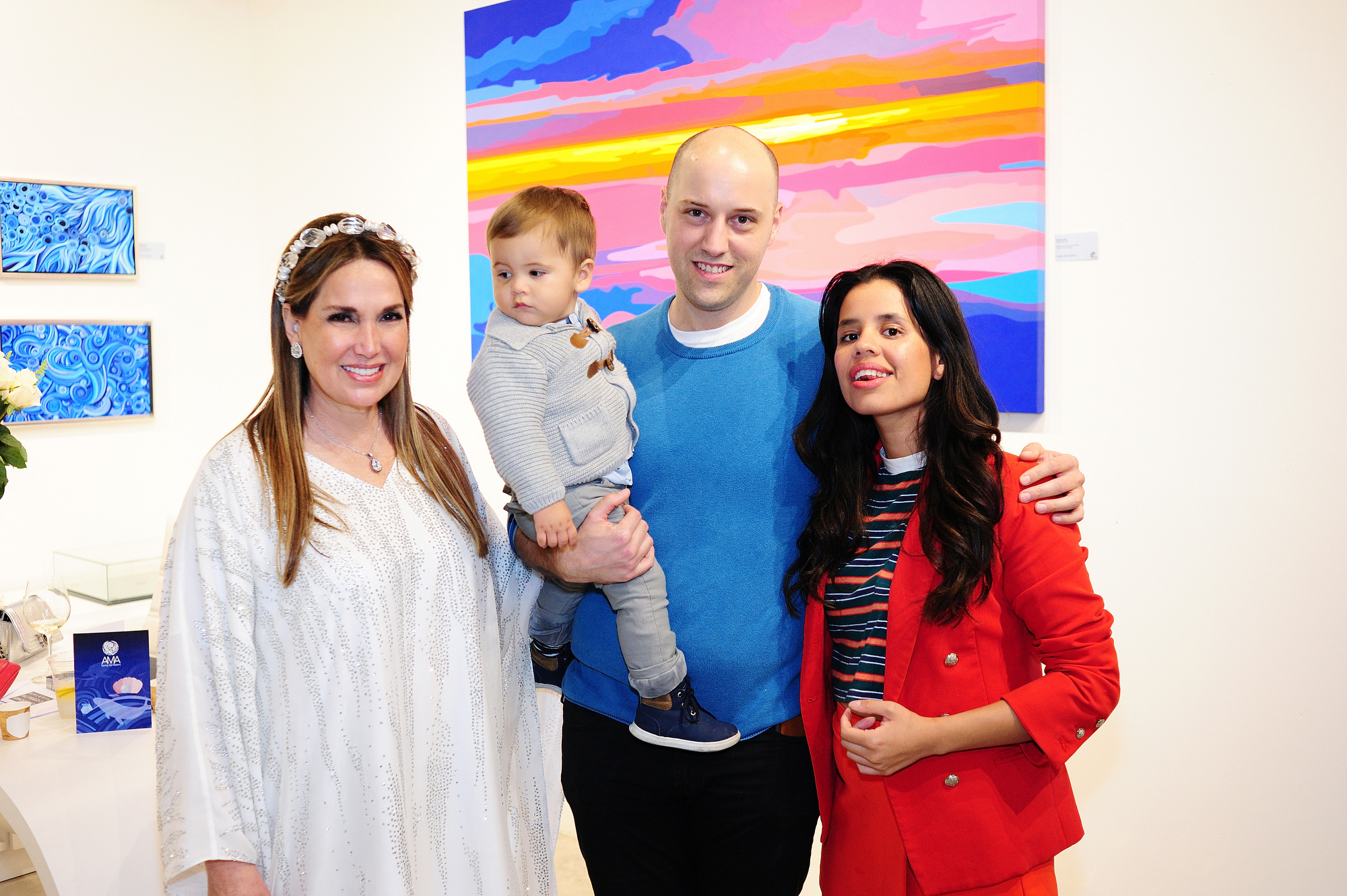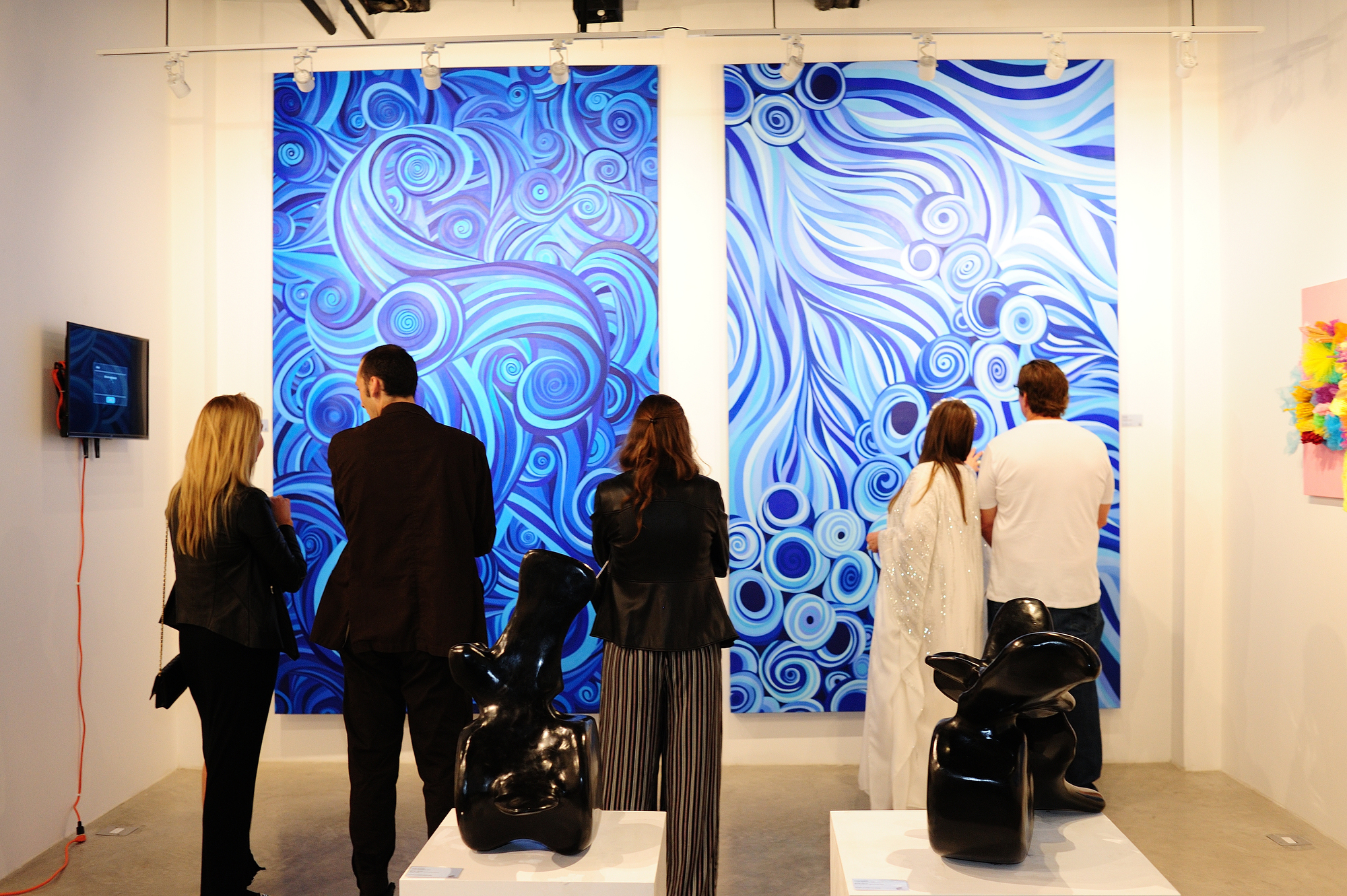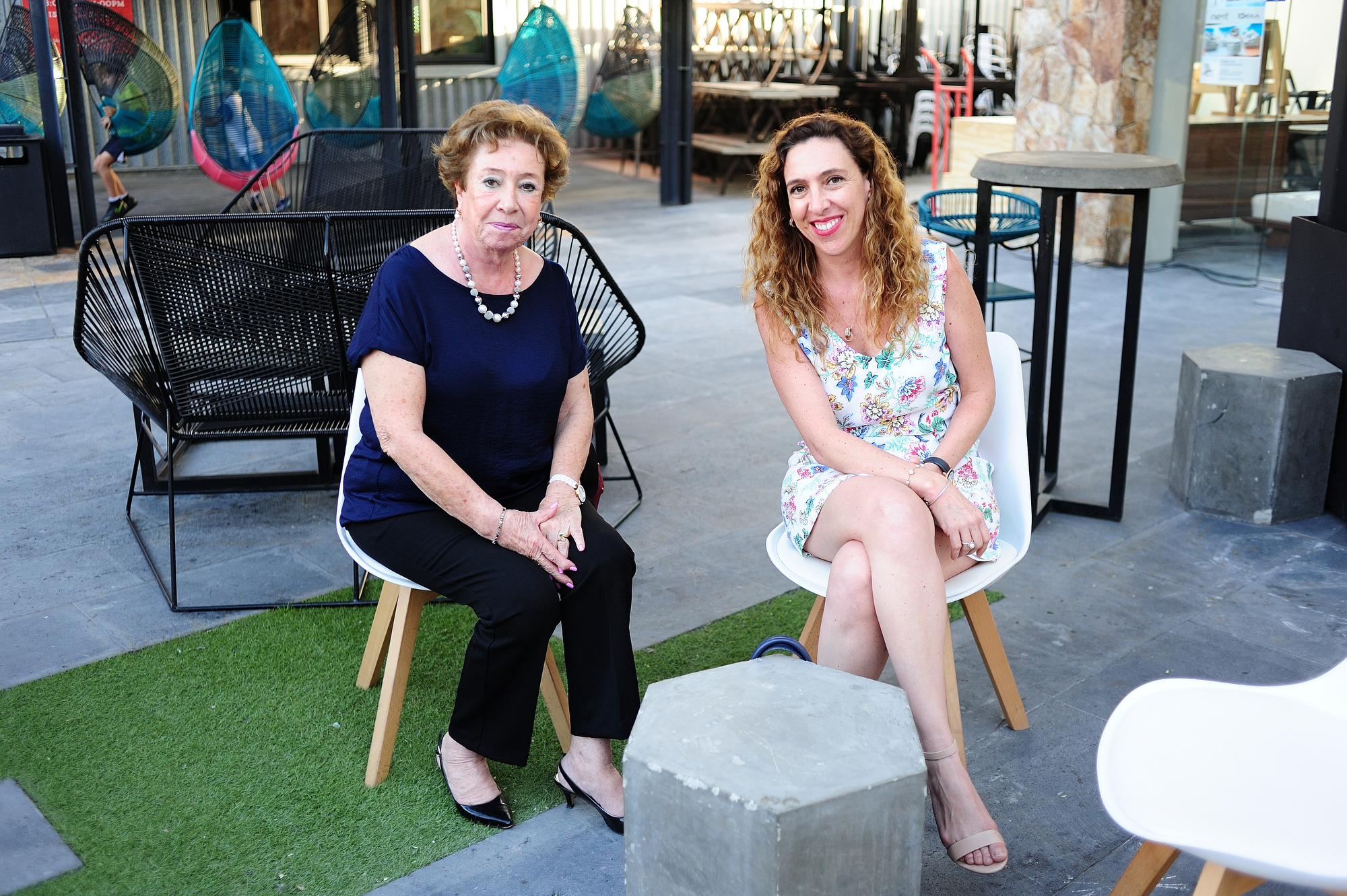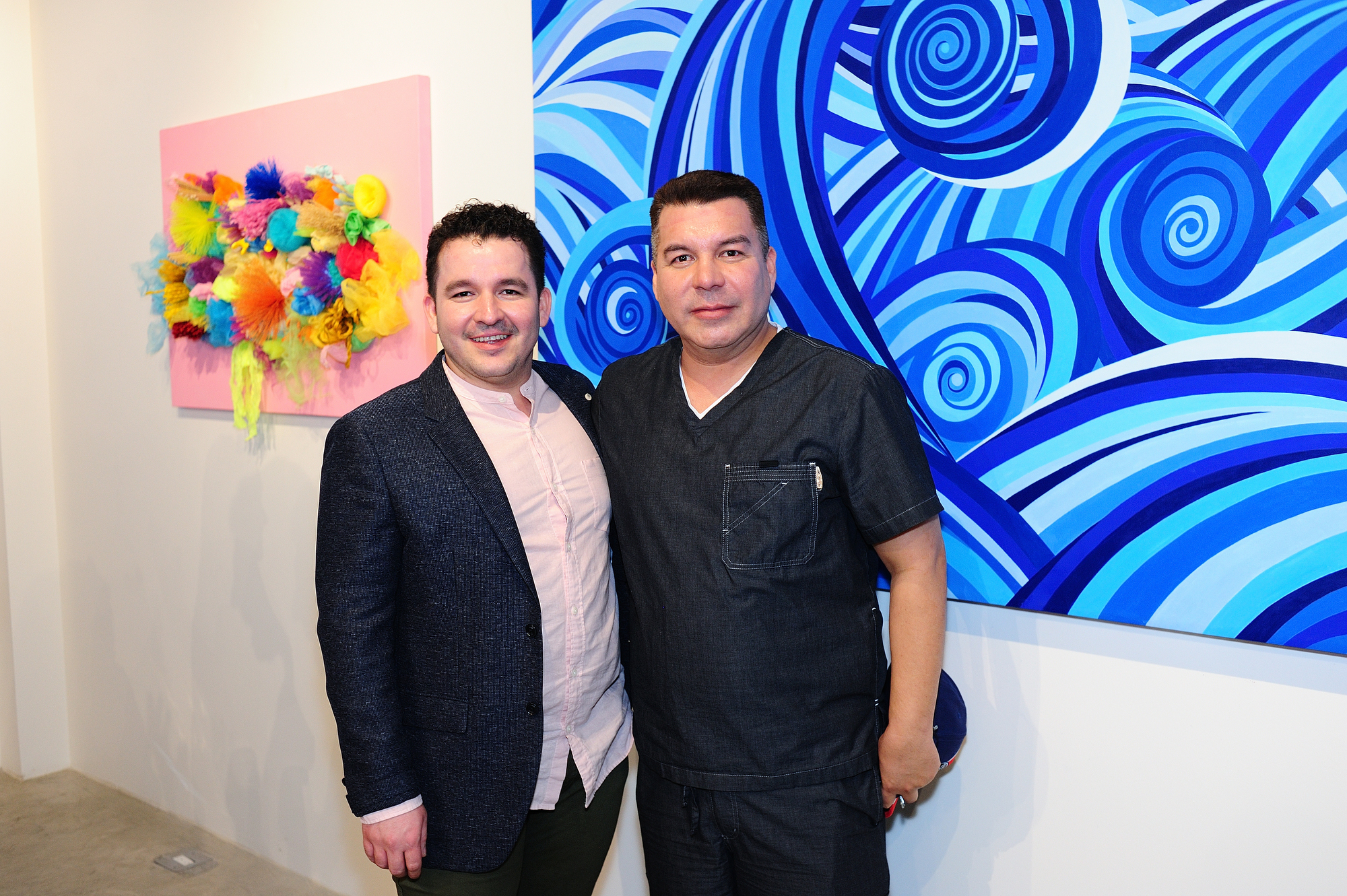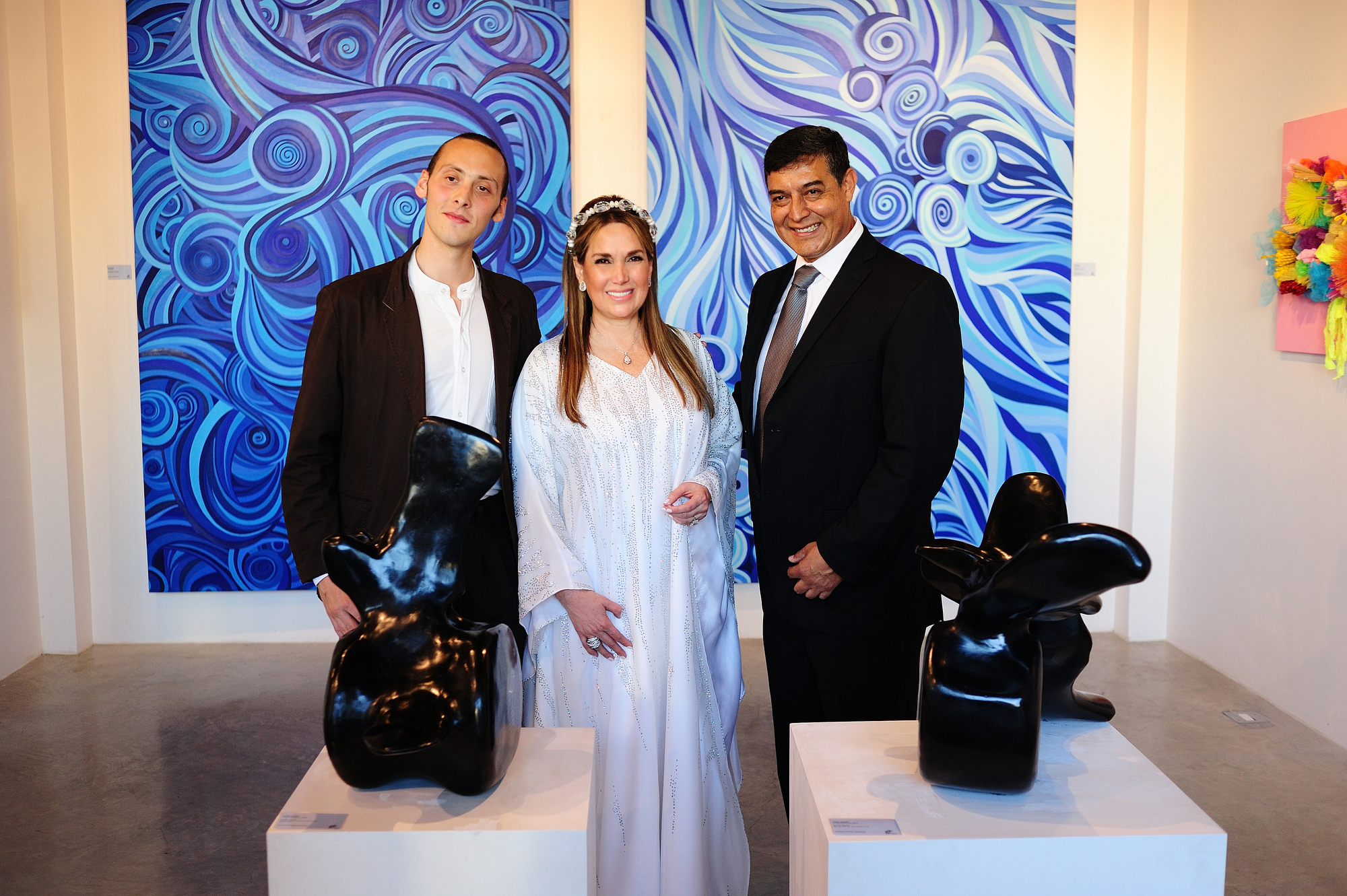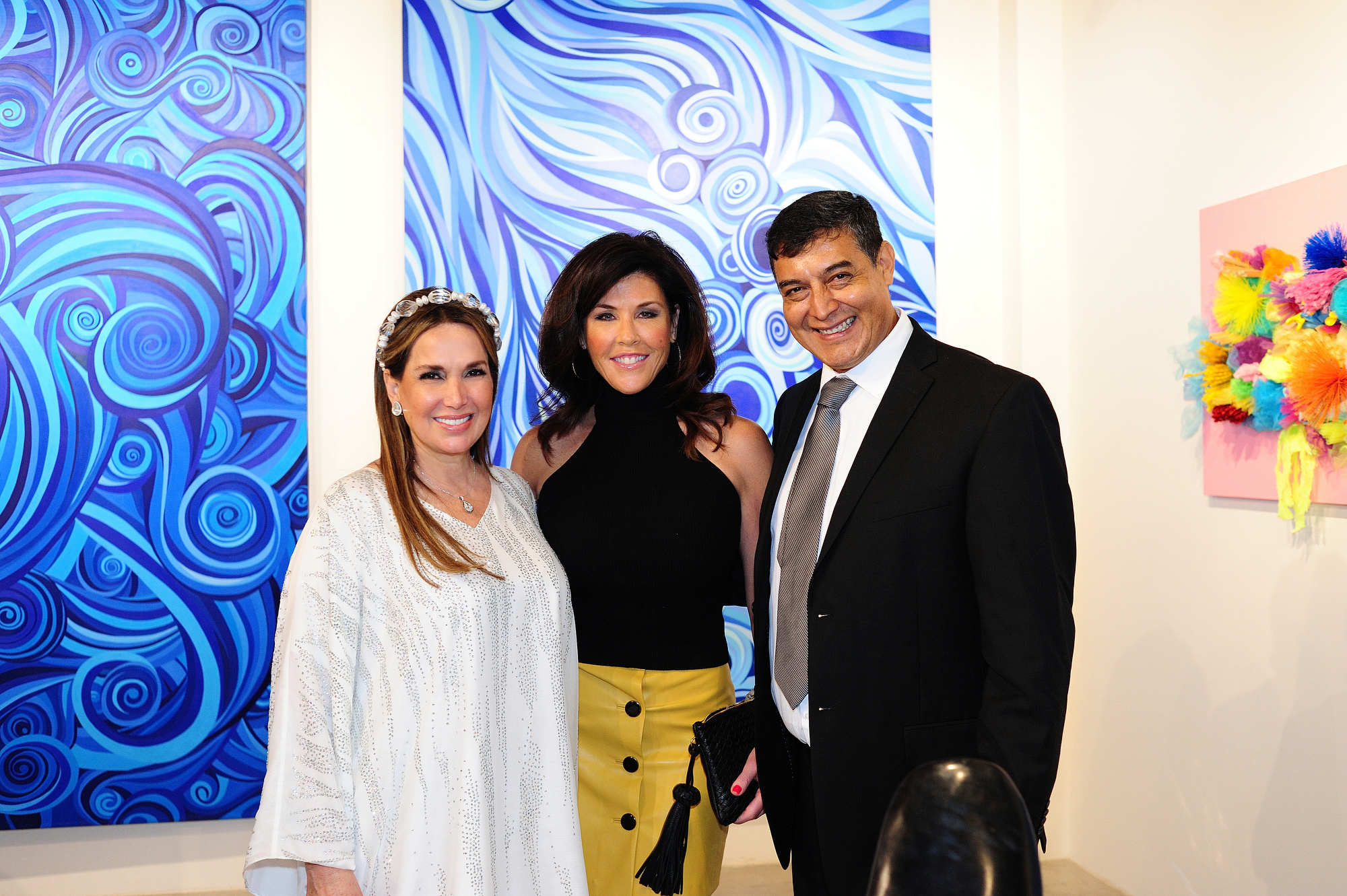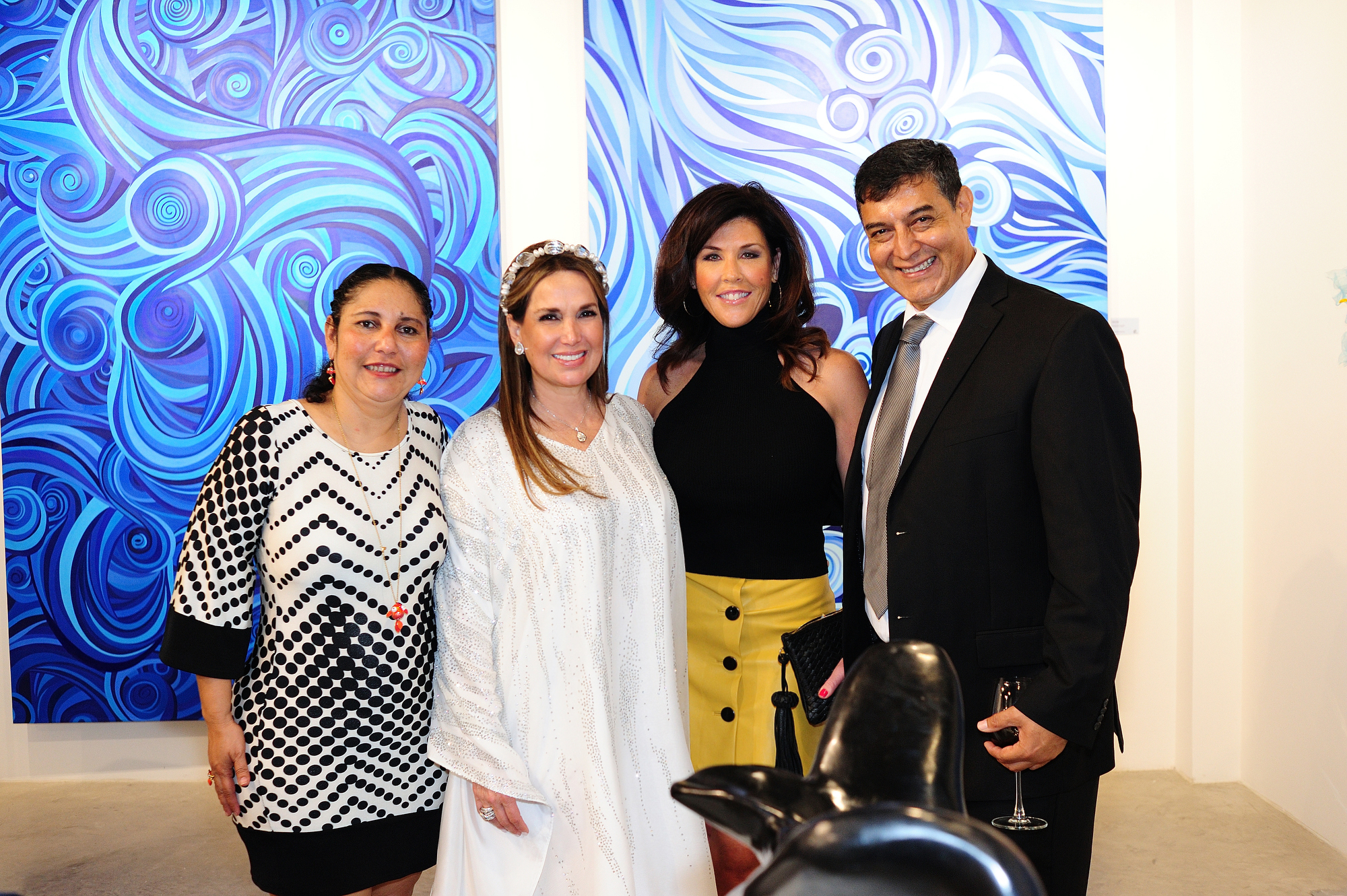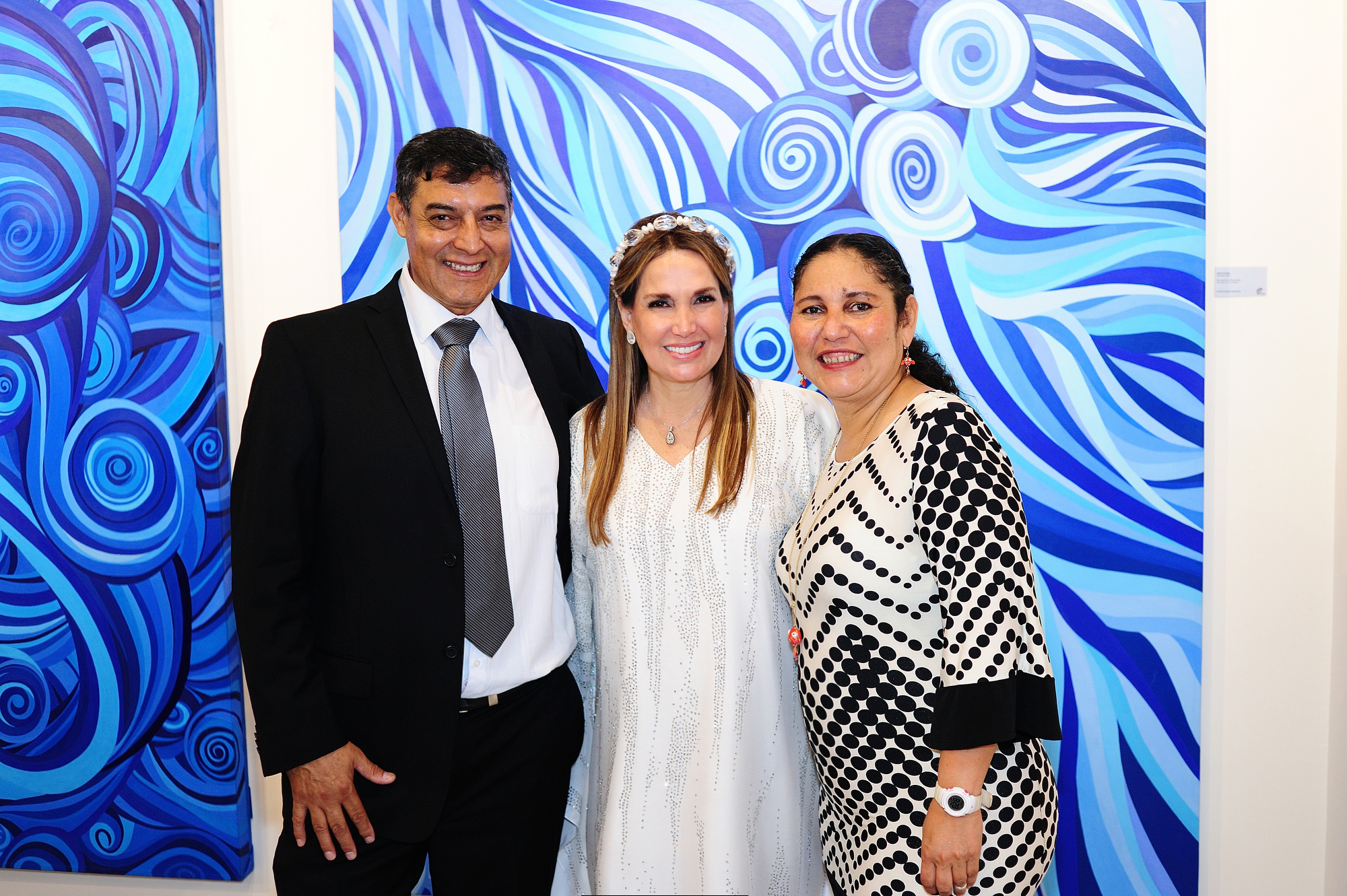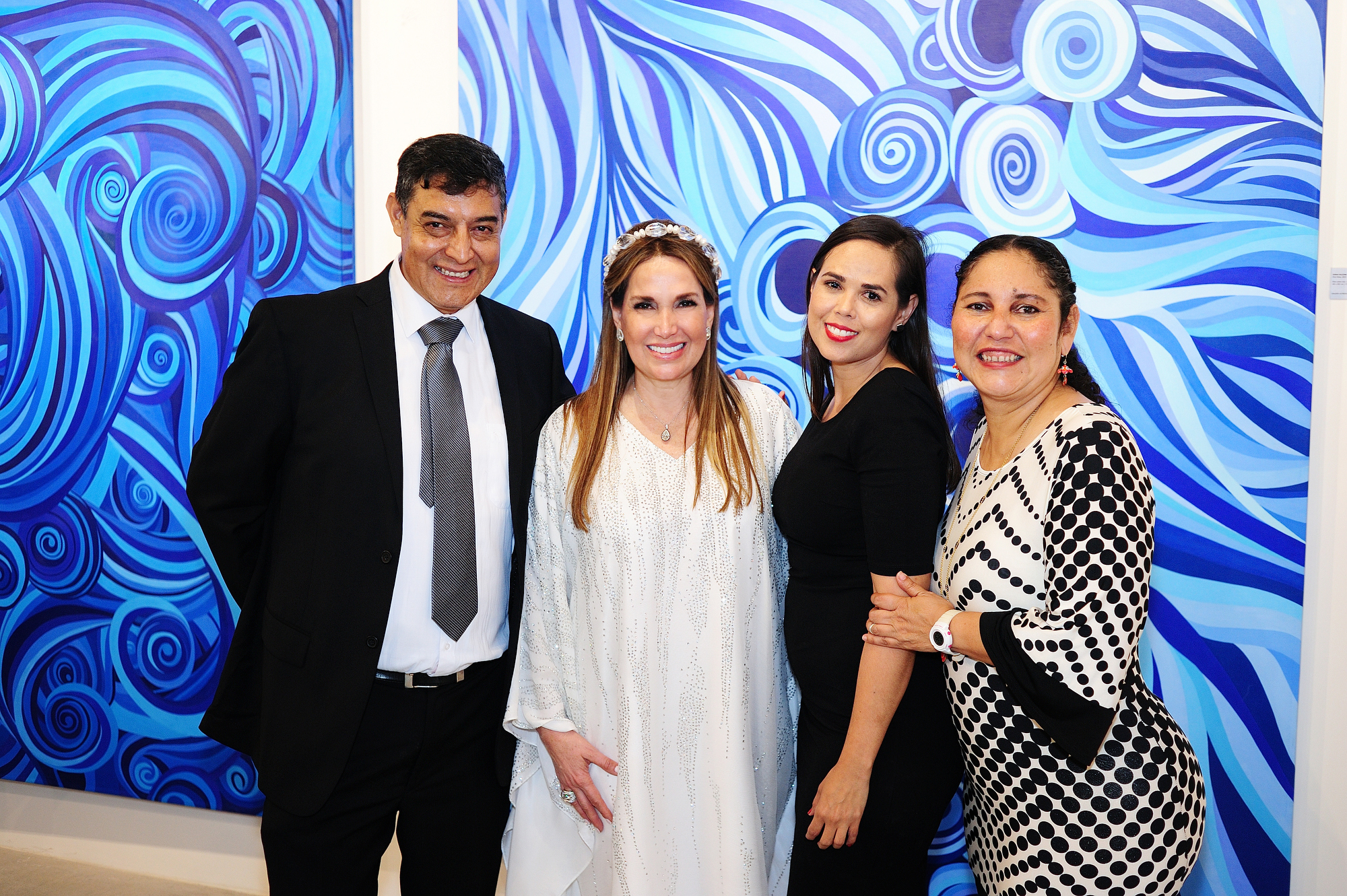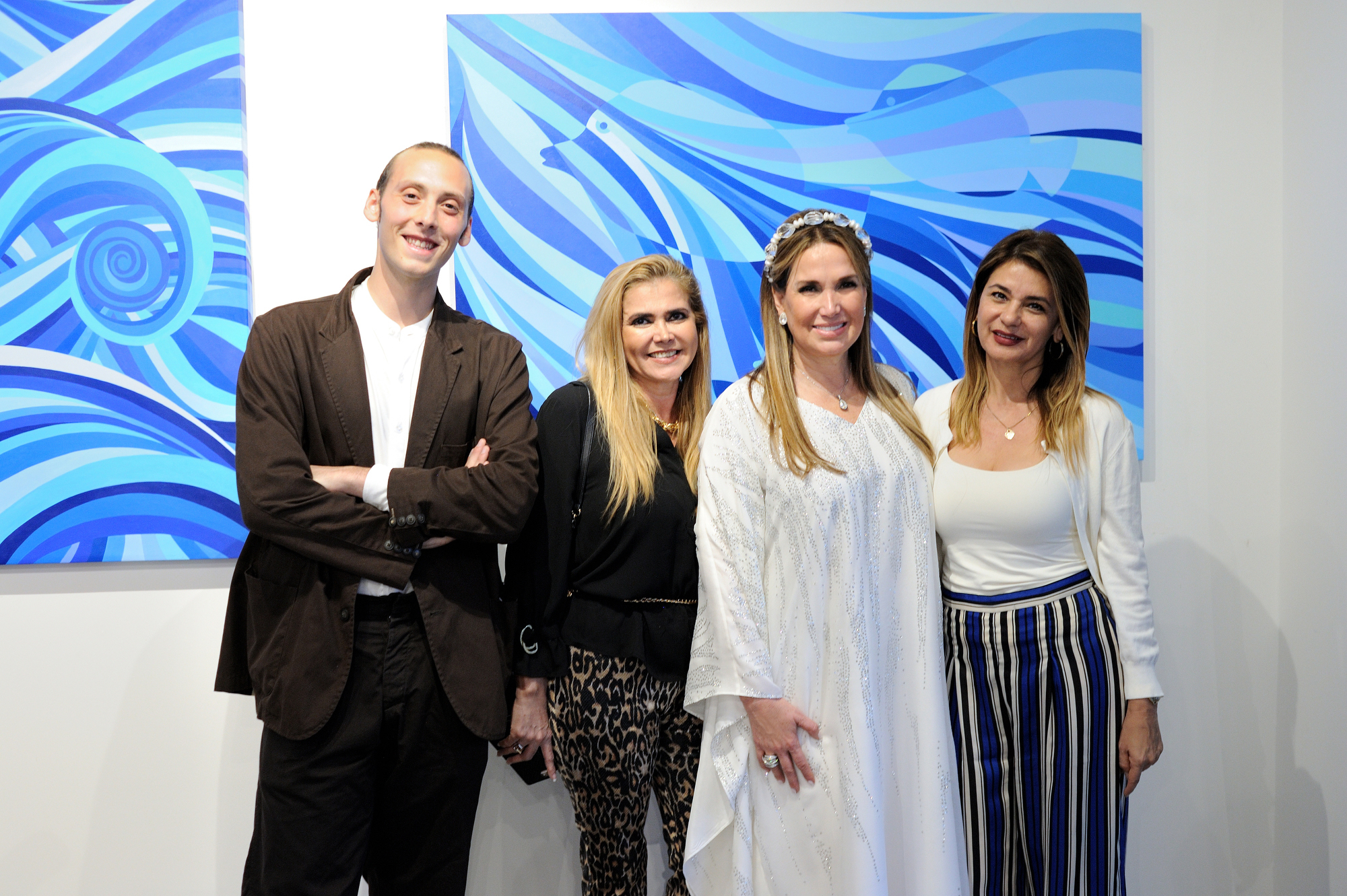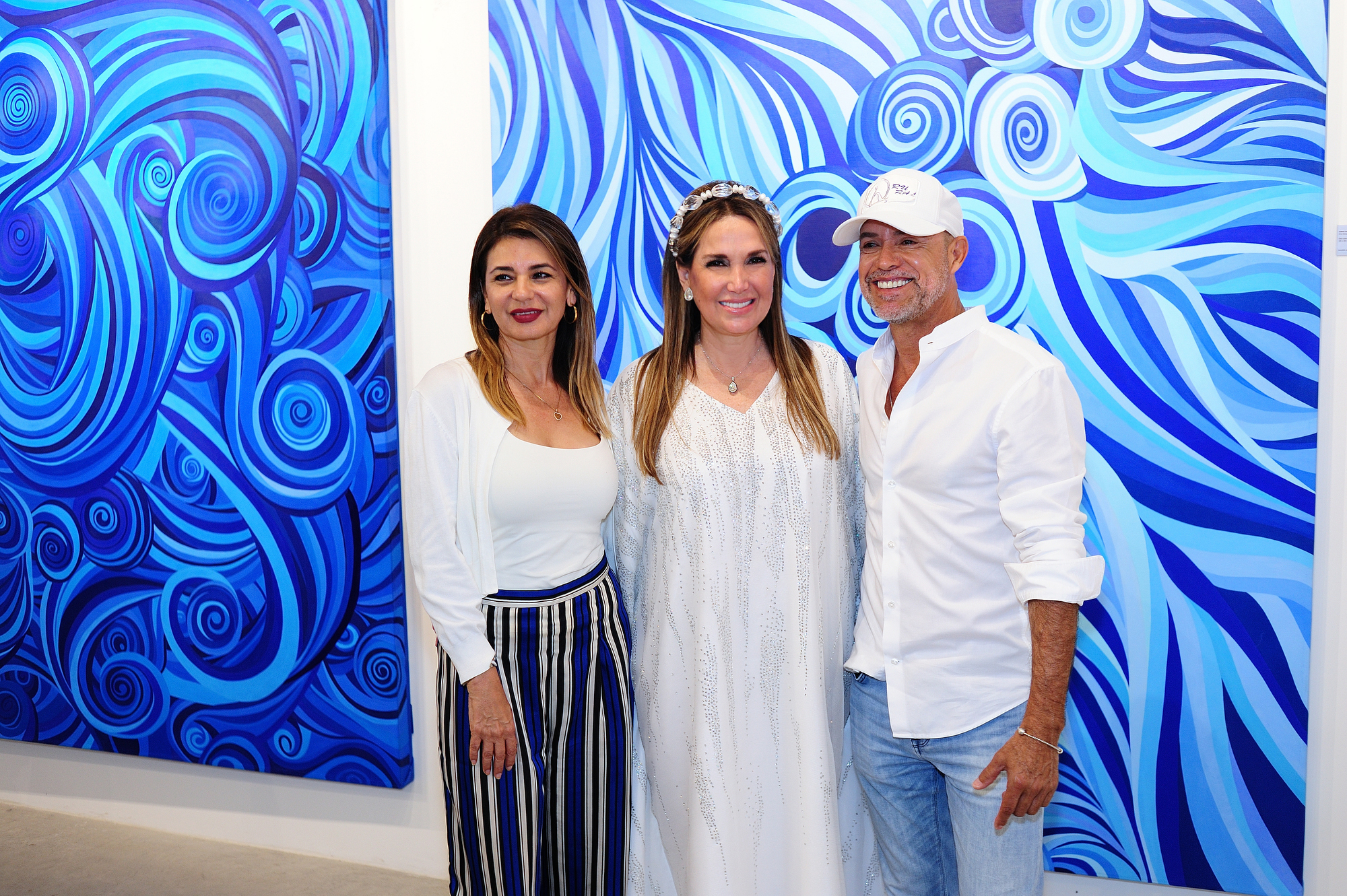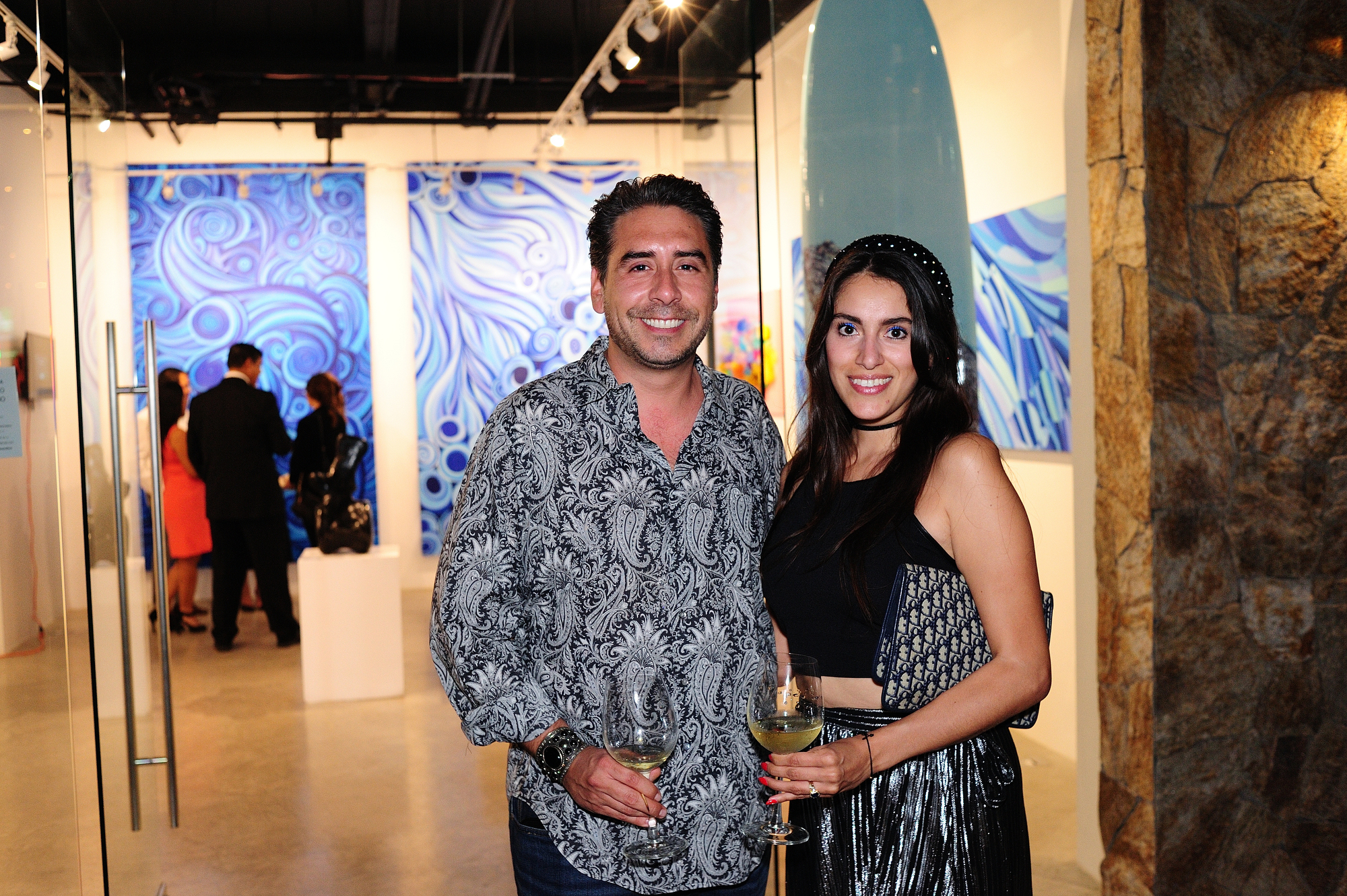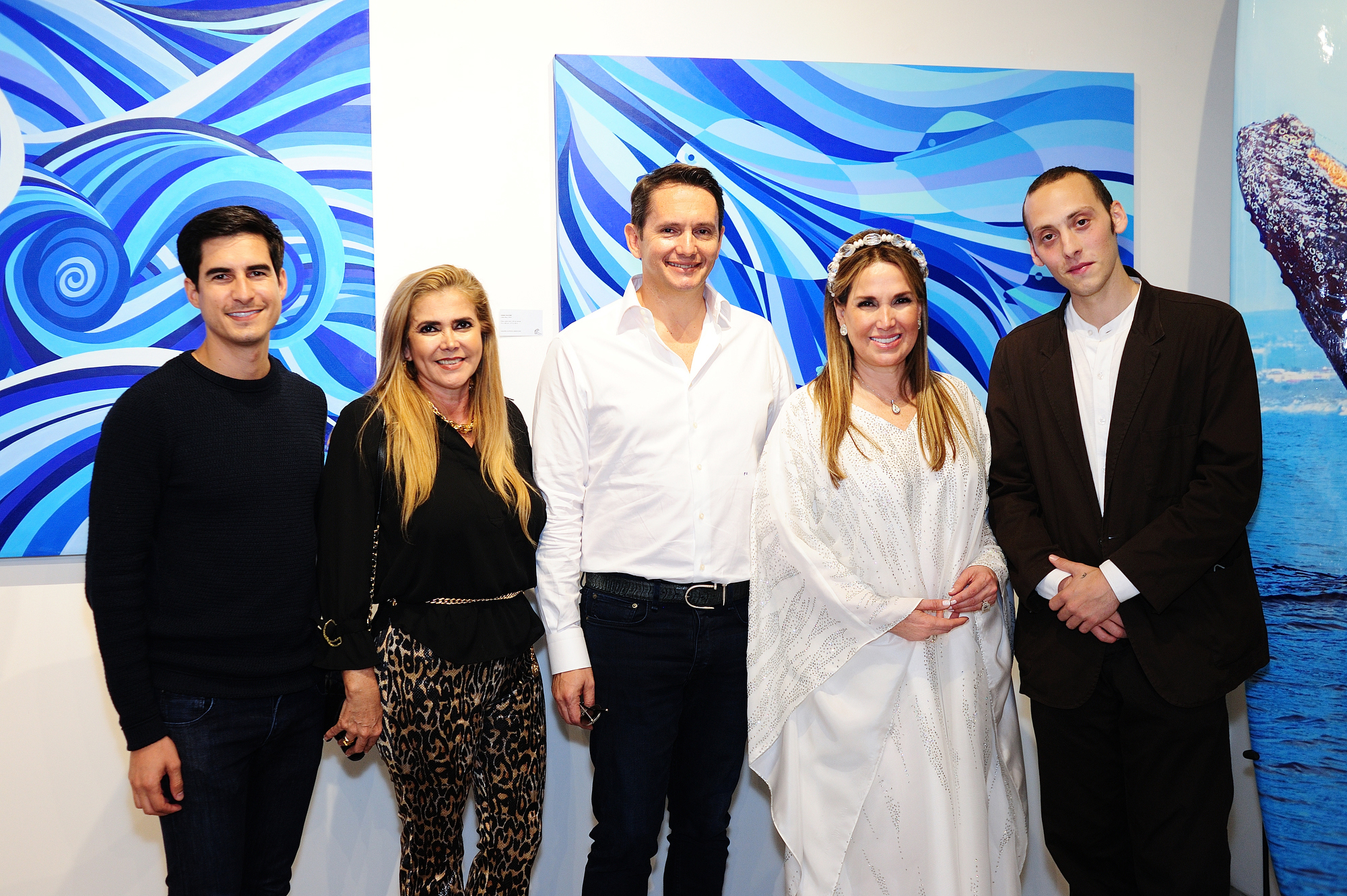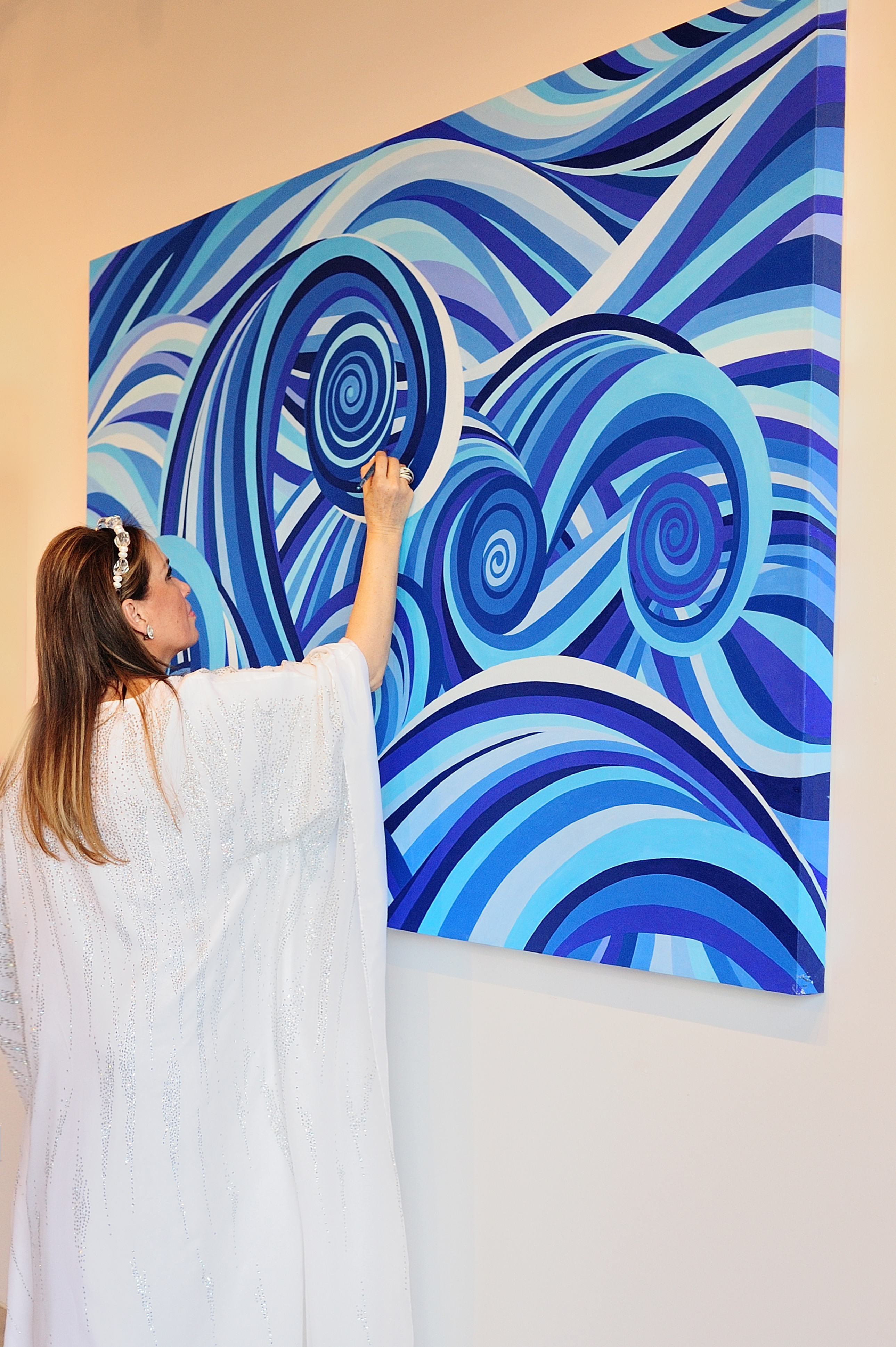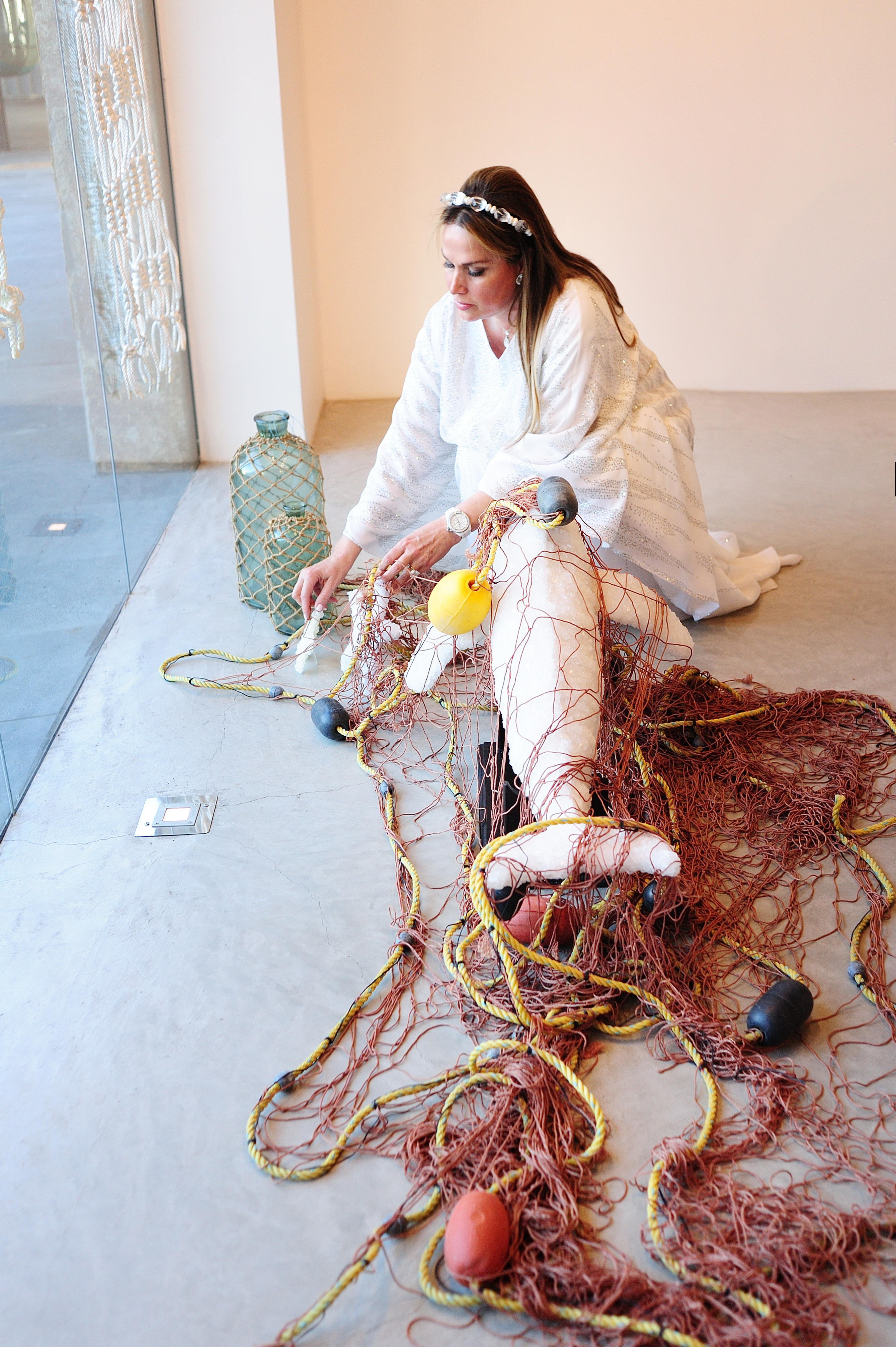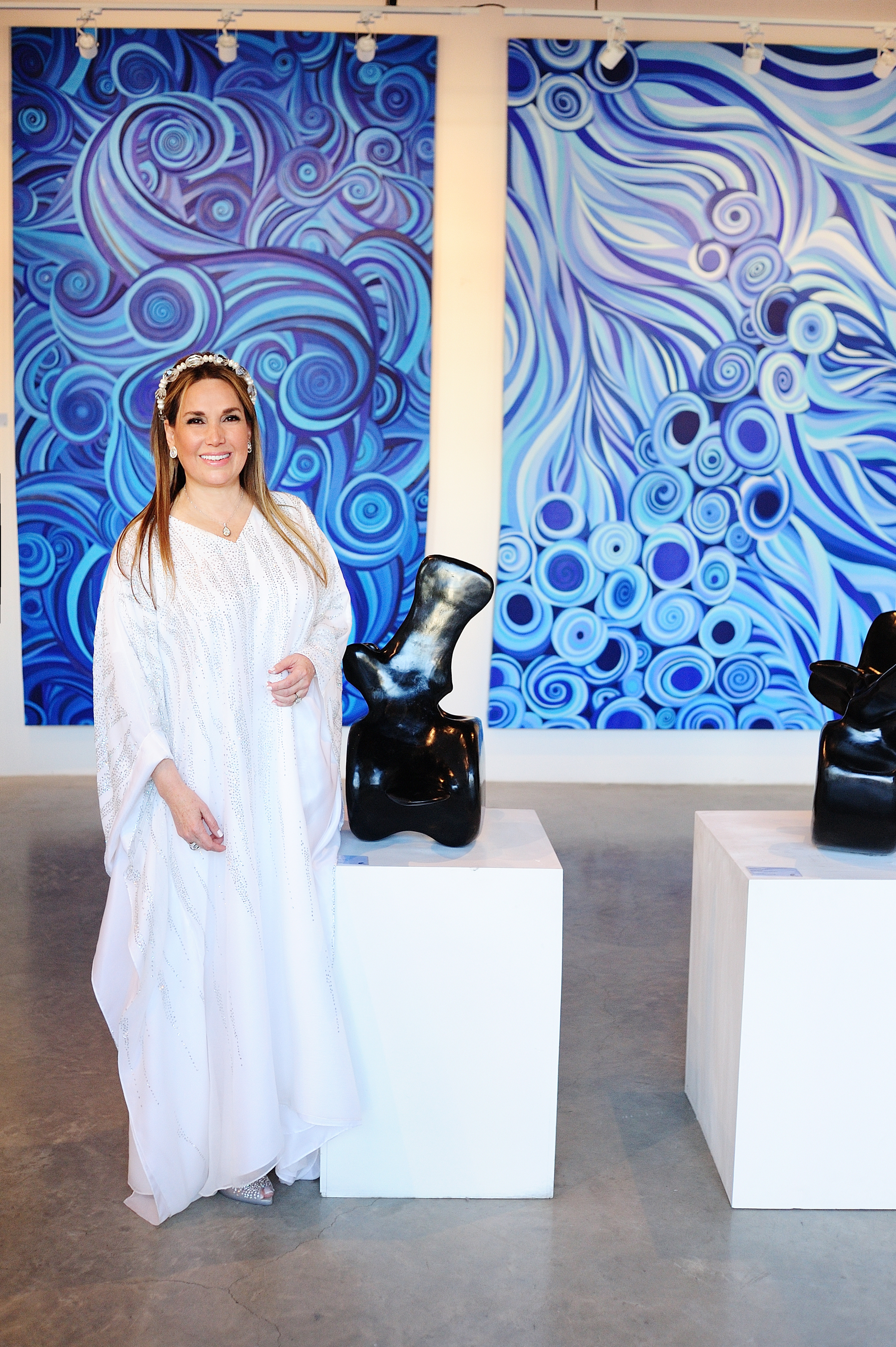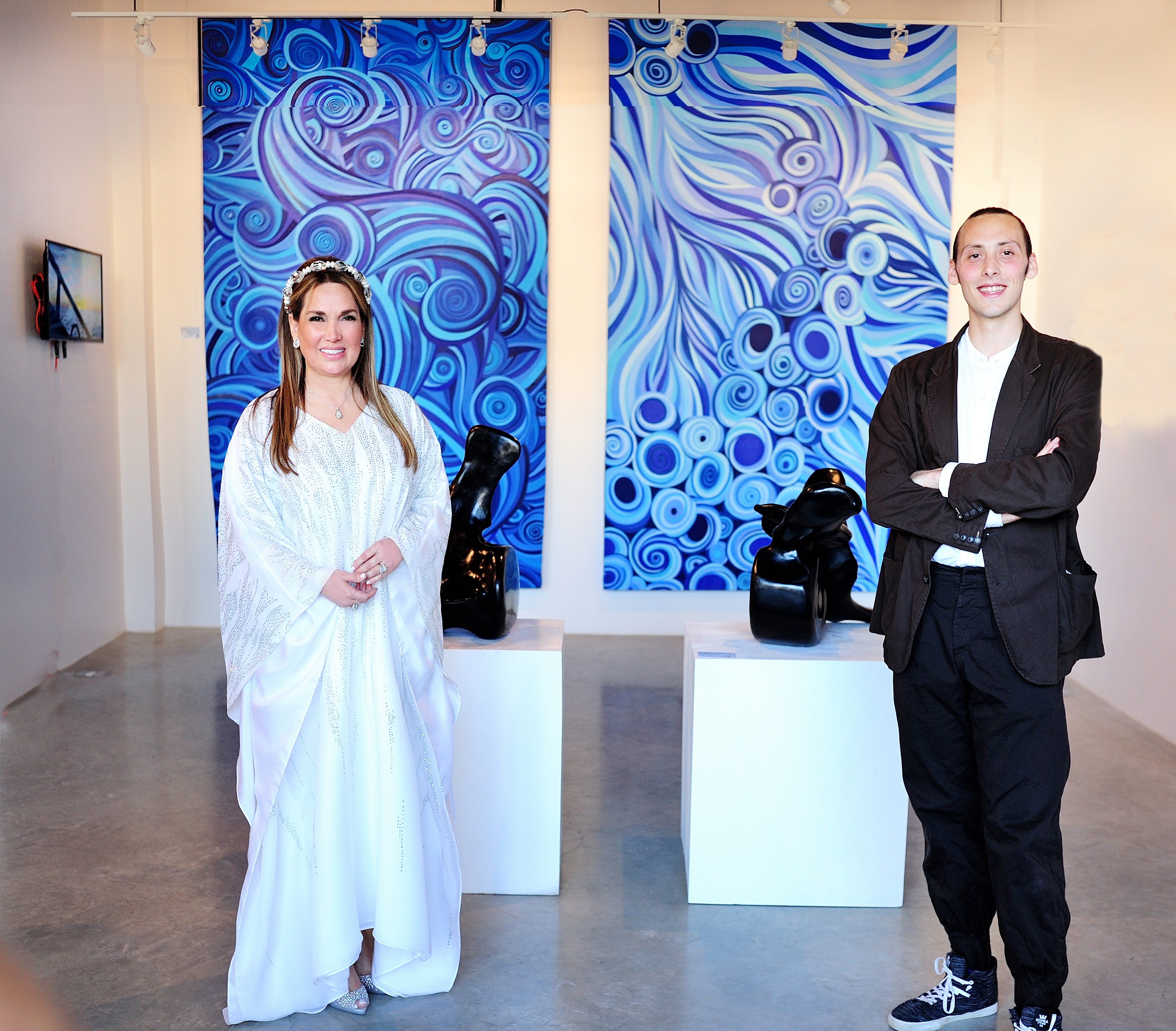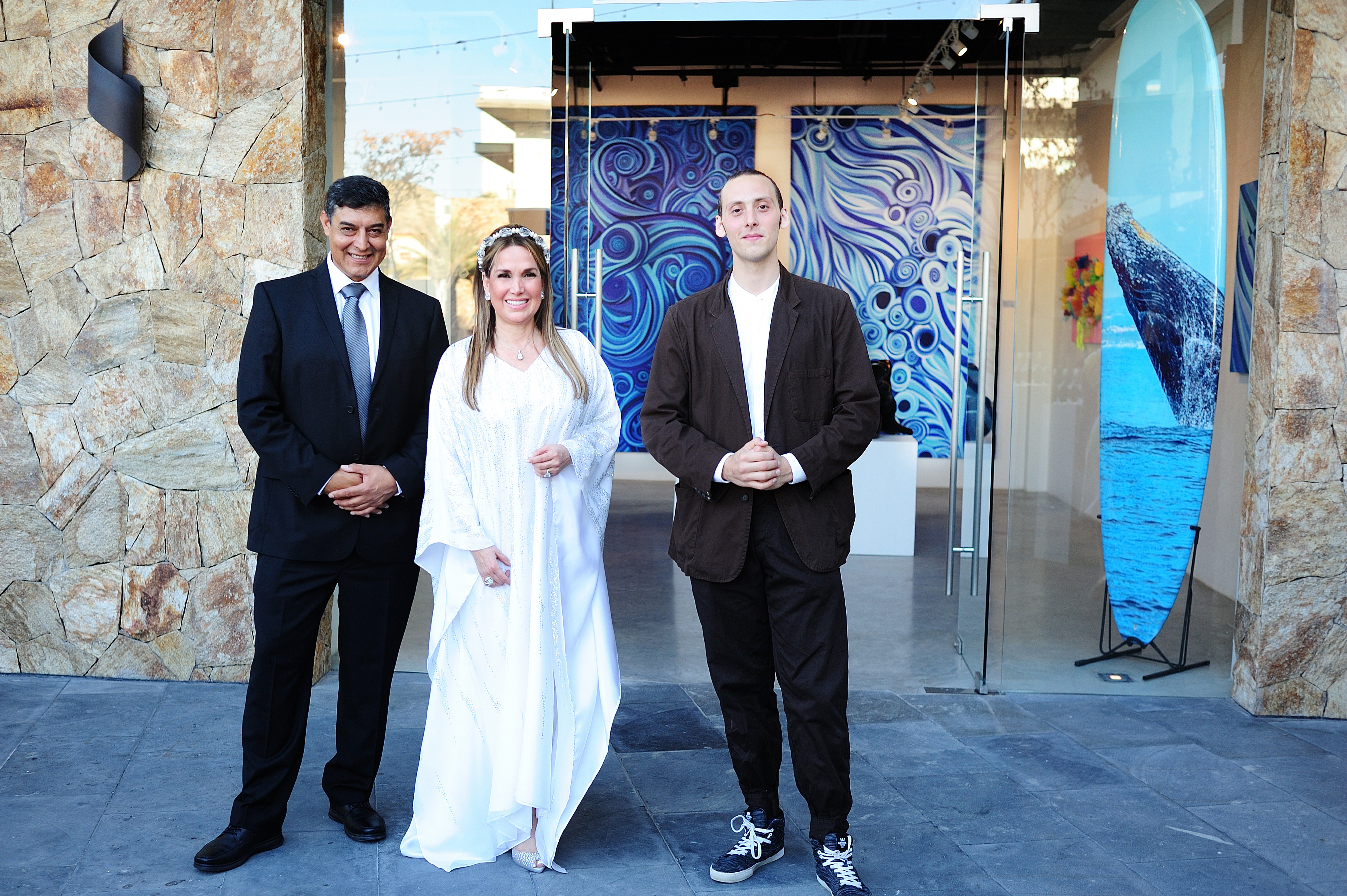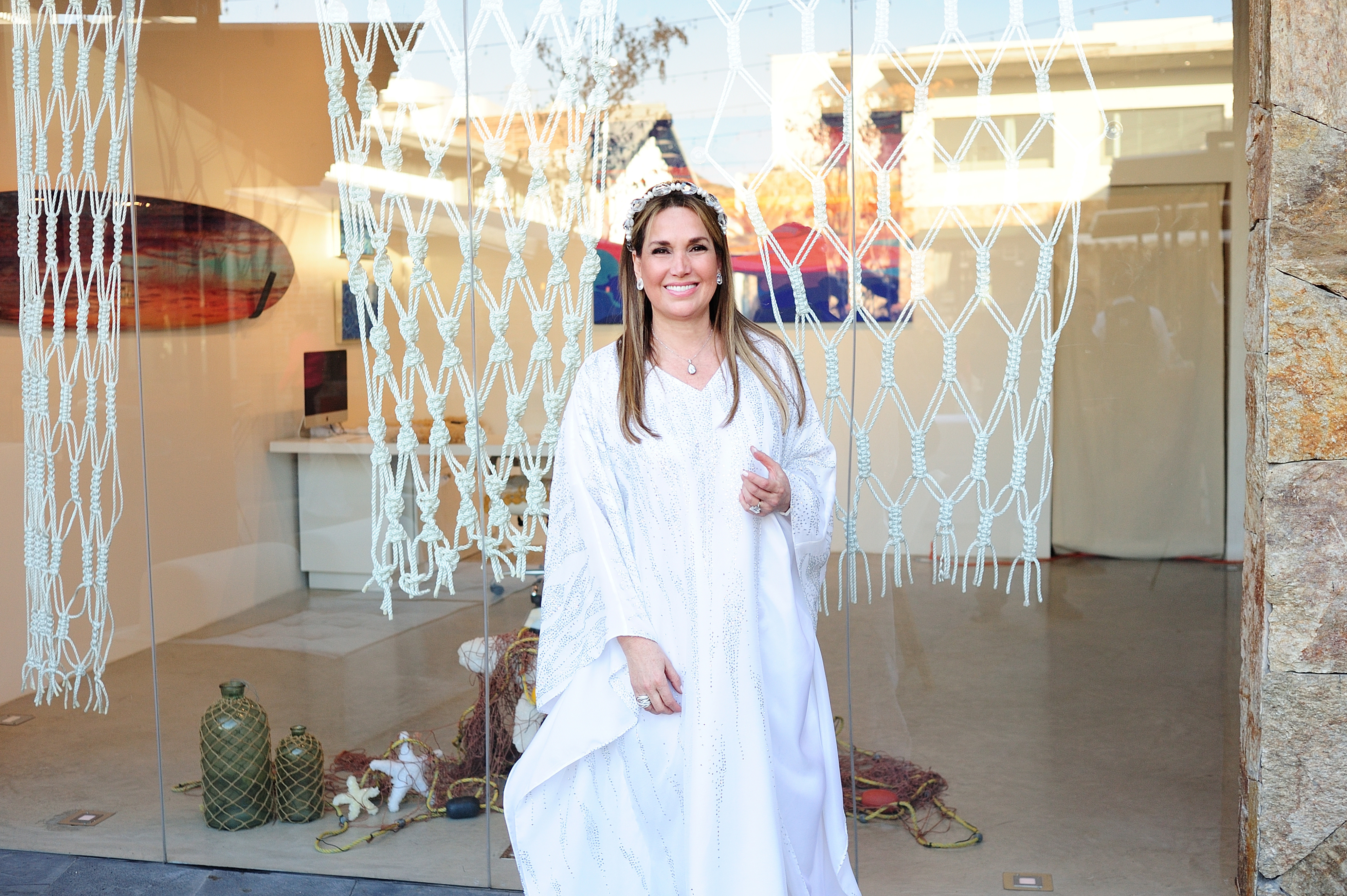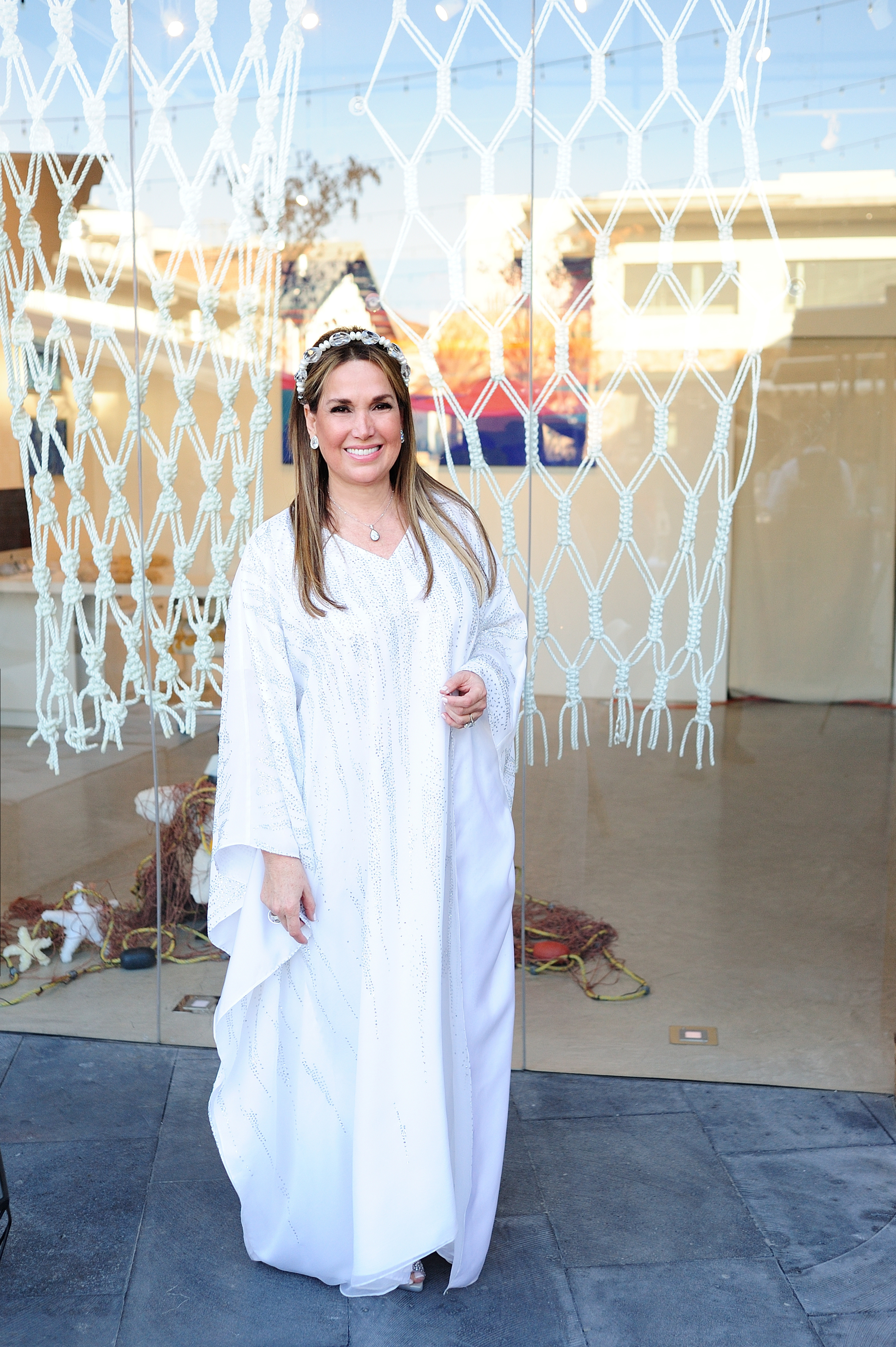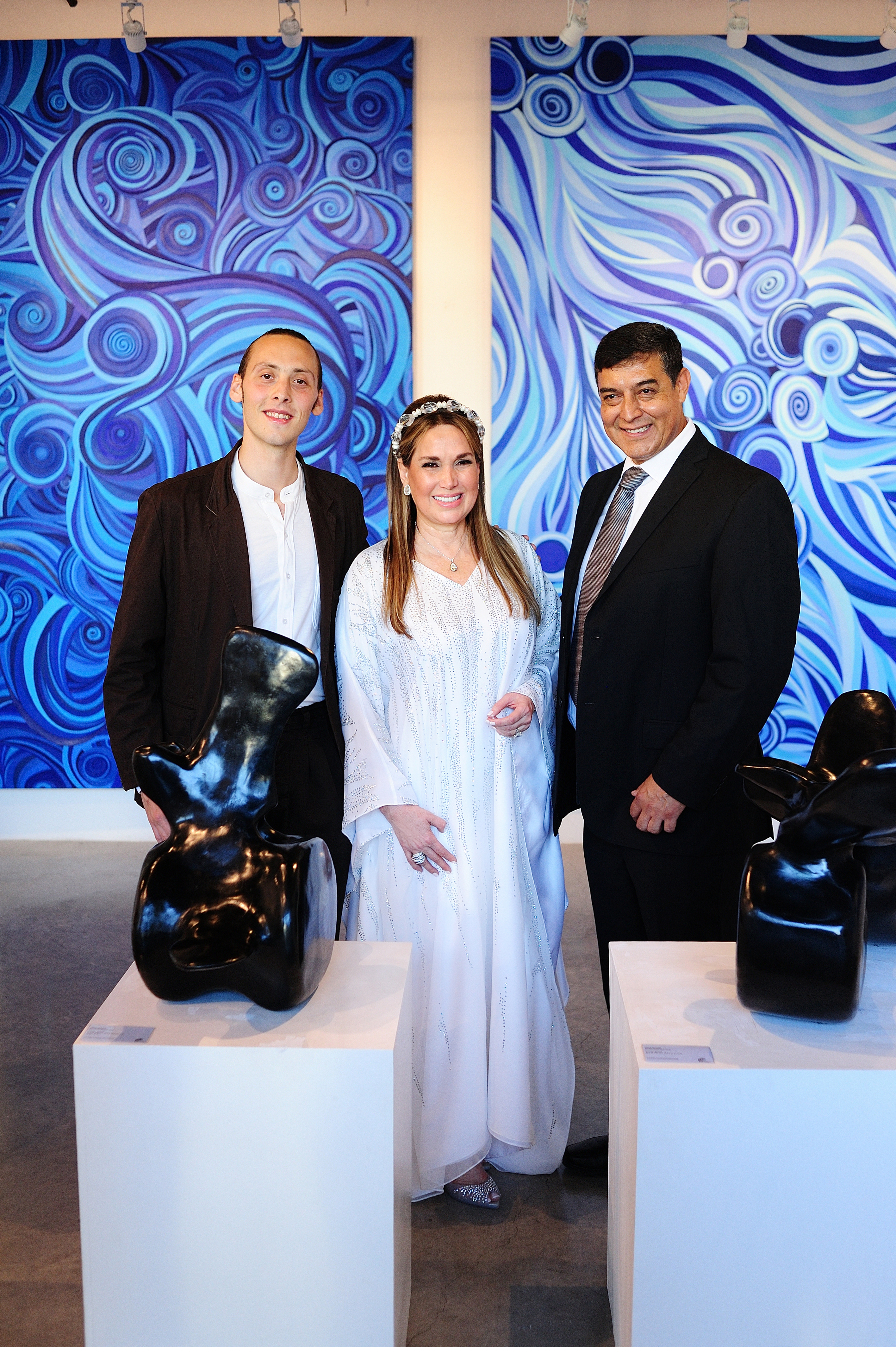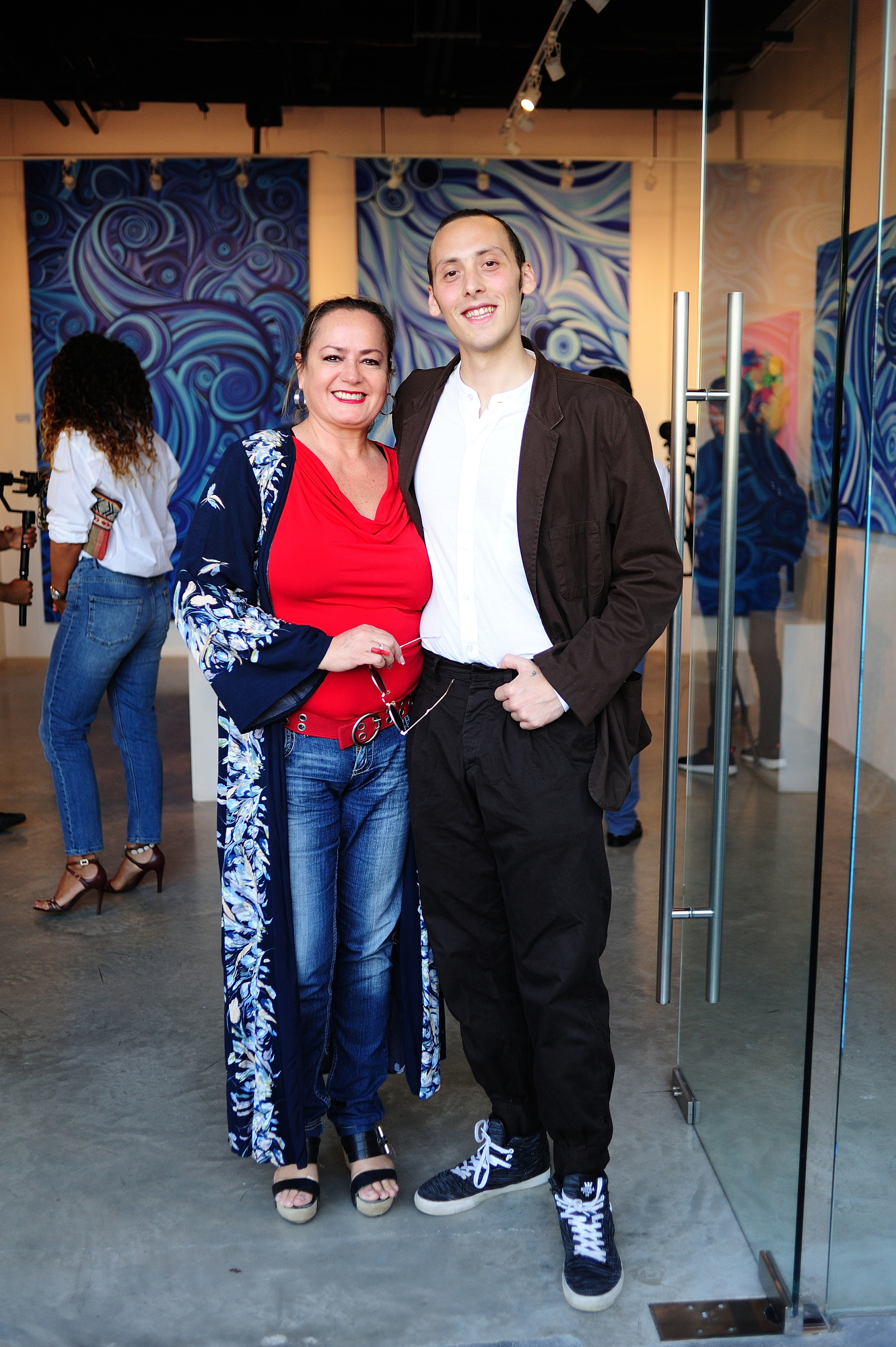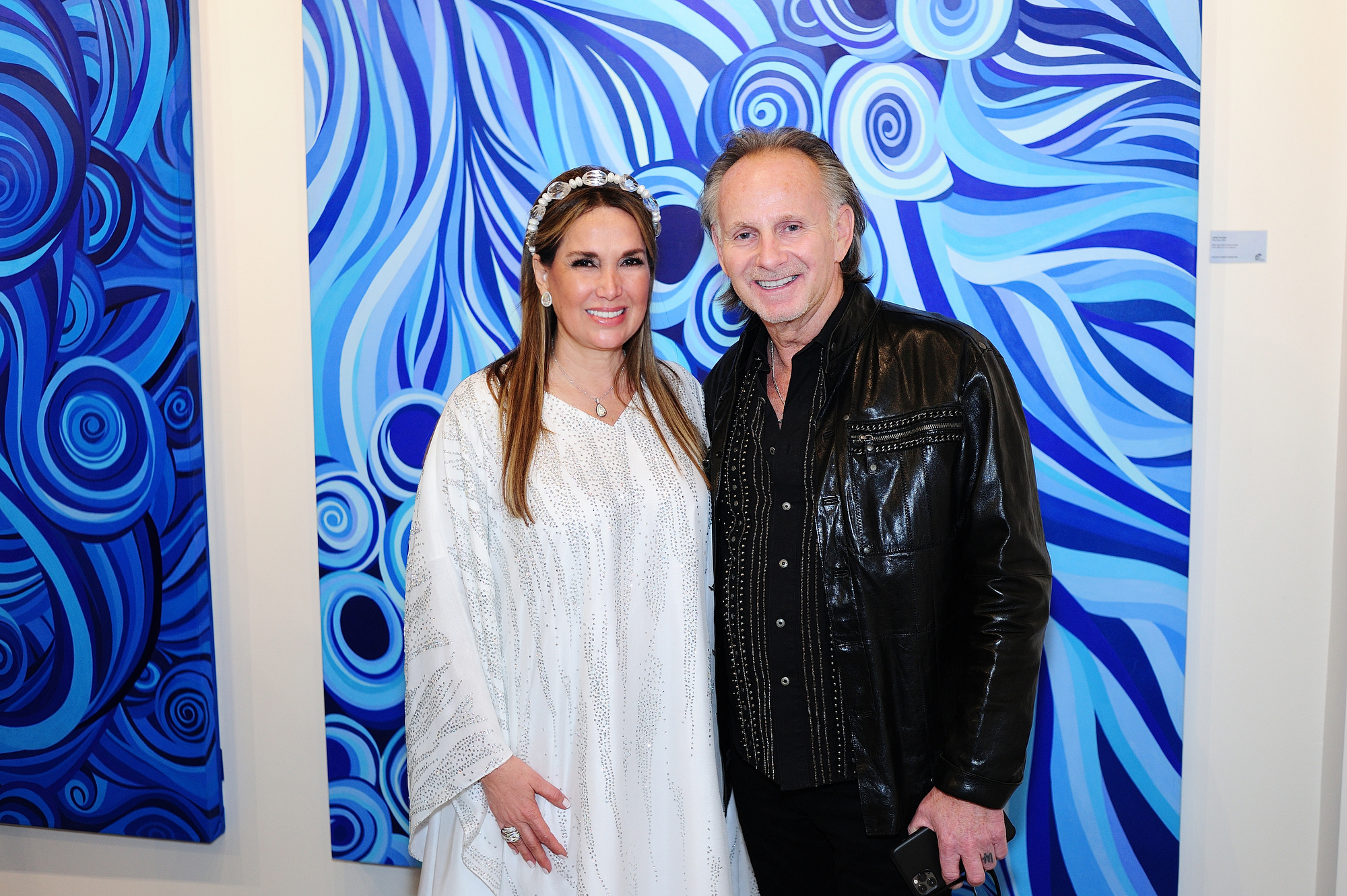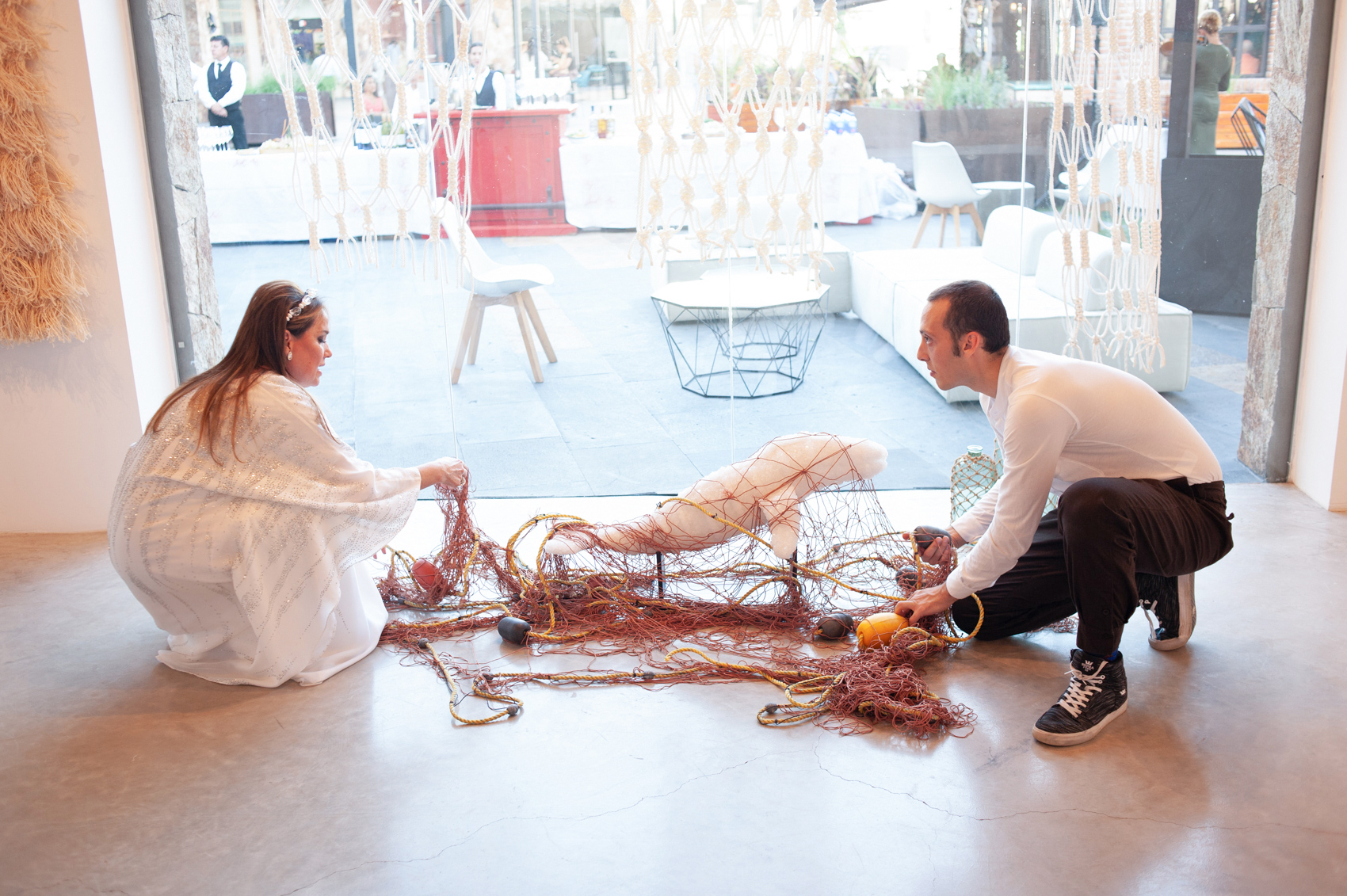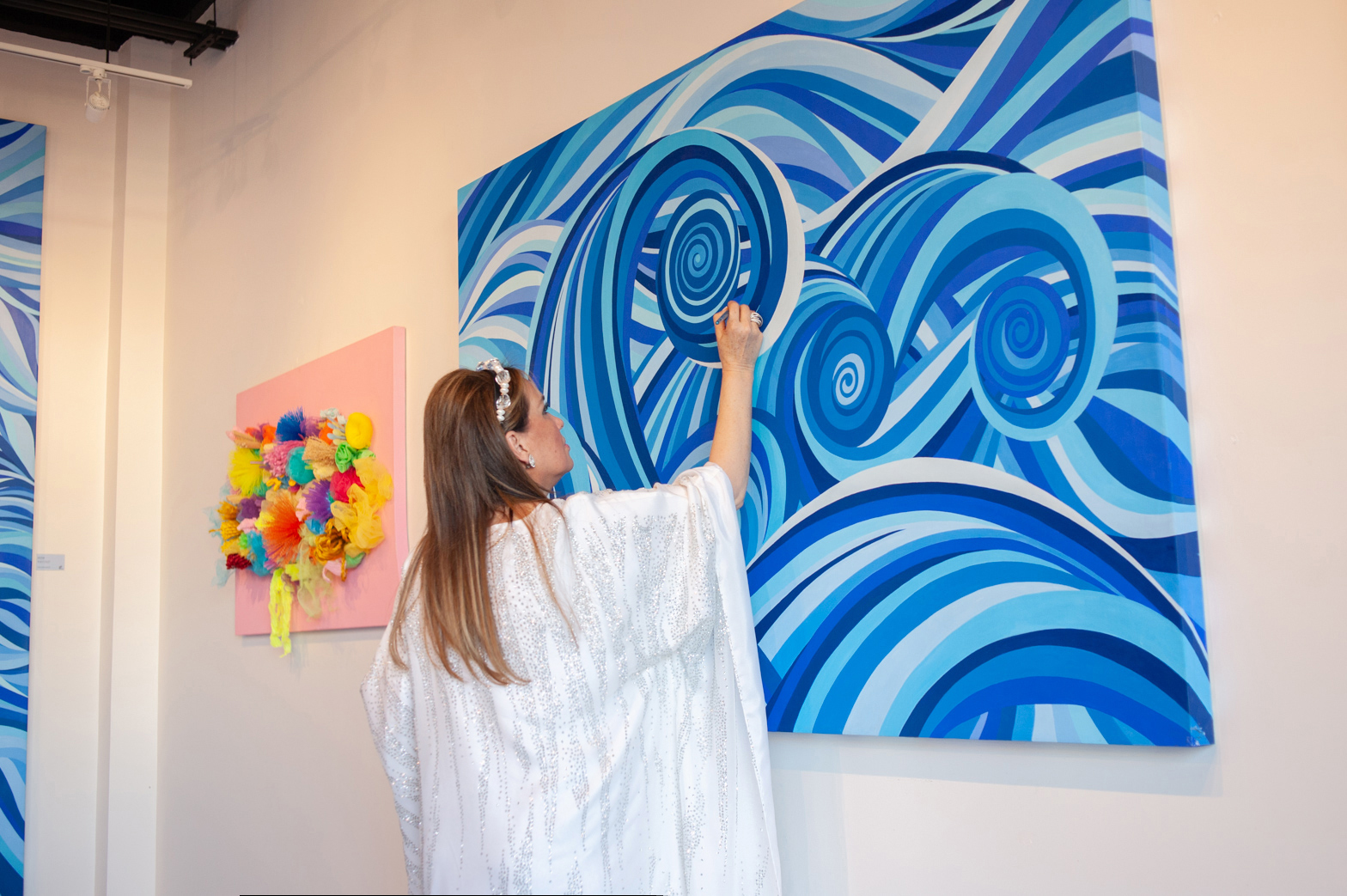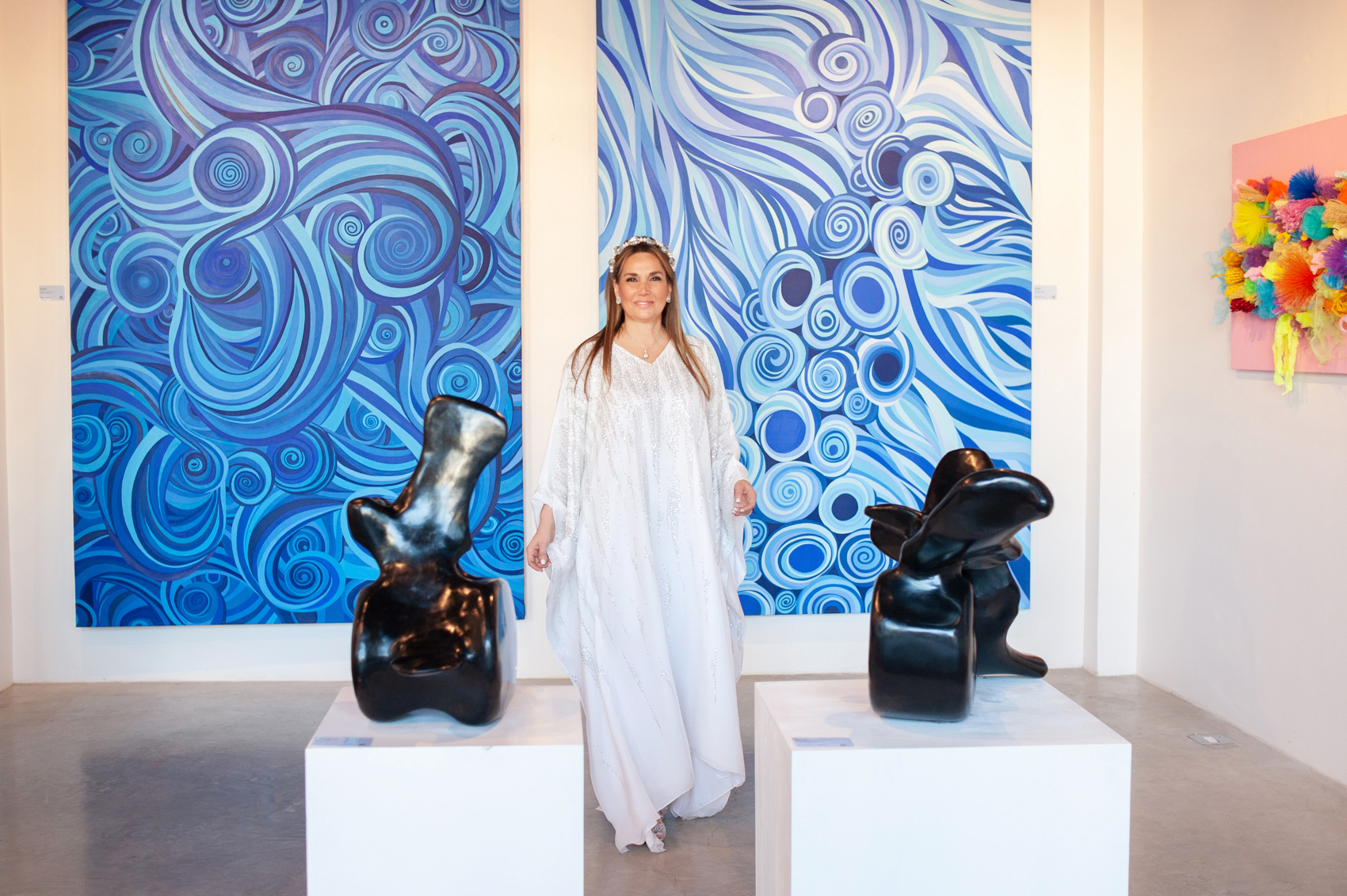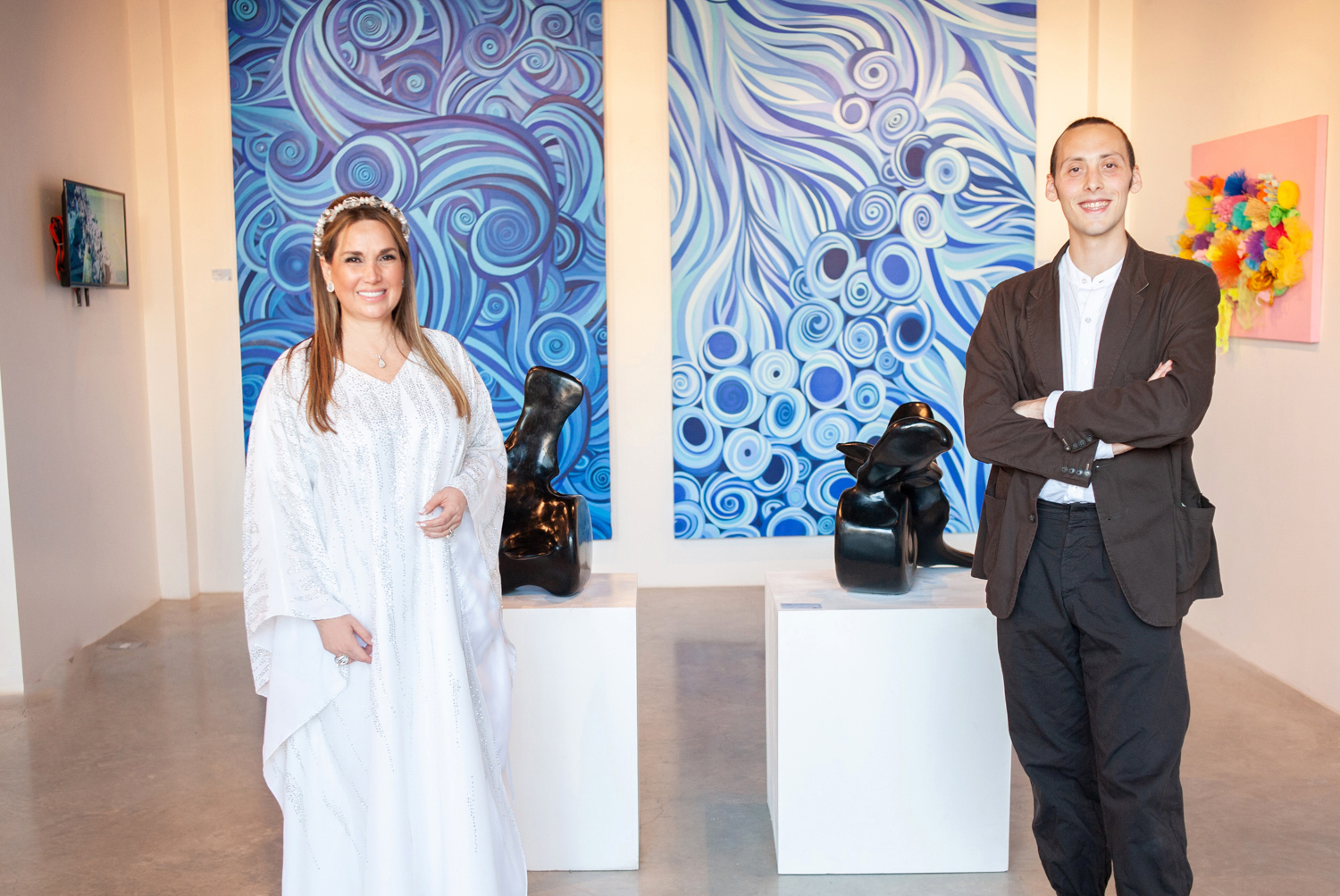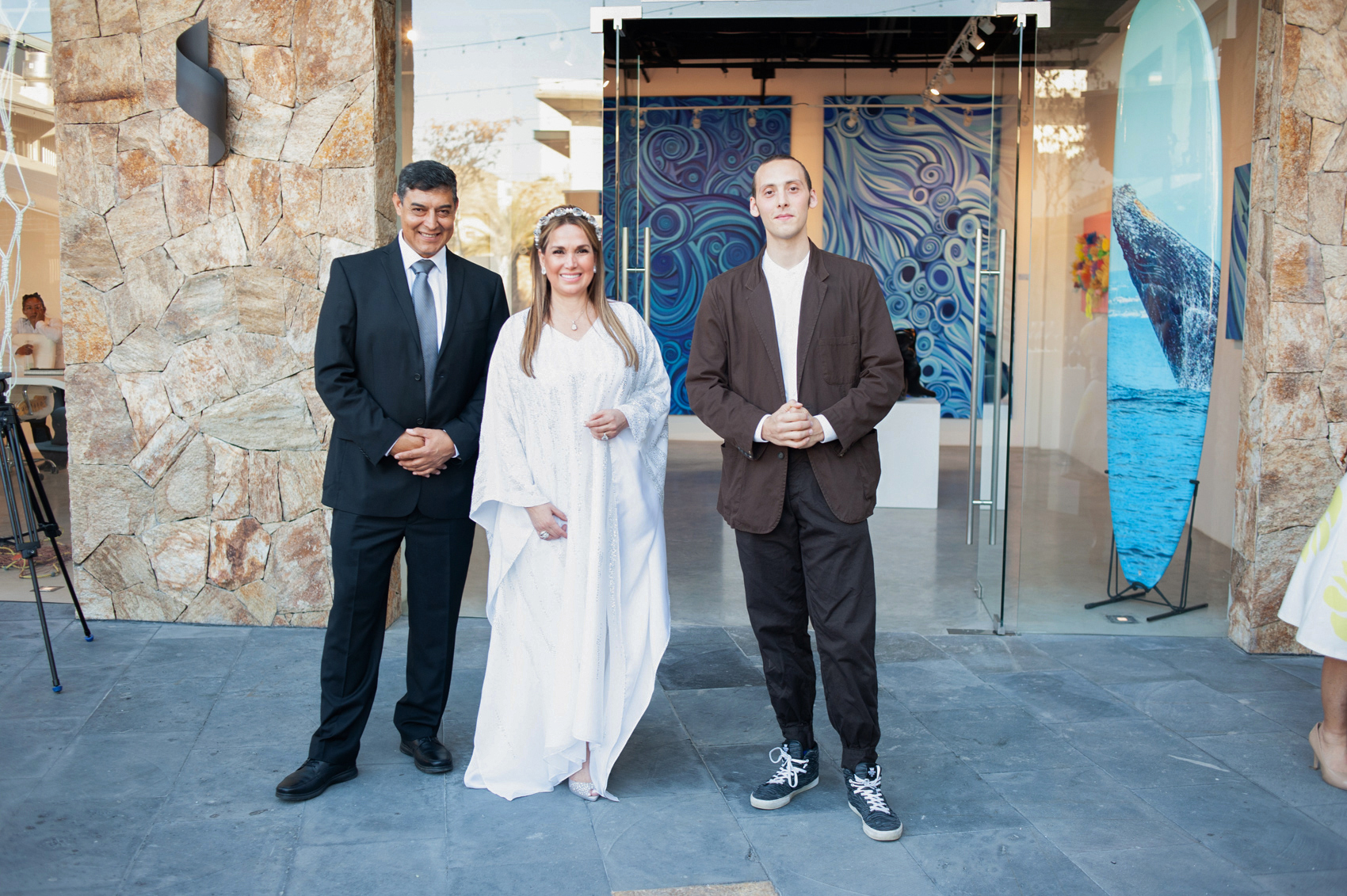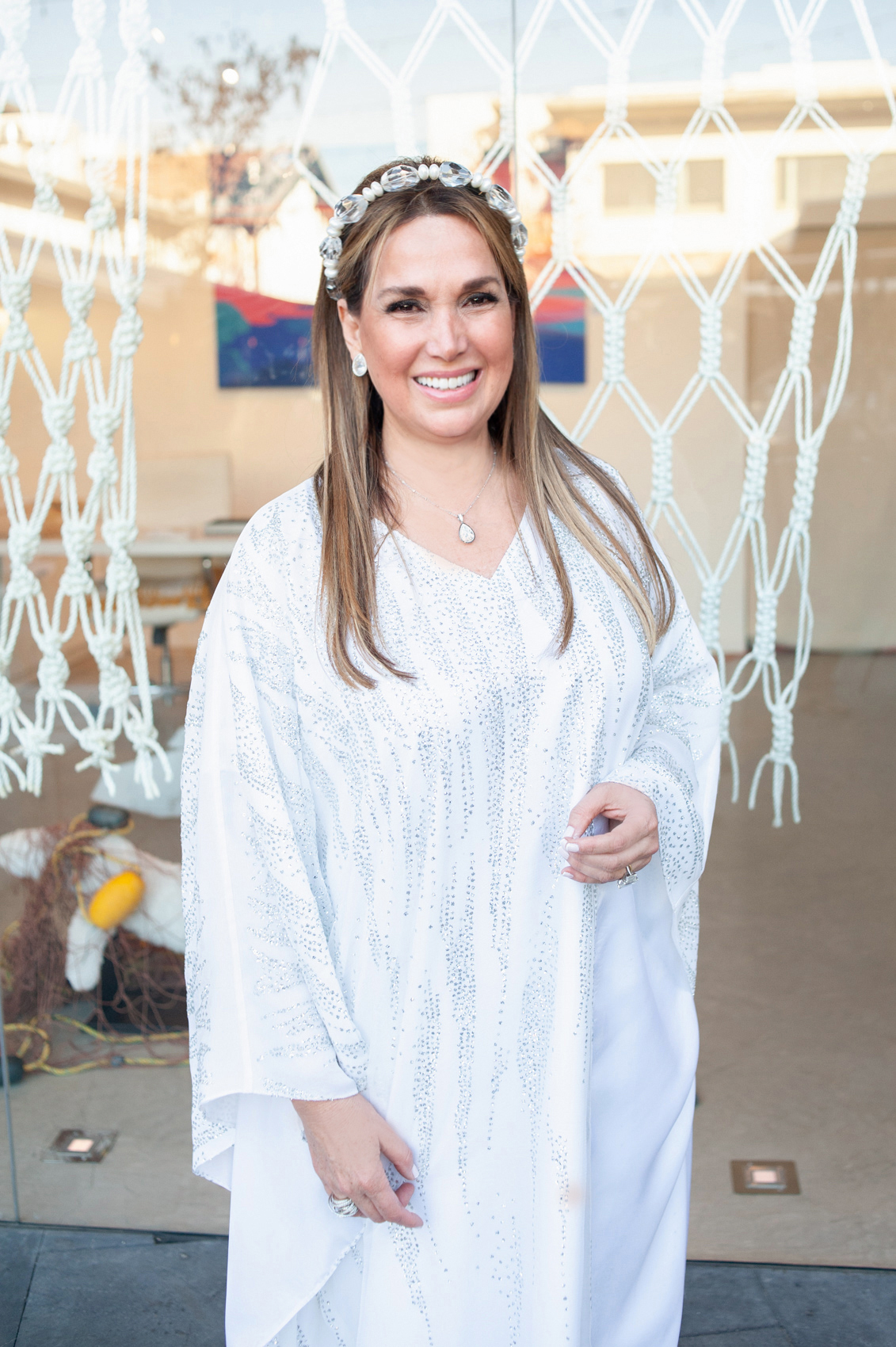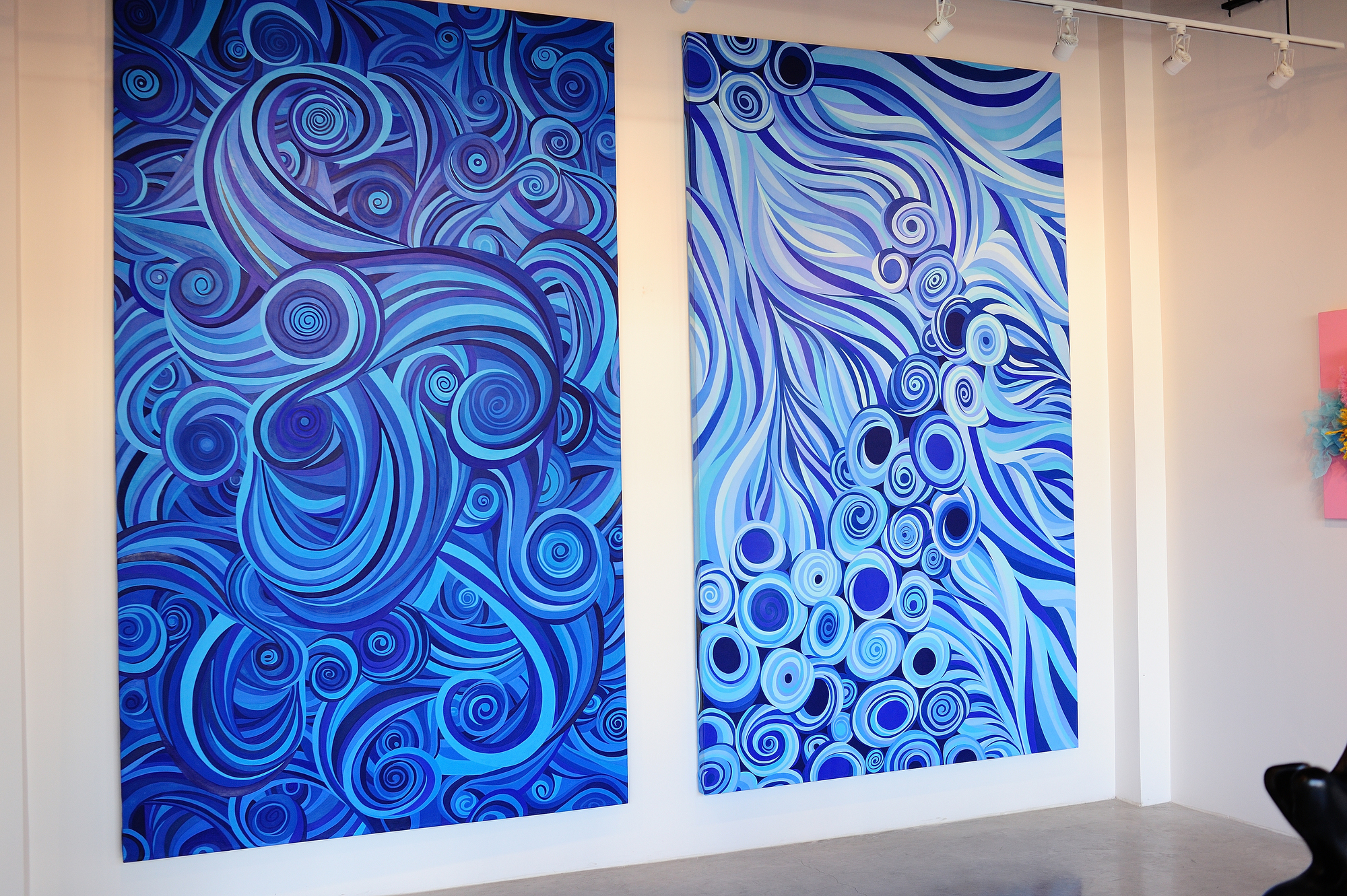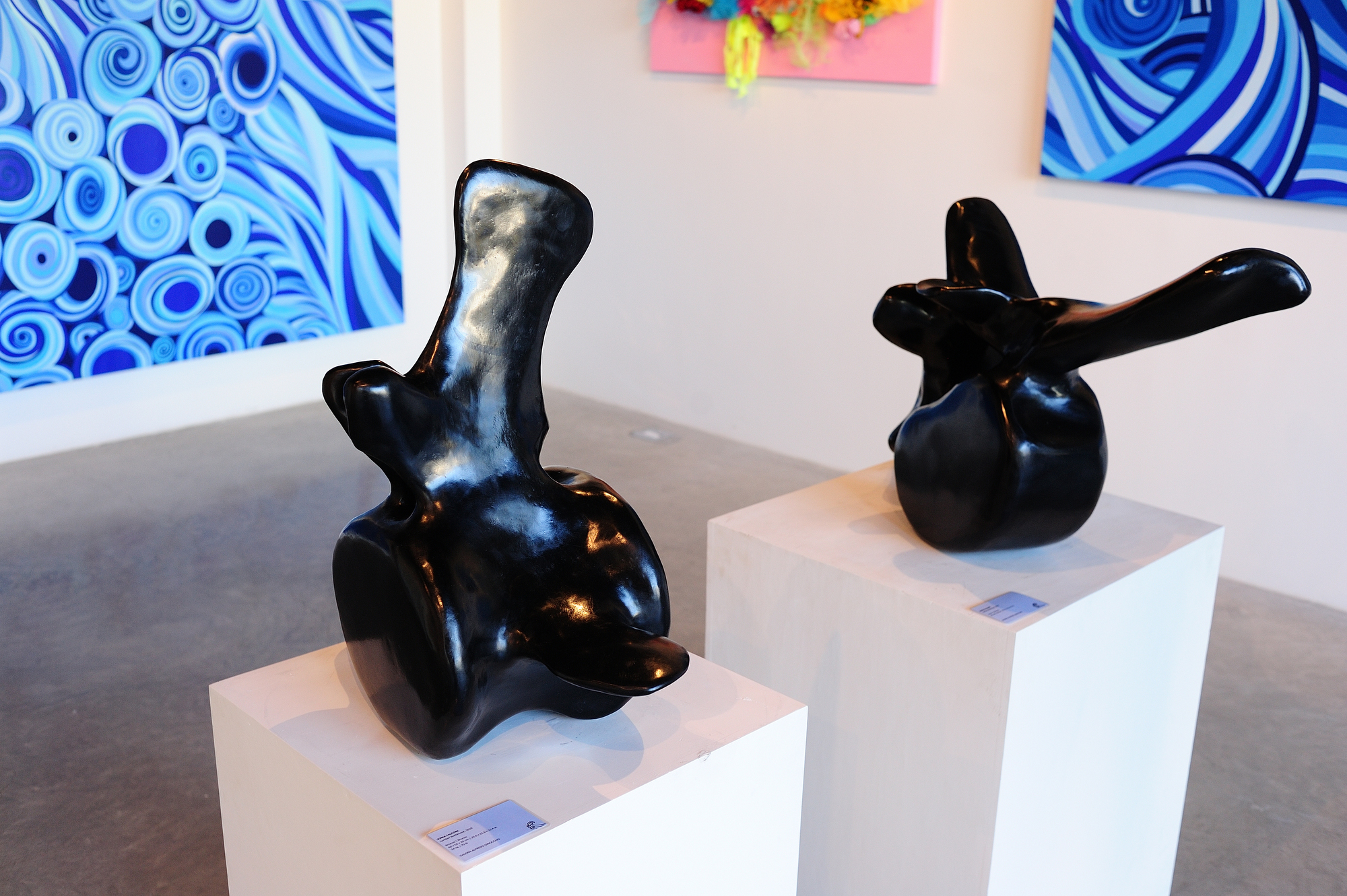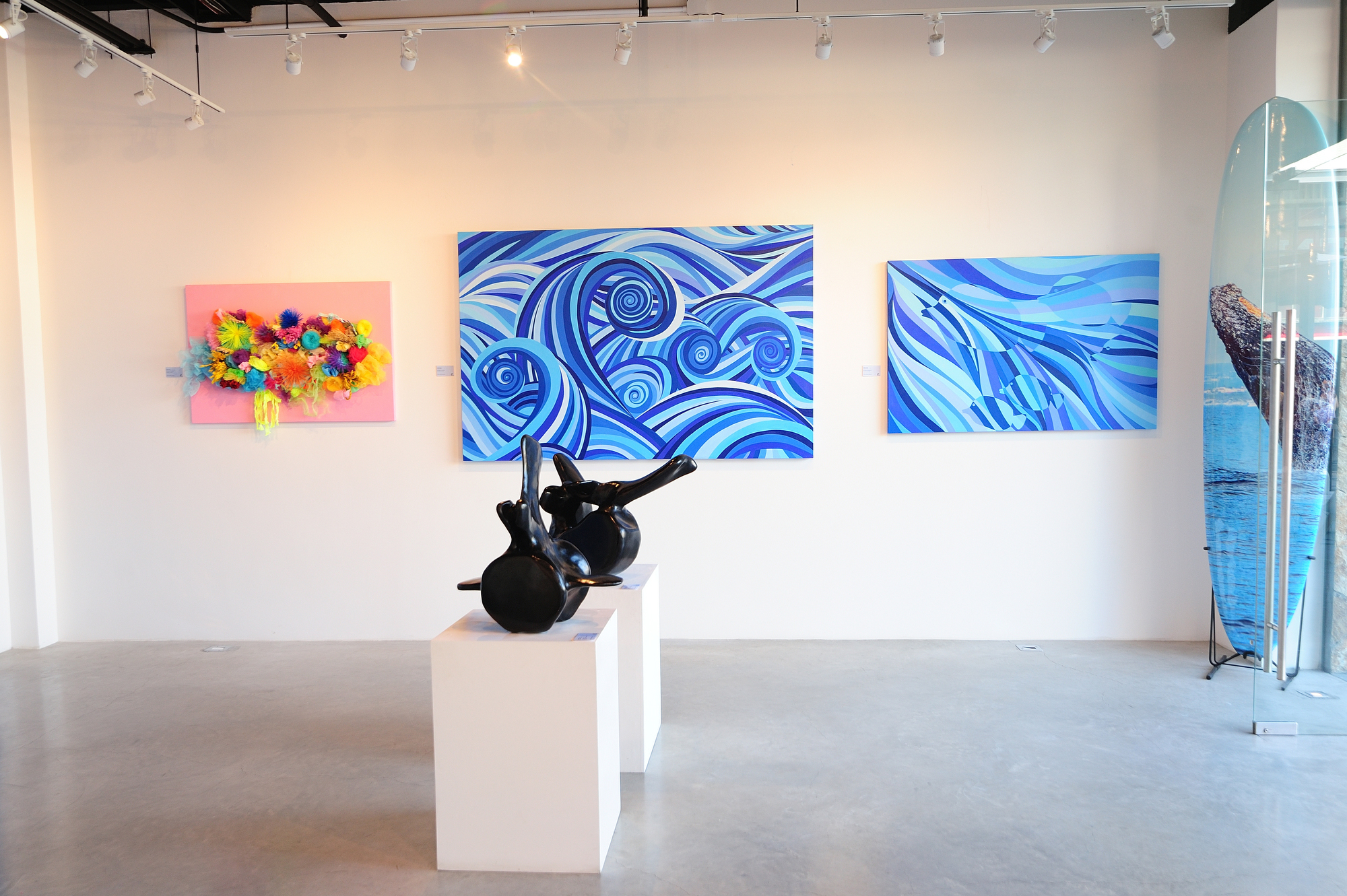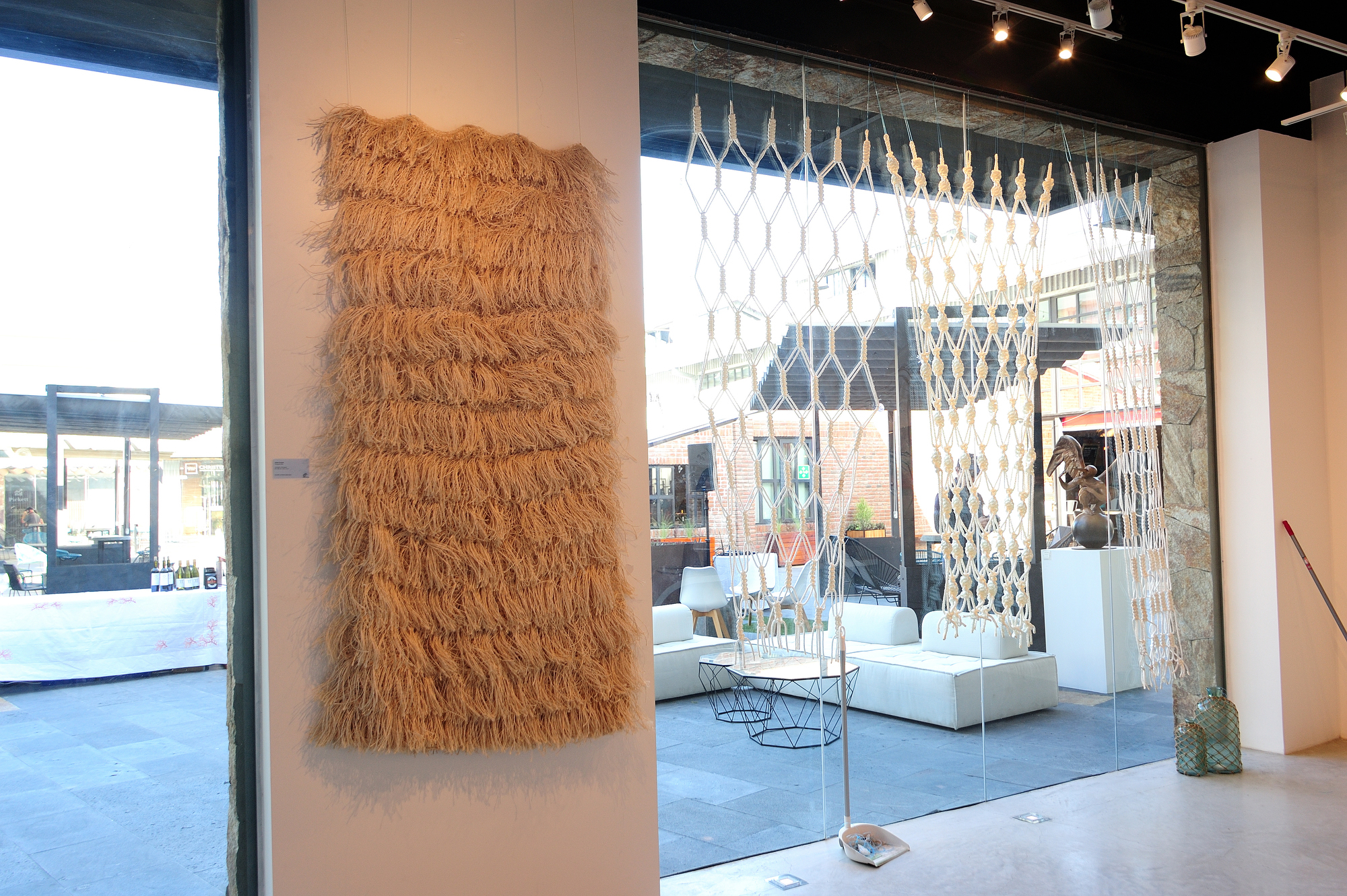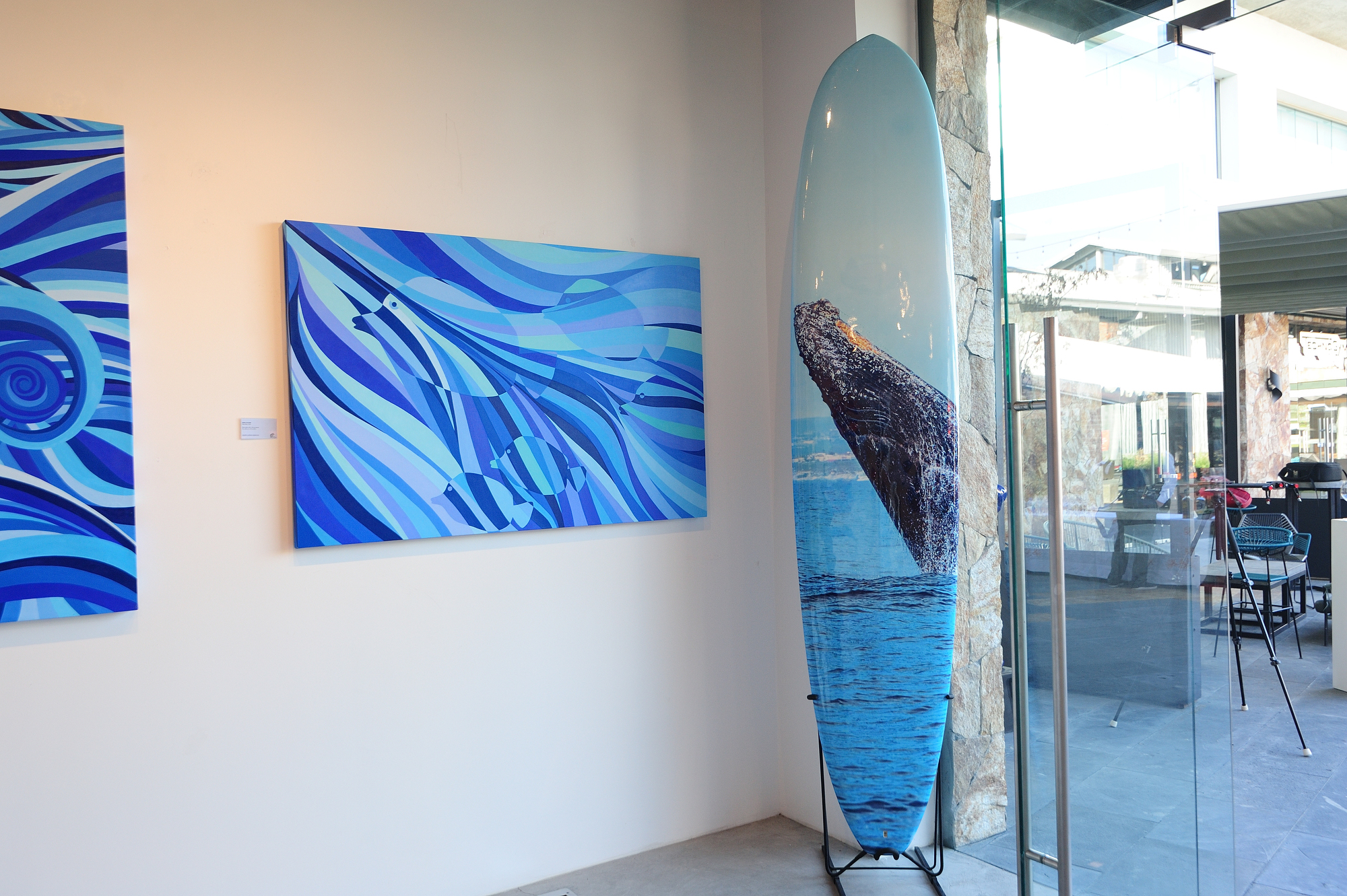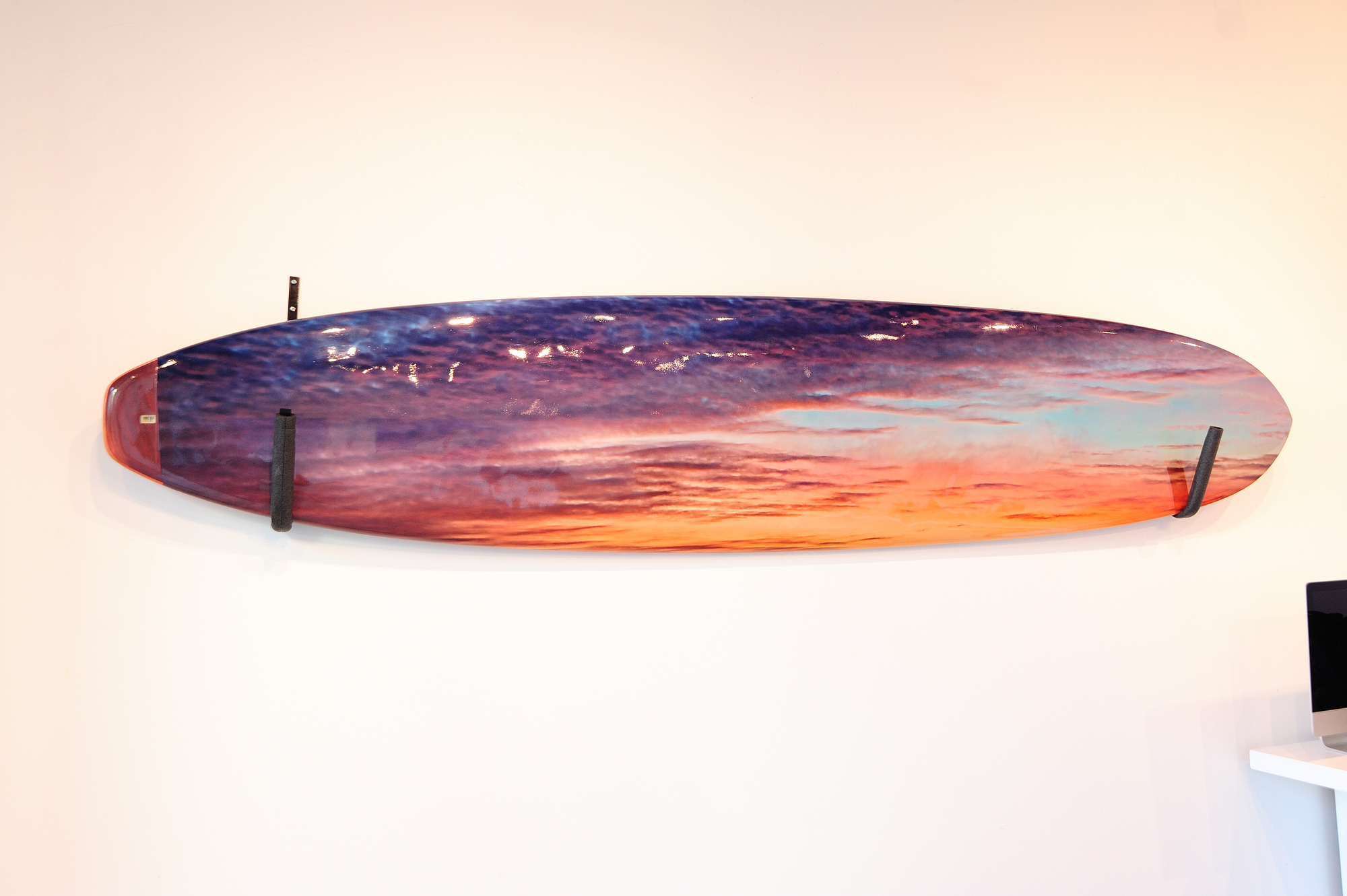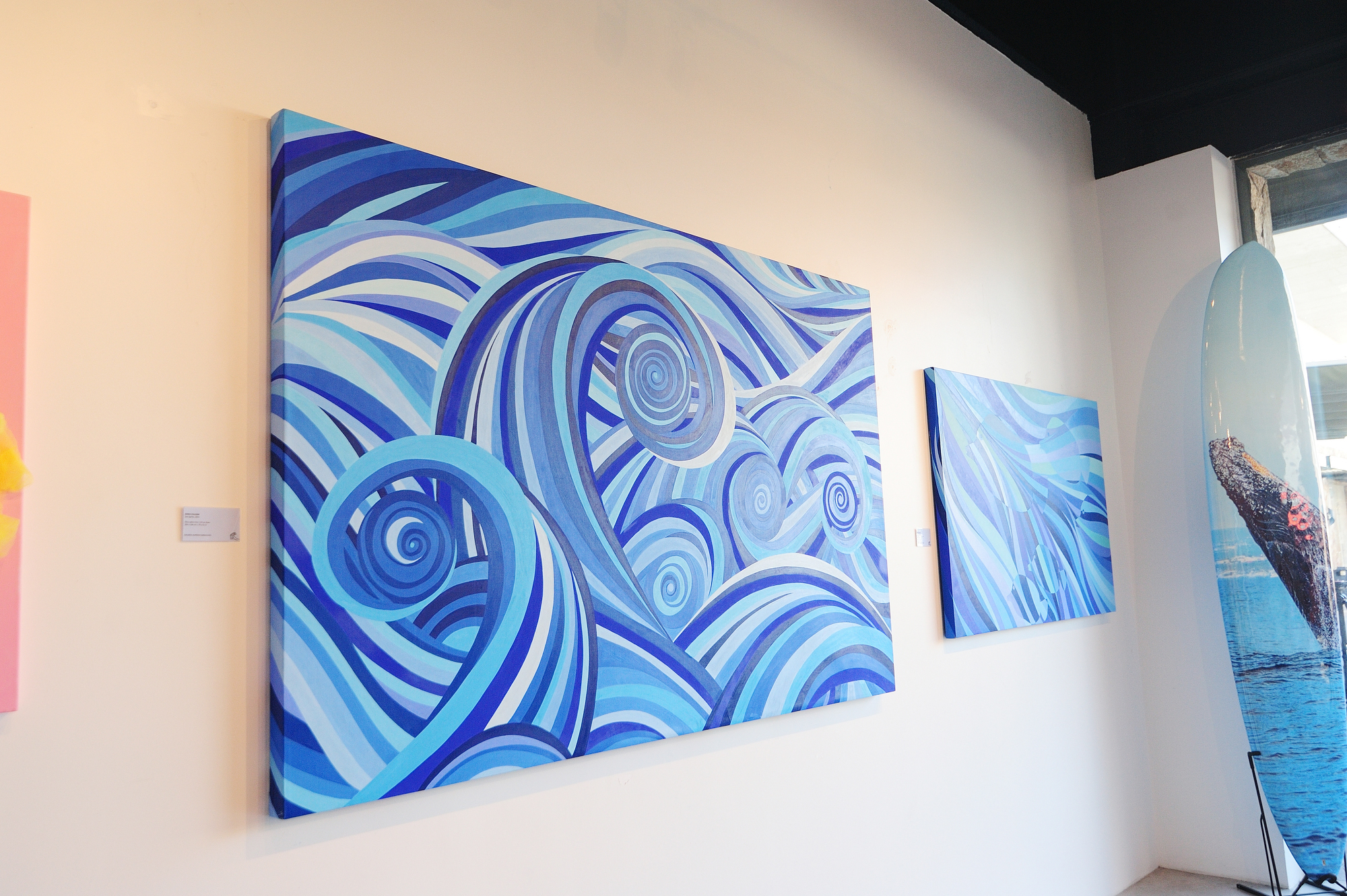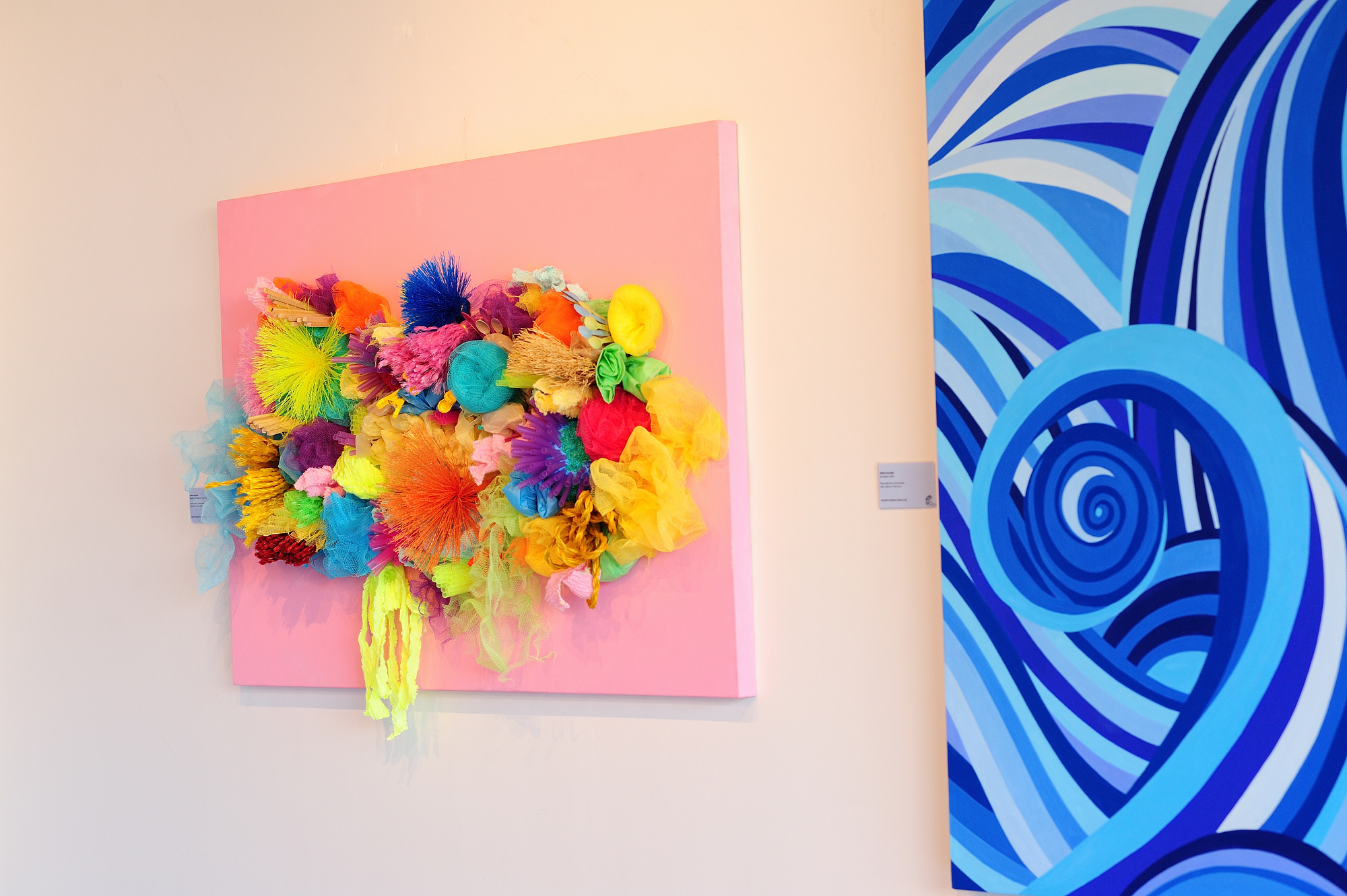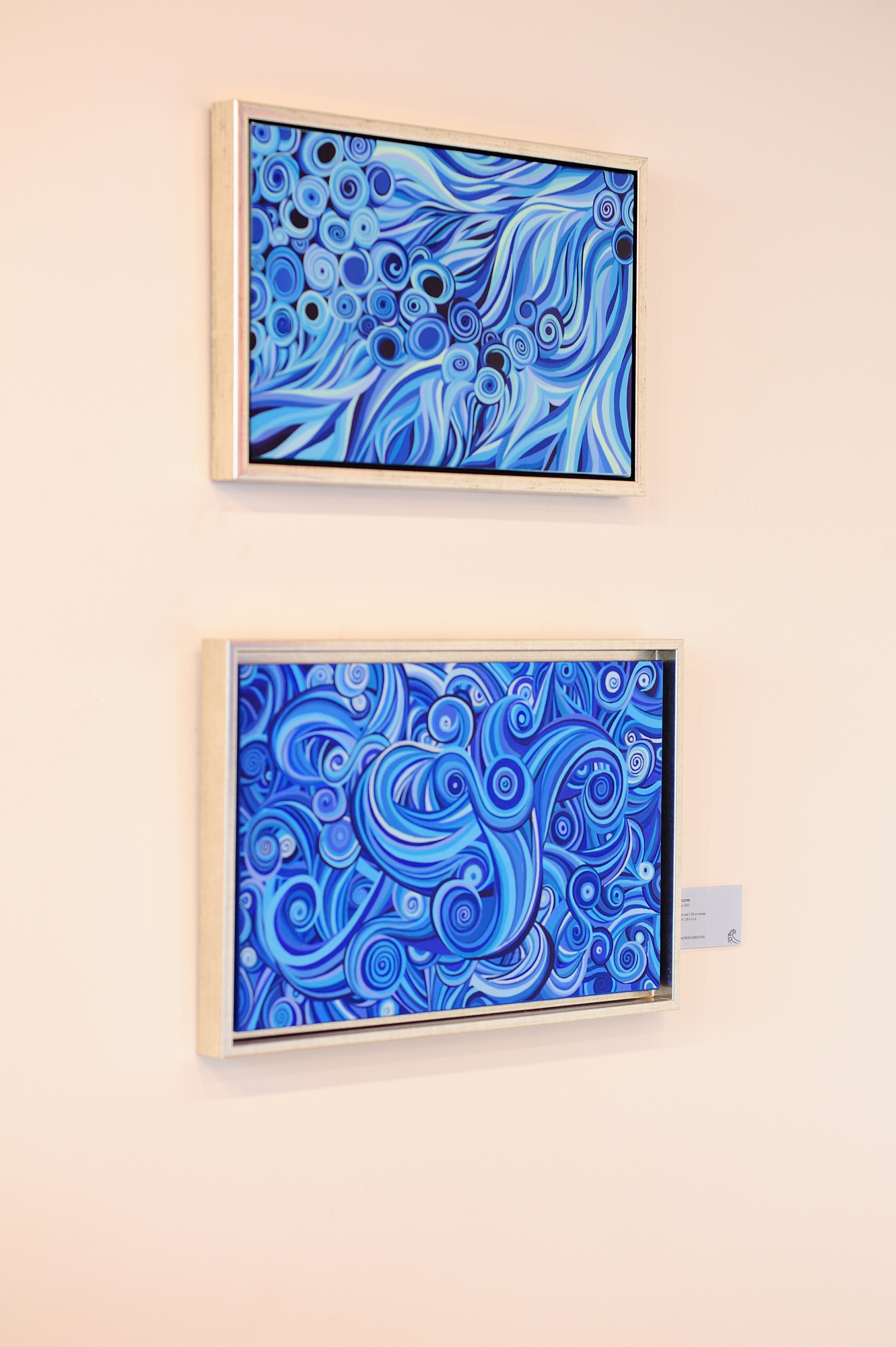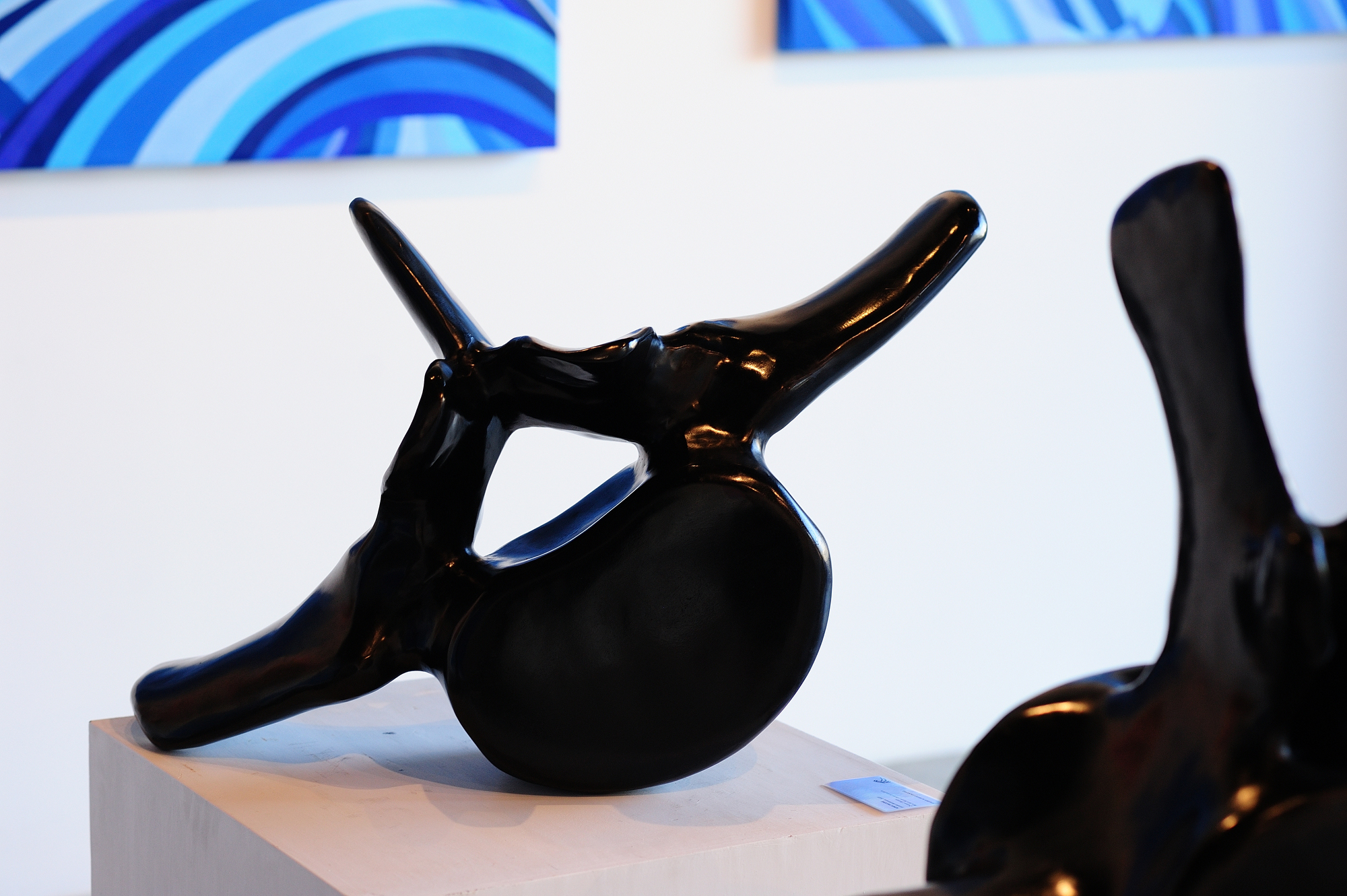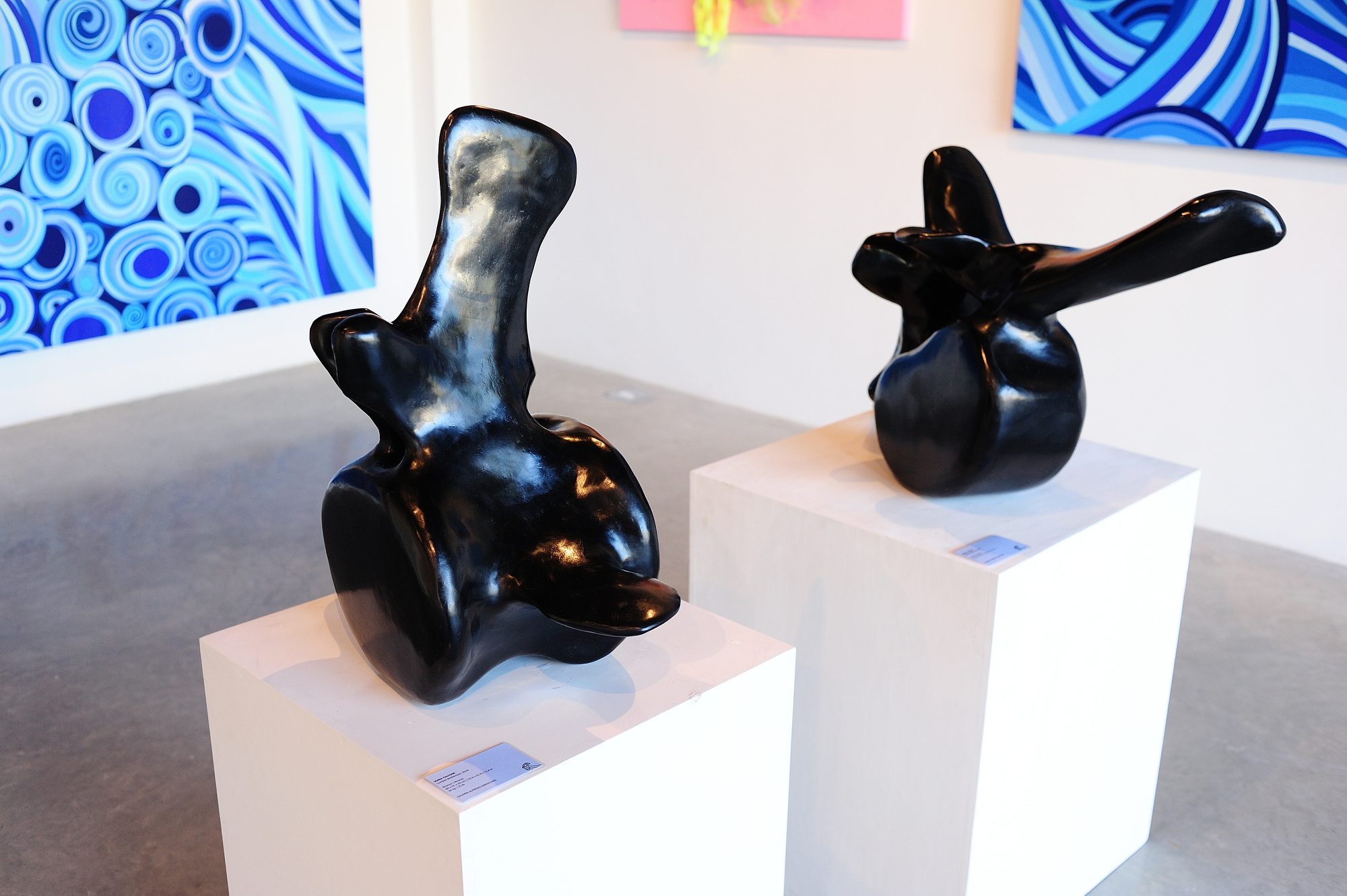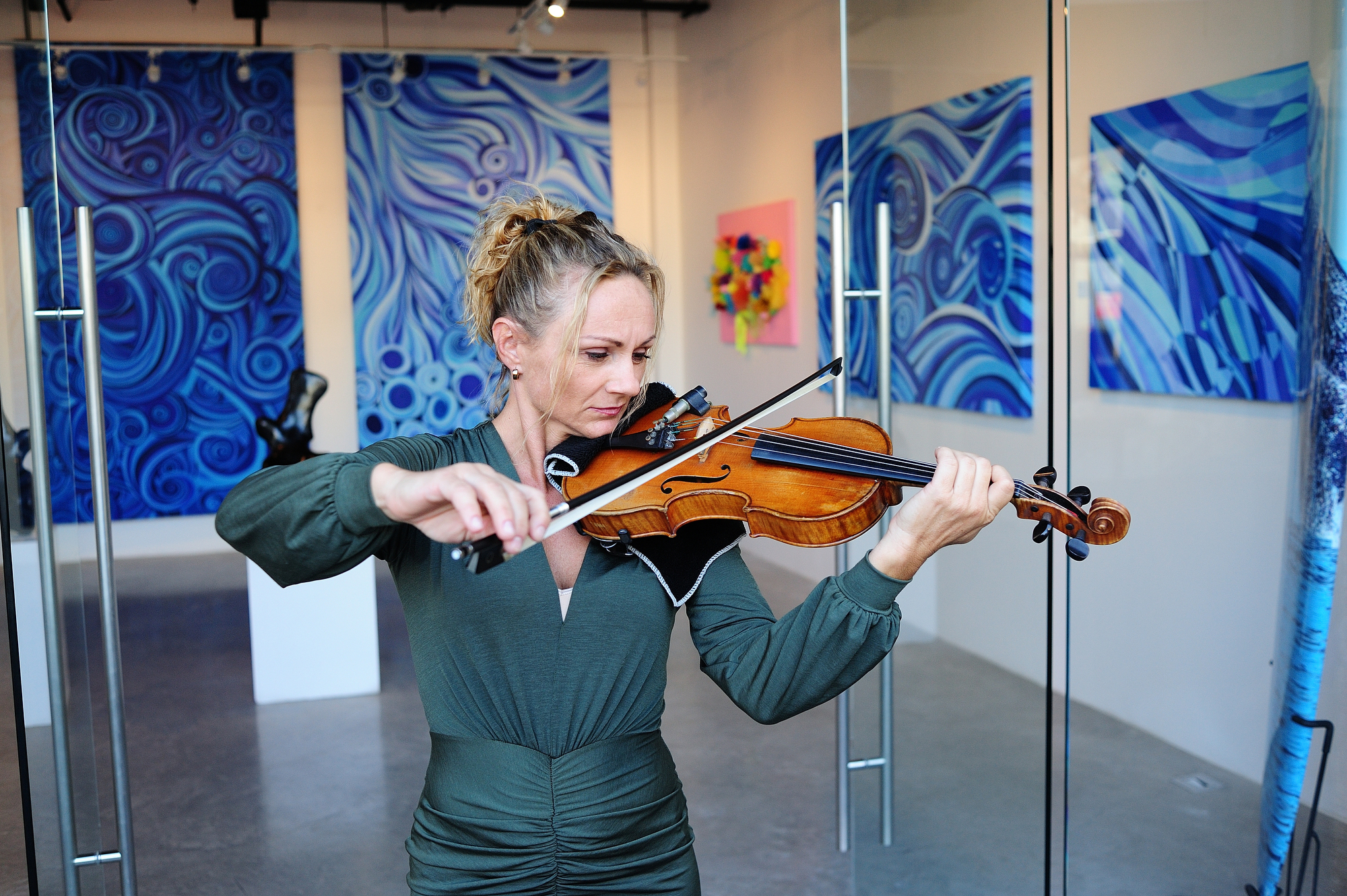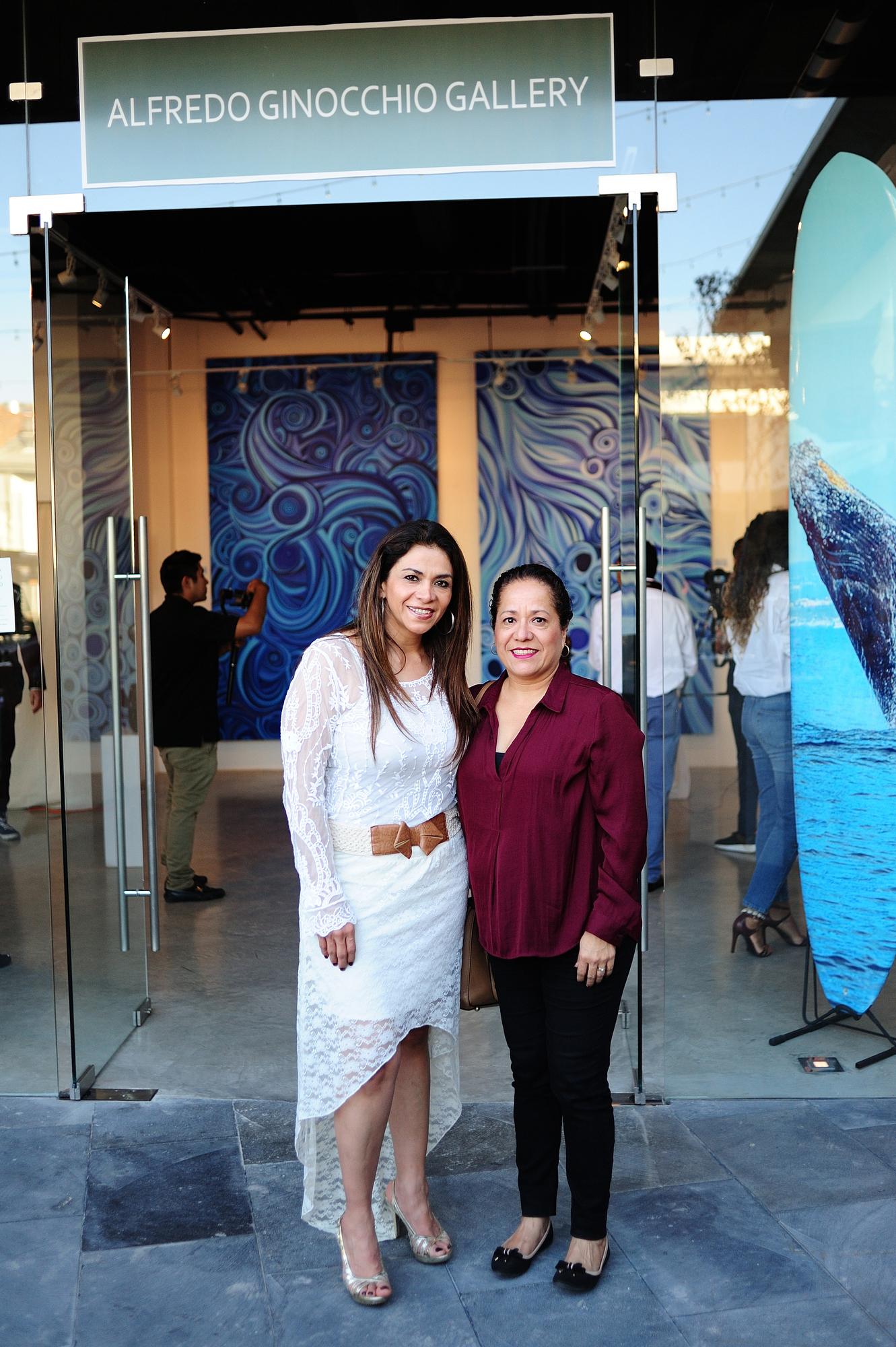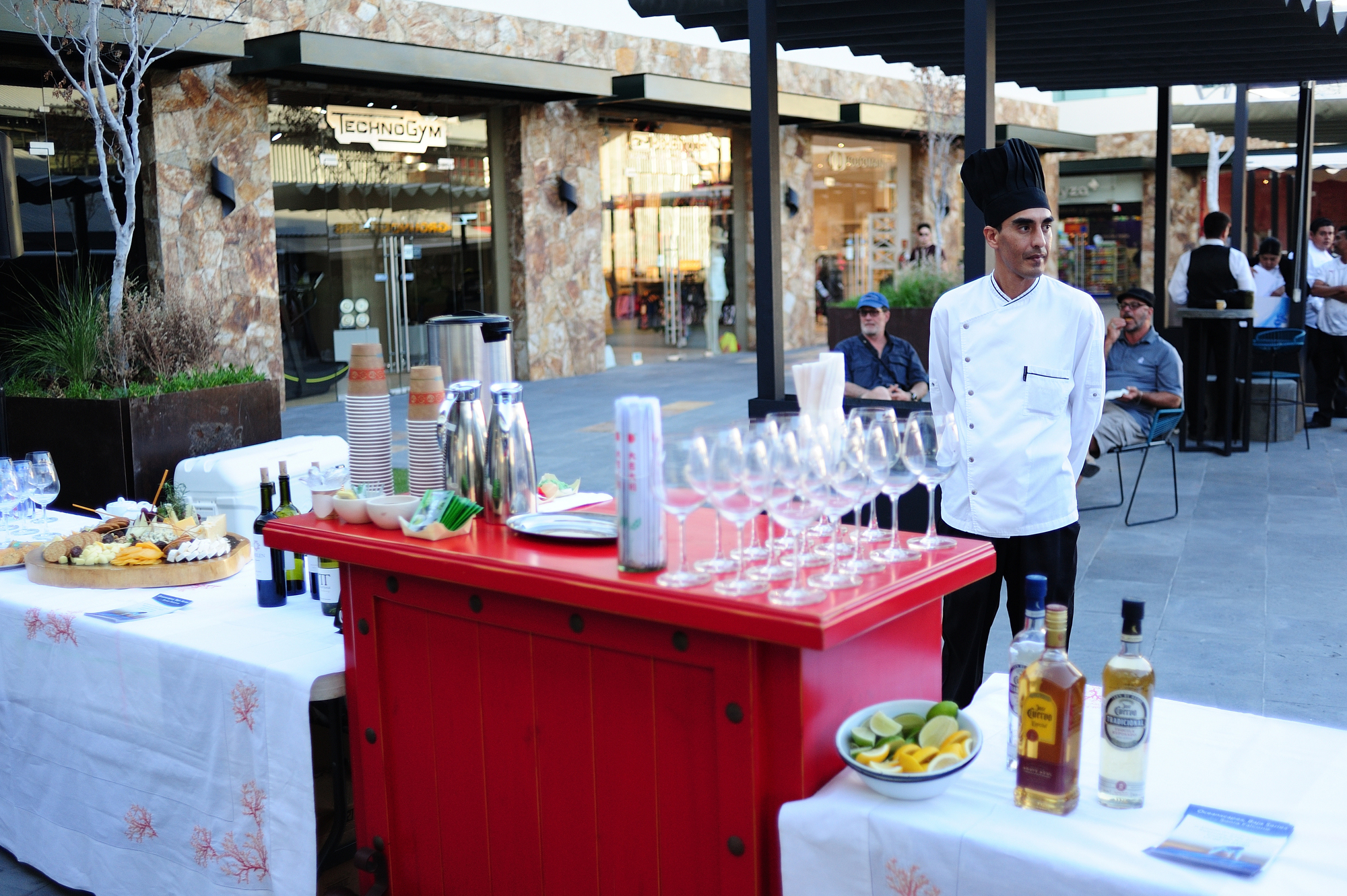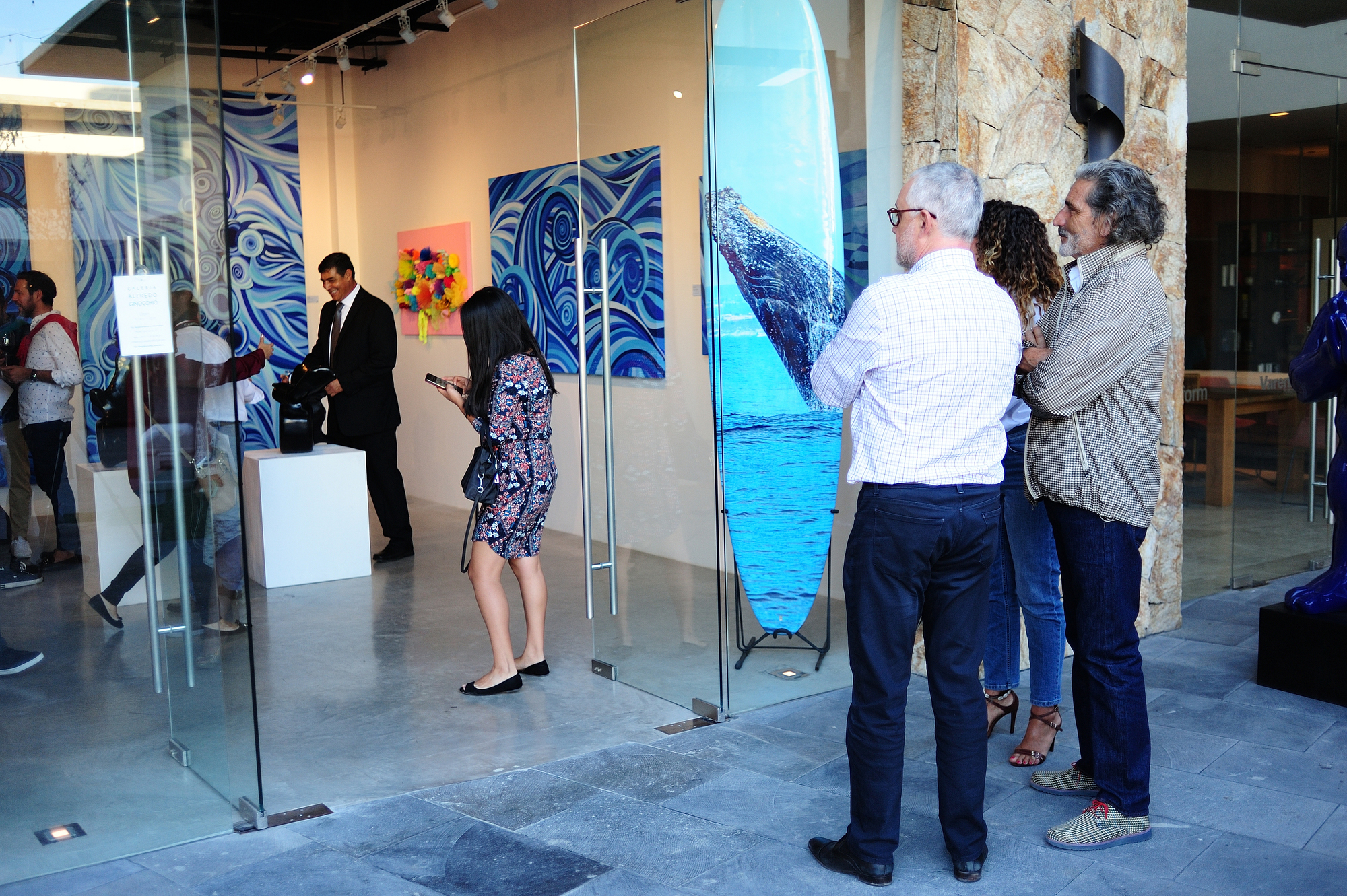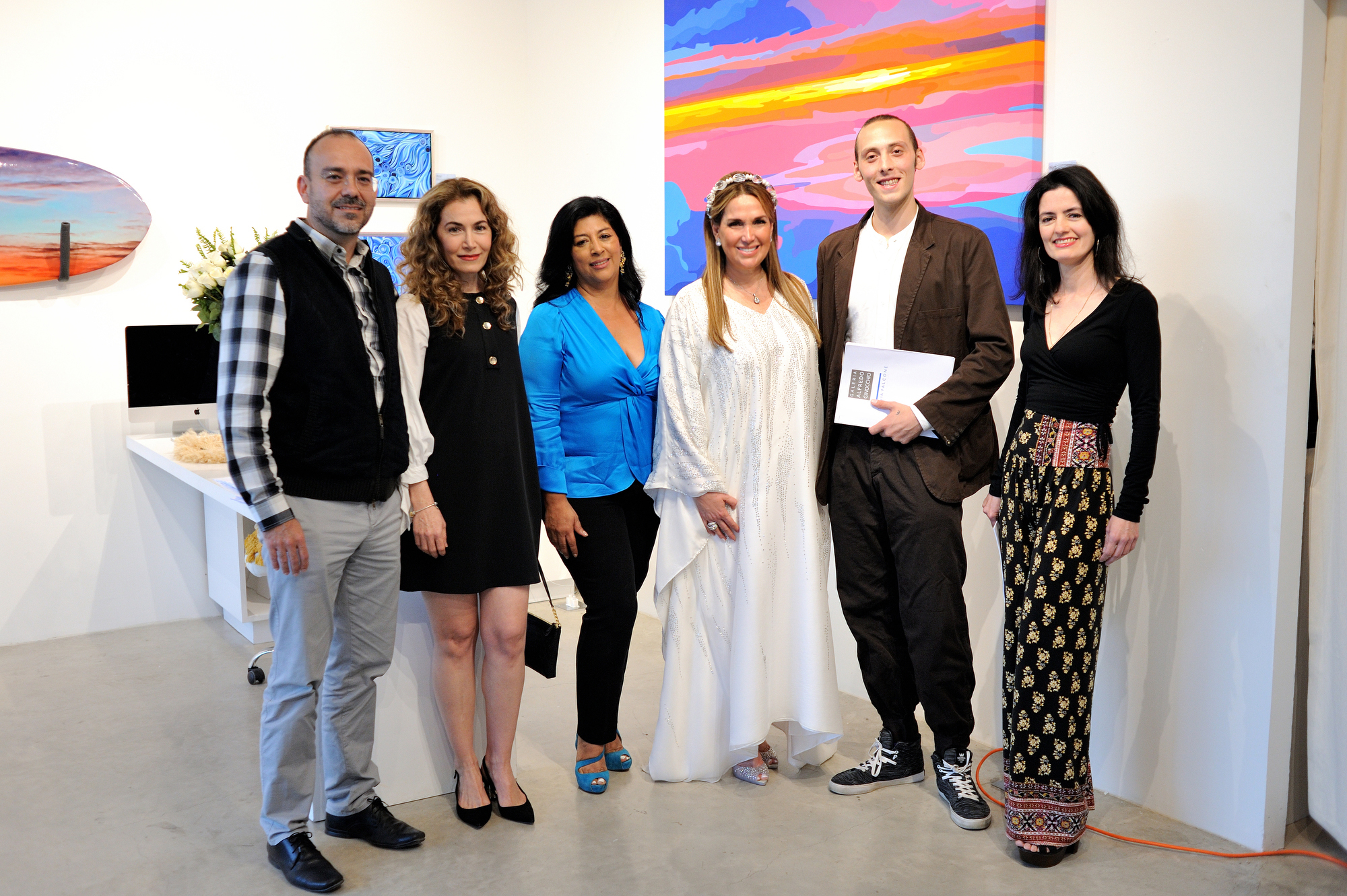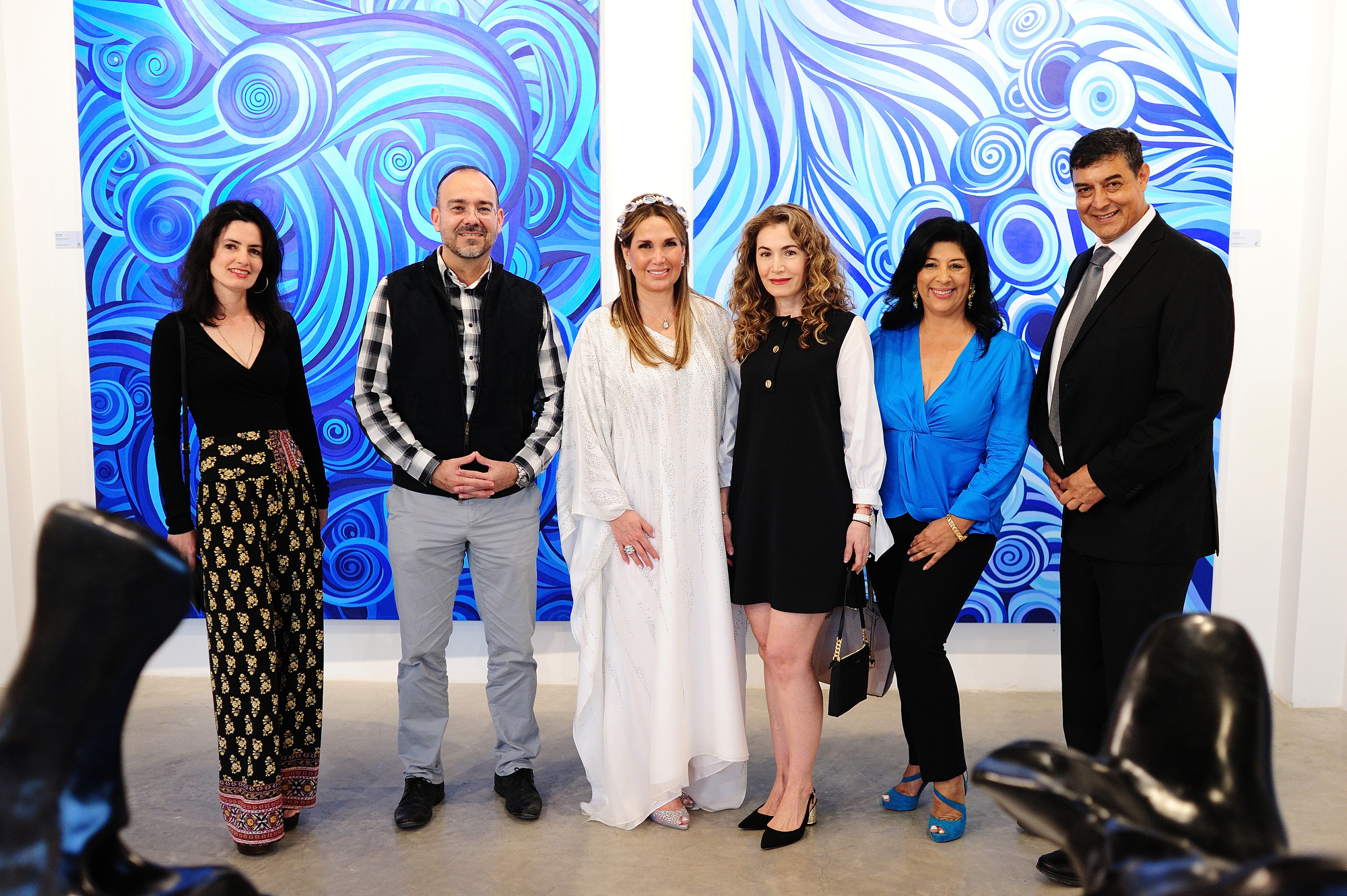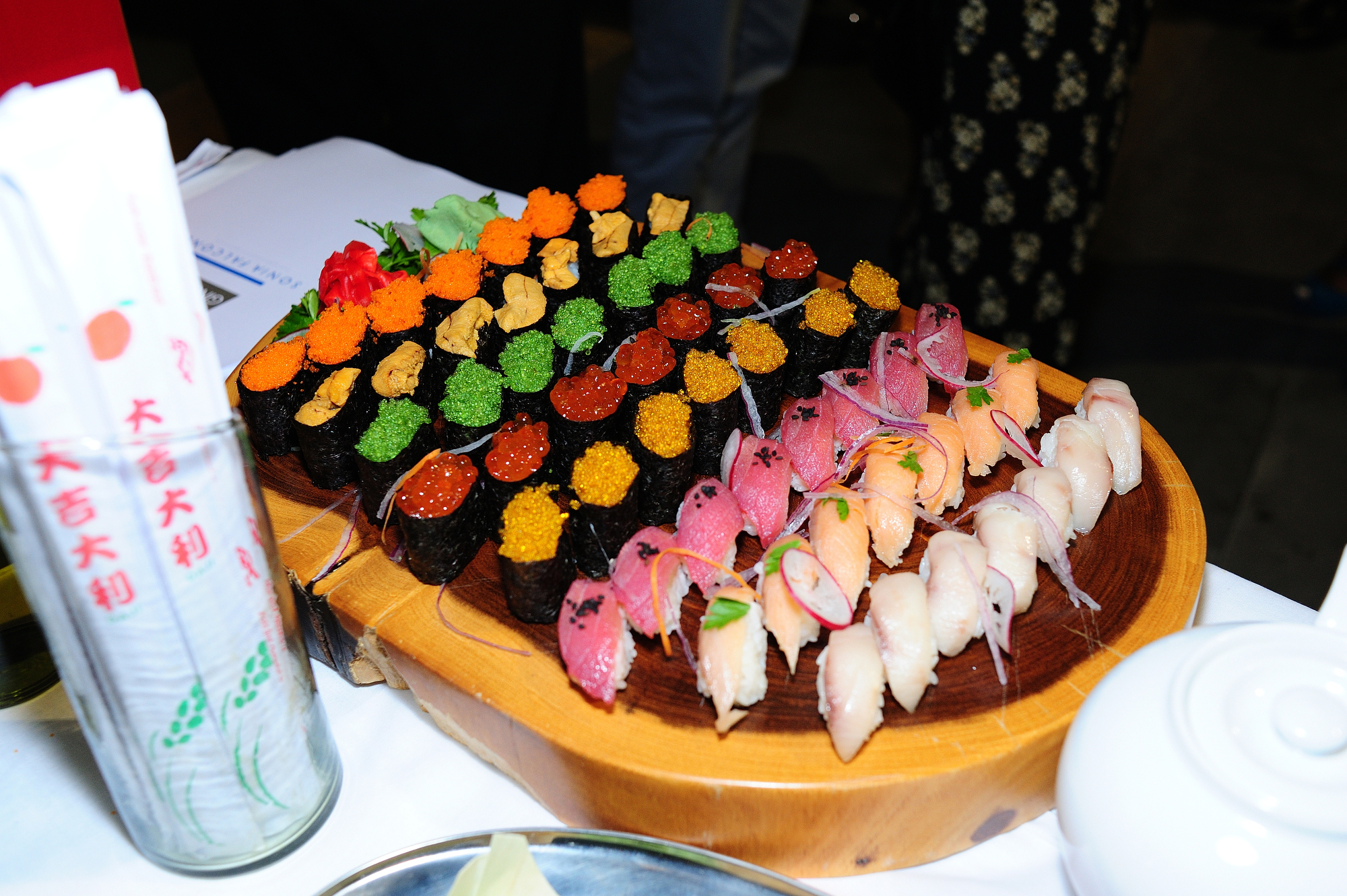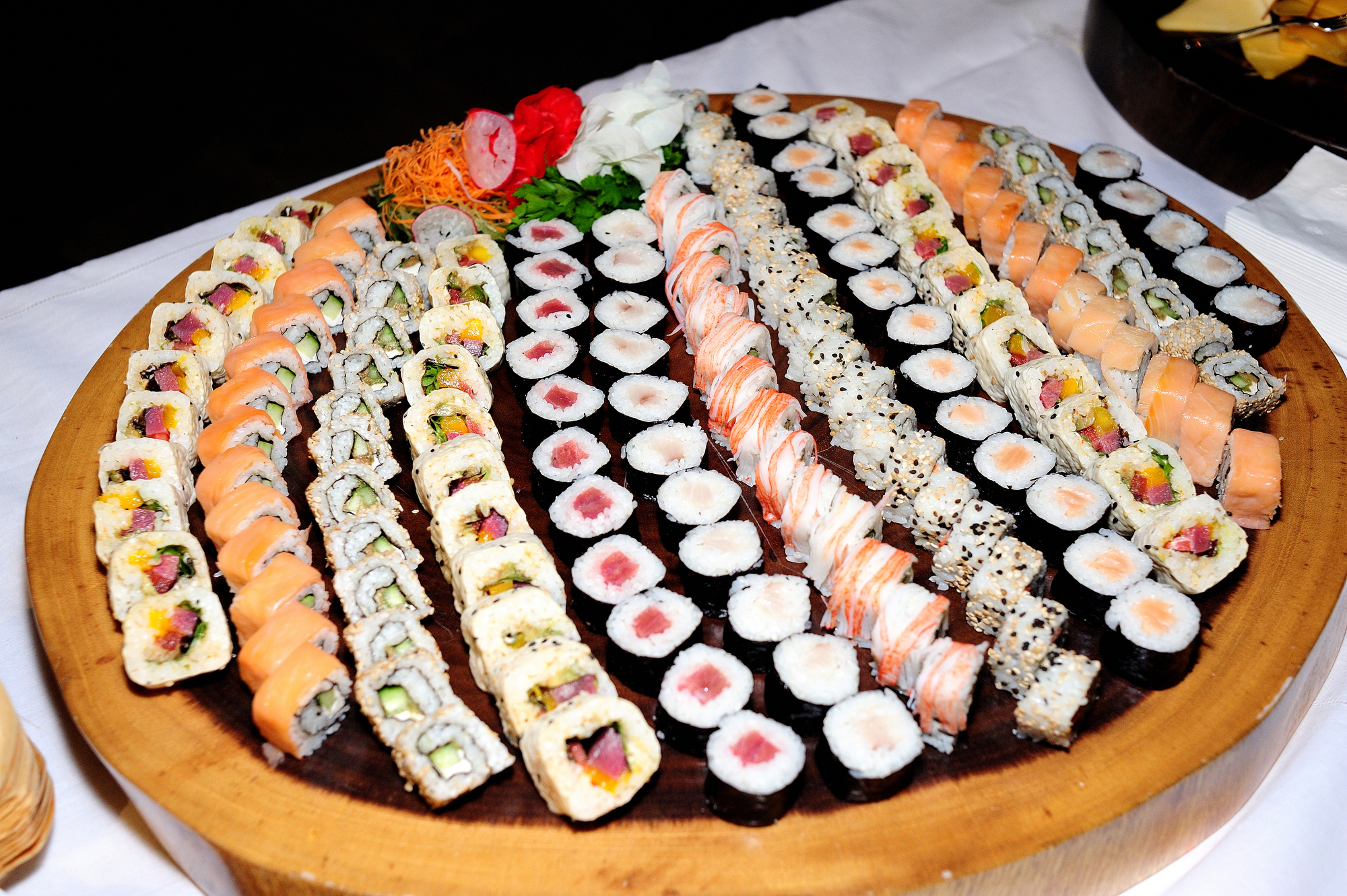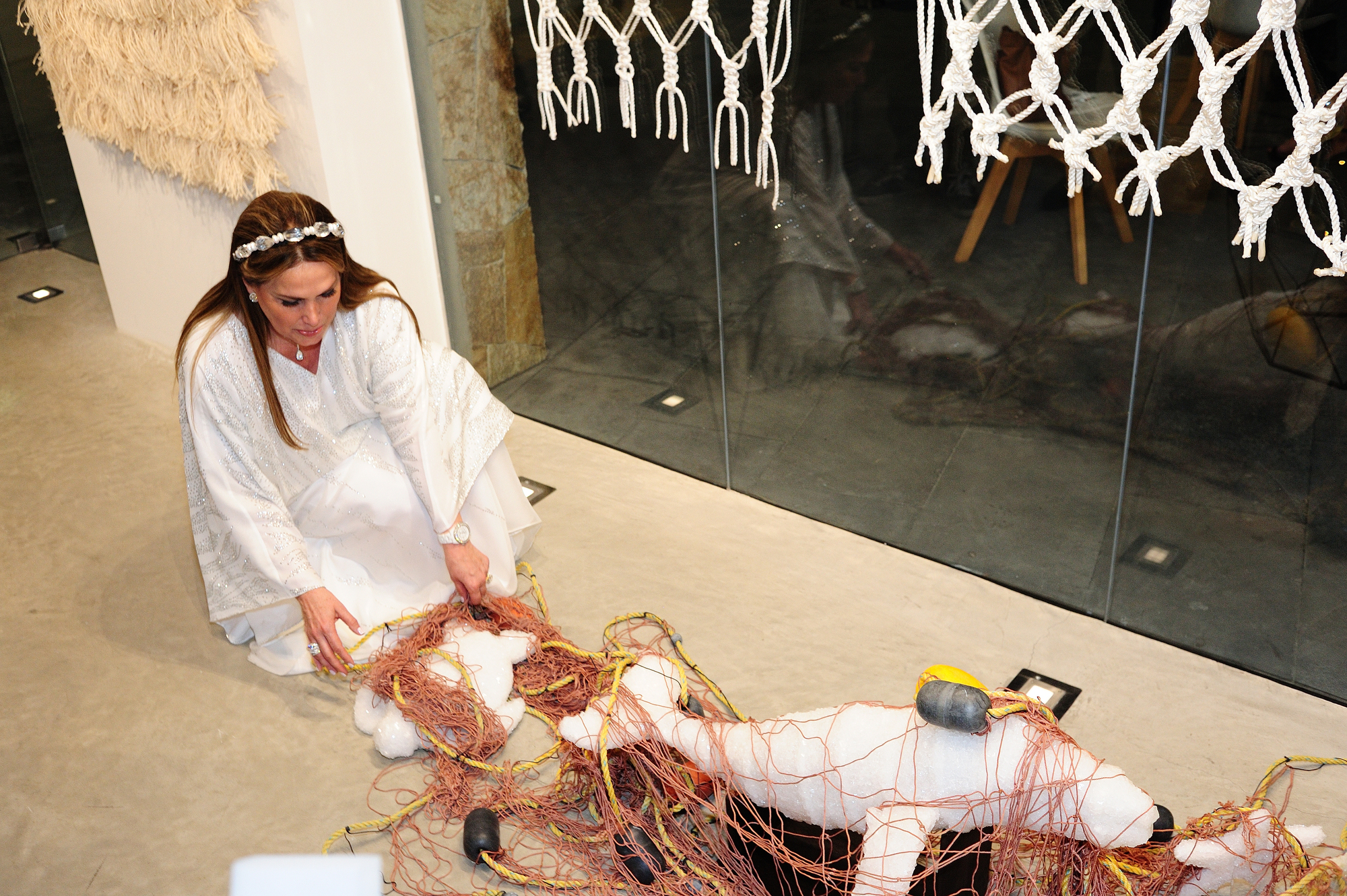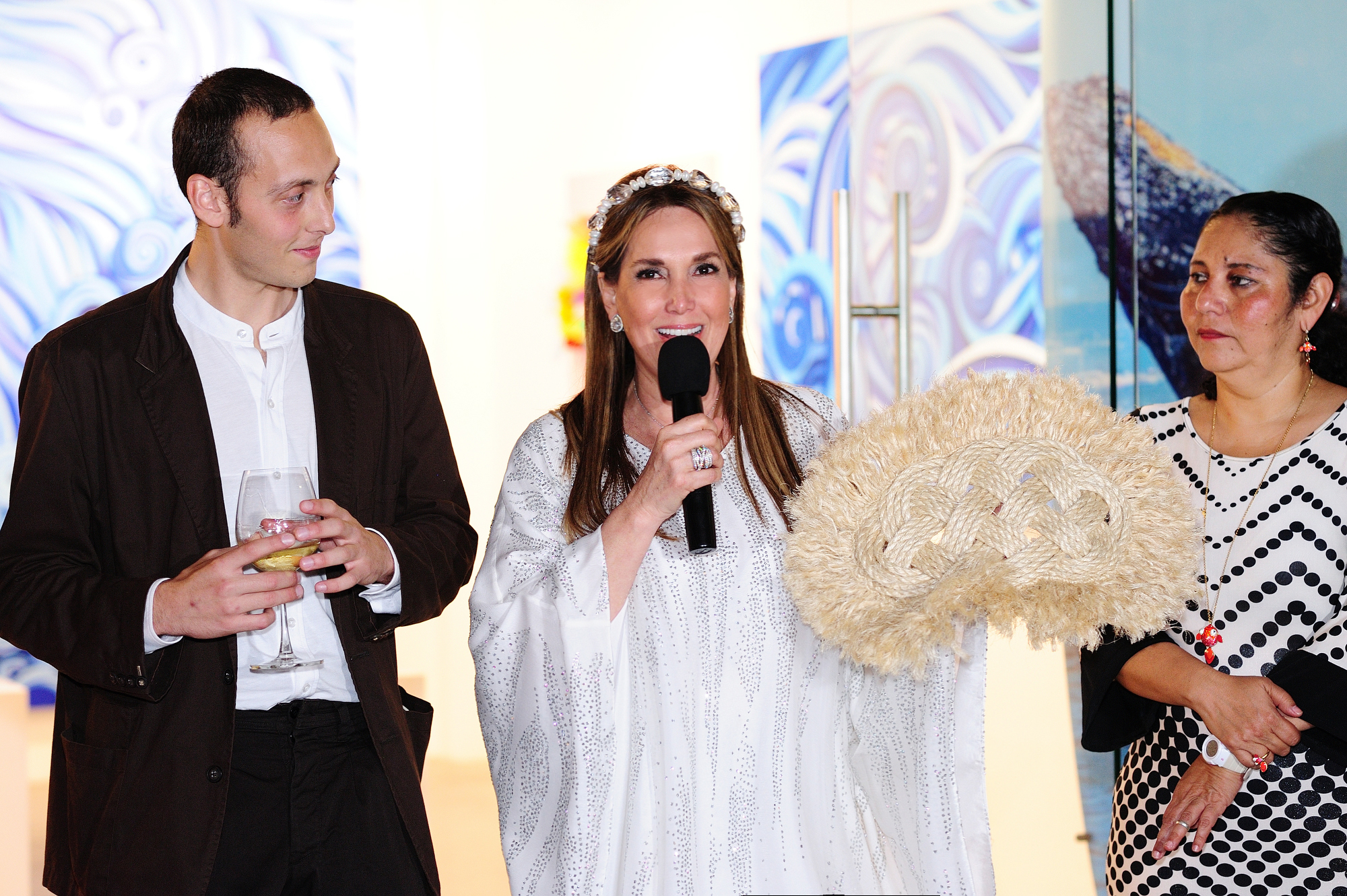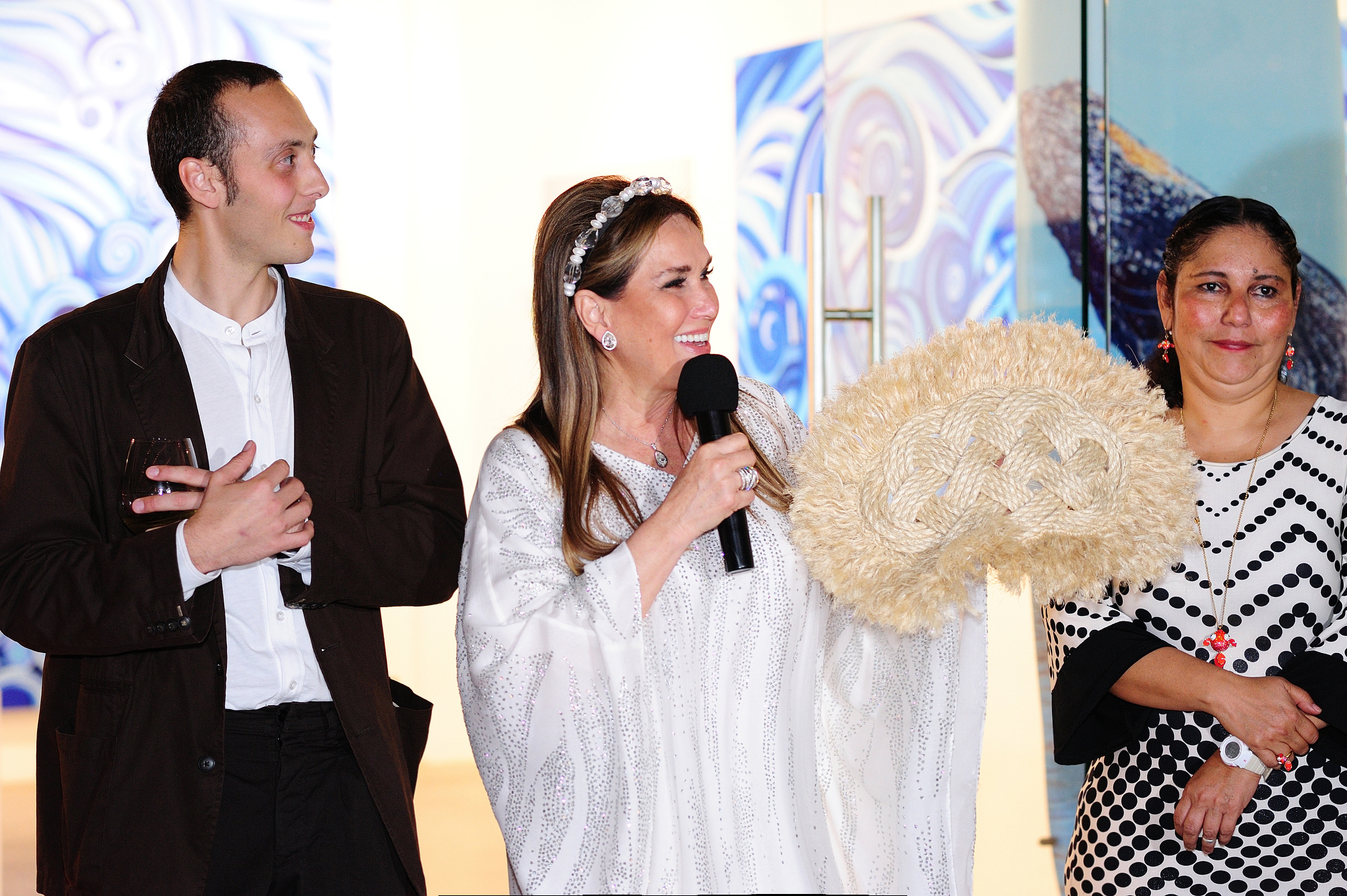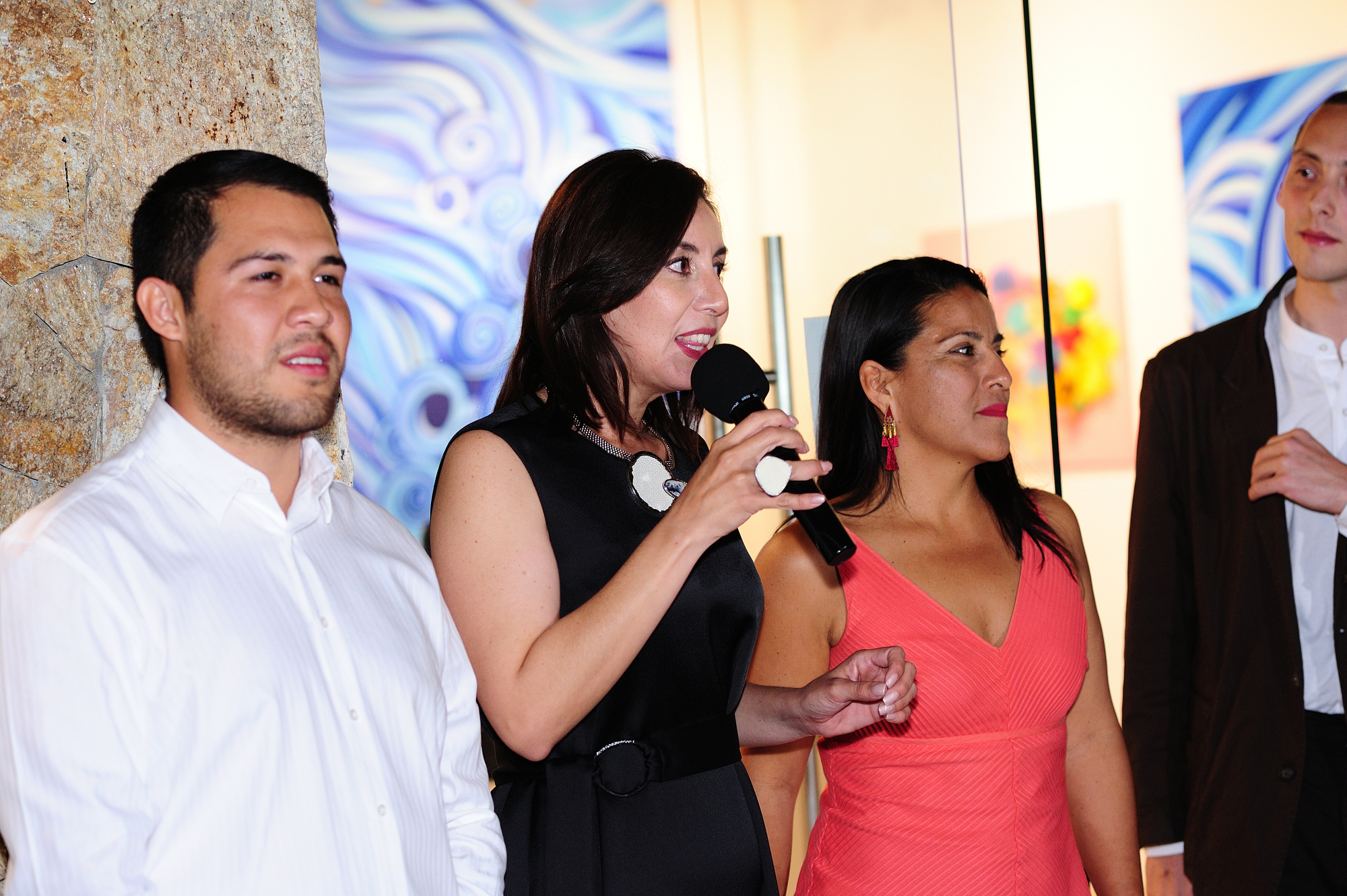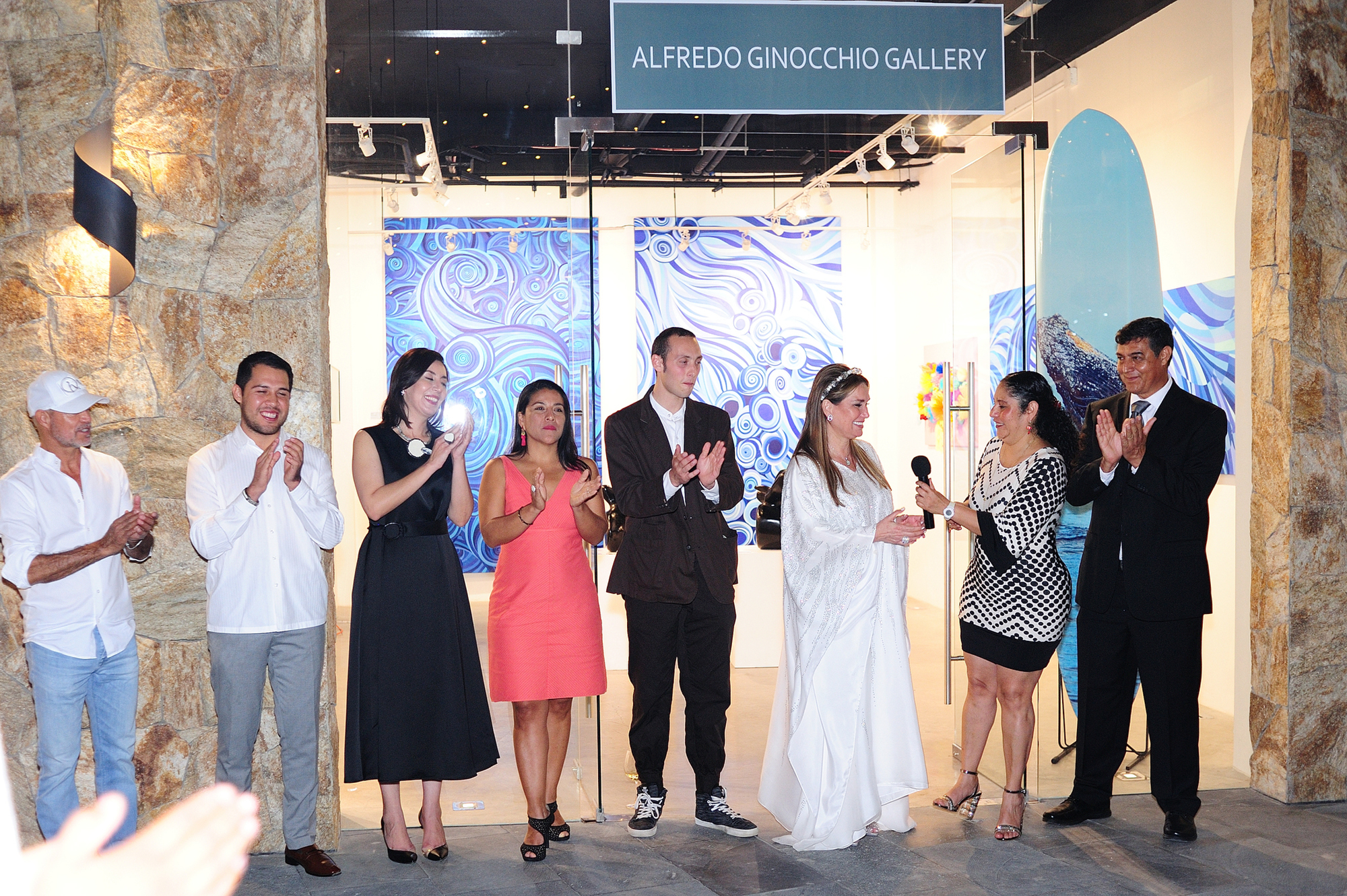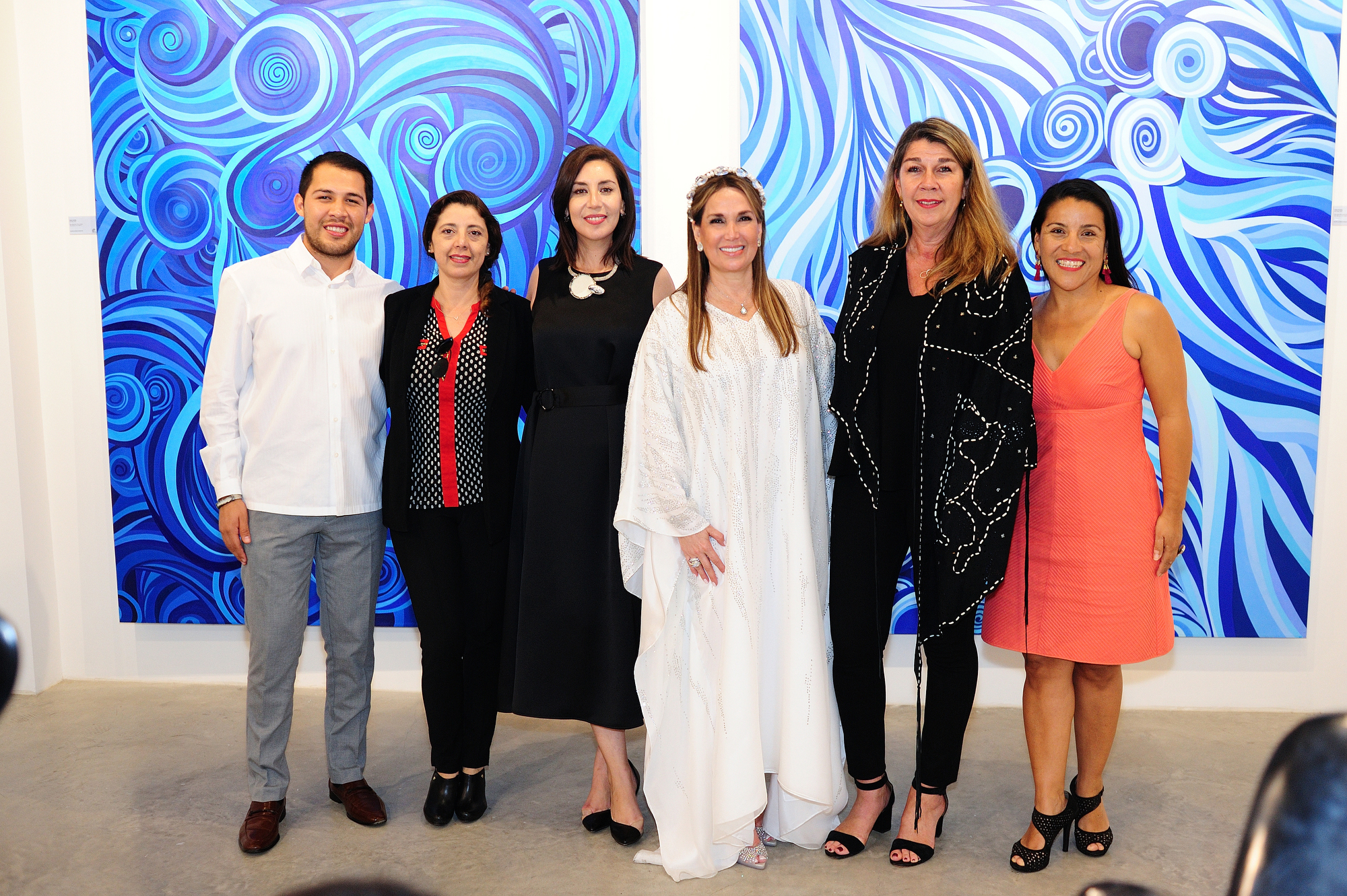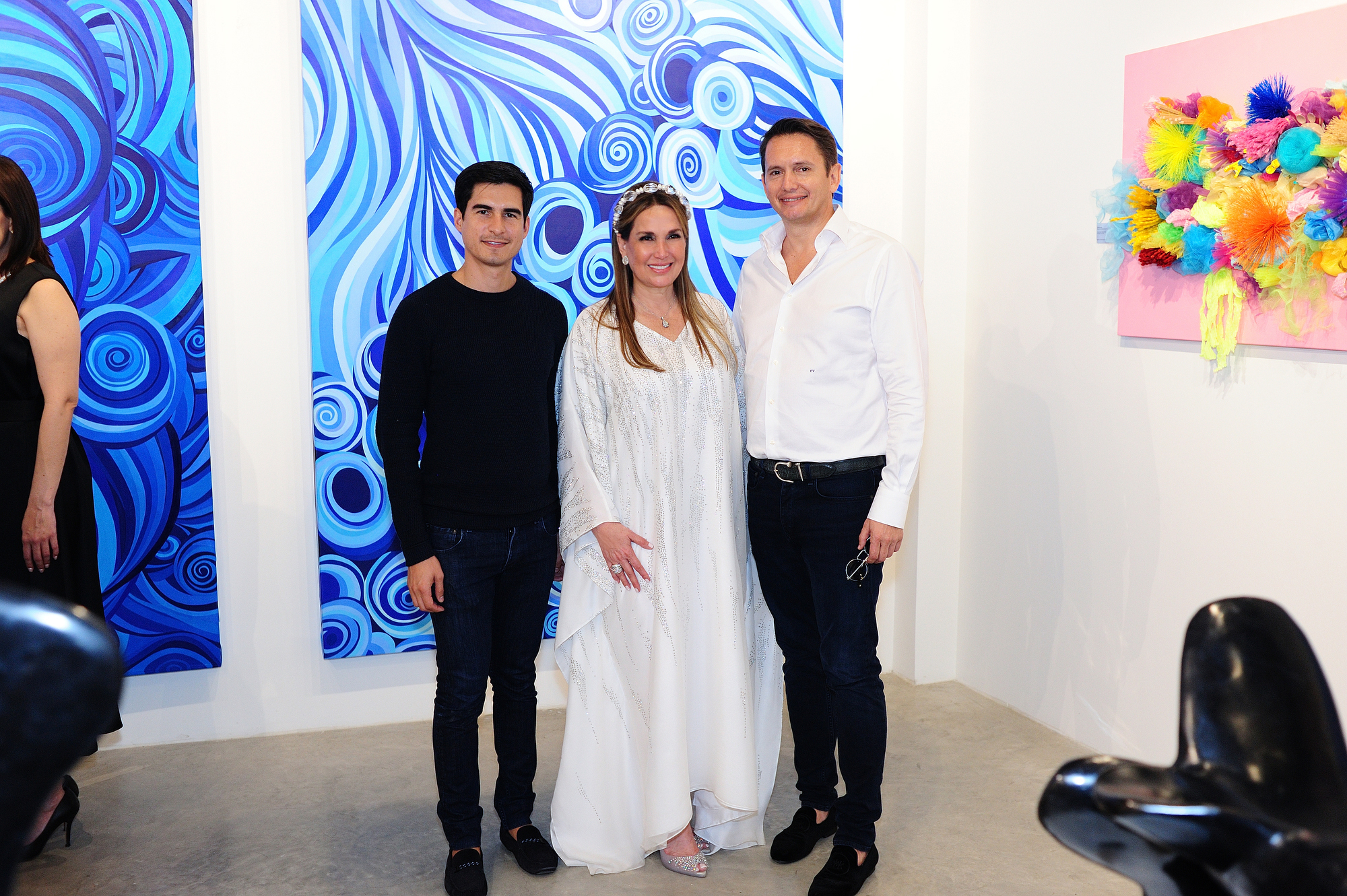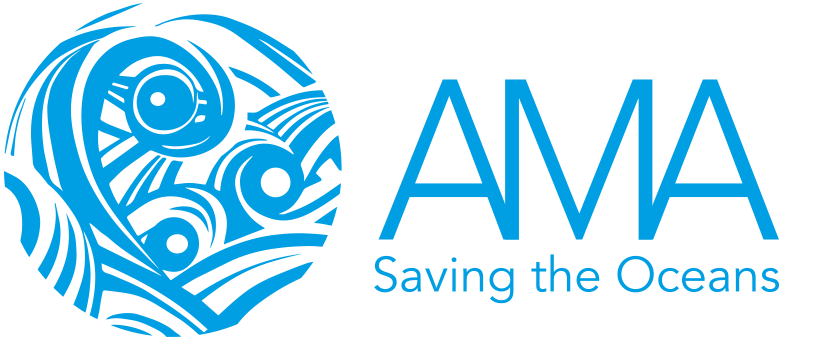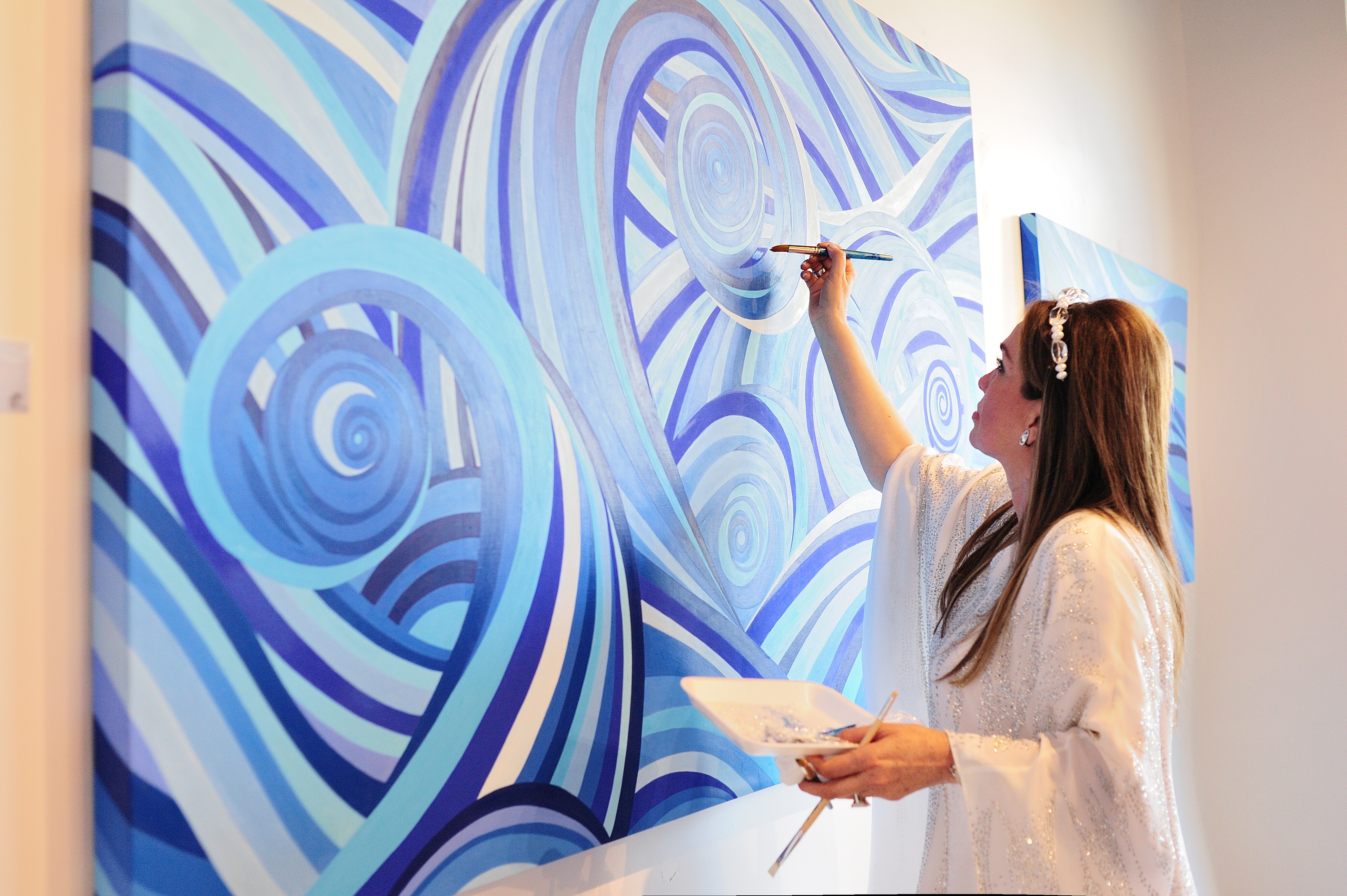

Contemporary artist and AMA Foundation Founder & CEO, Mrs Sonia Falcone, opened her latest art exhibit Oceanscapes Baja Series on 27th February at Alfredo Ginochio Gallery in San Jose del Cabo.
The environment, especially the sea, is a strong, recurrent theme in Mrs Falcone’s artwork and for Oceanscapes the gallery walls were lined with vast paintings of curling waves in every shade of blue as well as colourful “coral” collages, multi-coloured sunset impressions and even surfboards printed with ocean views.
Meanwhile, as a centrepiece sit two installations, inspired by the spine of a whale that was discarded at the Ballena museum in La Paz. Mrs Falcone has replicated this in bronze. On display are two sculptures of lumbar vertebrae at the base and beginning of a series that could be considered, rather than land art, marine art, made with marine elements (or elements that simulate the sea), with a new mode of intervention: the idea of preservation. This lumbar spine shape repeats itself in an identical, successive way but becoming smaller and smaller until it forms an estetic figure with minimalist forms, but profound ecosystemic resonance.
Mrs Falcone says that during the process of constructing the two “columns” of bones she felt pains in her own back – no doubt a reflection of her bond with marine life. The two sculptures demonstrate an impulse which clamors for the survival of other species and for that of the human being. Mrs Falcone’s fascination for natural science is inseperable from her need to contemplate and represent the sea, not only beneath the surface but also from the sea shores. She often meditates about the 200 year potential life span of a whale. In the space of 200 years, “1.5 million whales have disappeared at the hands of man, and as Lucien Laubier warns, in terms of biomass that would equate to the disappearance of 1.5 thousands of millions of human beings. In other words, we are coming face to face with the possible extinction of a species. In the depths of the waters of the Californian coasts and along the migratory routes lie various remains of these great cetaceans that are an irreplaceable alimentary reserve for innumerable life forms. ‘A fallen whale represents a colossal organic input: the place where it dies receives in seconds the food of 4000 years!’
In addition to the bronze vertebral sculptures (and several paintings of the sea or “oceanscapes”) Mrs Falcone has created a paradoxical type of installation made from plastic items such as plastic buckets and cleaning sponges as a striking warning that we as humans must preserve what exists; protecting environments like the ocean from pollution and harm while also recycling the artificial items we have made.
The evening opening of Oceanscapes also marked the announcement of a new AMA Marine Life Museum which will open in San Jose del Cabo in June 2020 under the direction of AMA Foundation, with its first exhibit, La Vaquita Marina Entre Redes – Una Historia que no debe de repetirse”.
The show was well attended by over 150 distinguished guests including Dra. Graciela Tiburcio Pintos, biologist and researcher who studies the whales that migrate to the Sea of Cortez and supervises the regular release of thousands of newborn turtles into the sea, and representatives from the municipality including Rosaura Martinez, from the Institute of Culture and the Arts and Fatima Miranda, Director of Culture.
